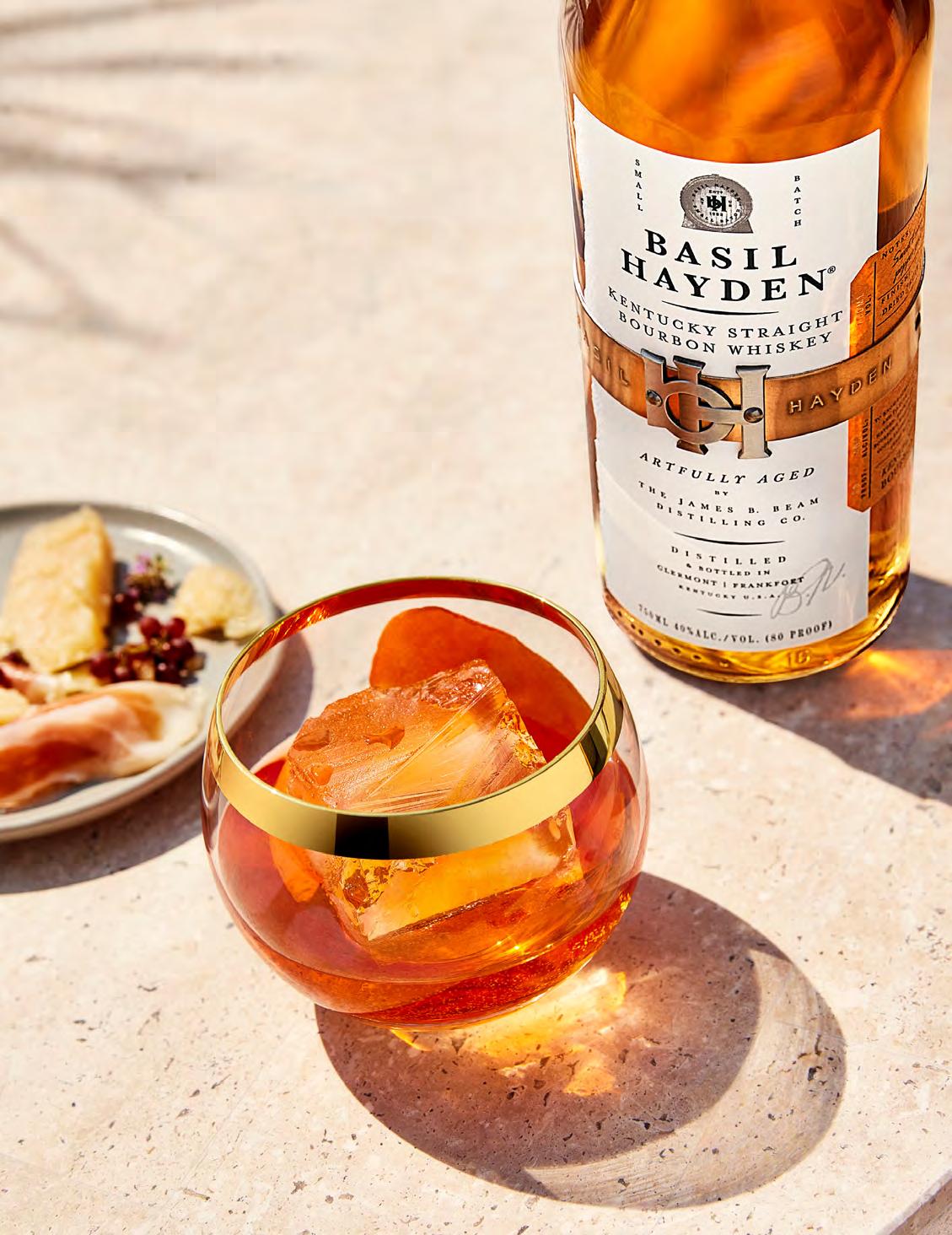



























SIX TIMES AUSTRALIA’S
UNIQUELY CRAFTED WITH SIX REGIONAL MALTS



EDITORIAL
Editor | Ashley Pini ashley@hipmedia.com.au
Assistant Editor | Sasha Falloon
DESIGN
Senior Designer | Jihee Park
Senior Designer | Evelyn Aravena
Jenny Park jenny@hipmedia.com.au
CONTRIBUTORS
Luke McCarthy
Ken Gargett
Adam Ioannidis
Cody Profeca
Melissa Parker
explore DRINKS is published by Hip Media
20 Gillian Parade
West Pymble, NSW 2073
www hipmedia.com.au
ABN: 42 126 291 914
The views expressed in explore DRINKS are of the respective contributors and are not necessarily those of the magazine or Hip Media. Copyright is held by Hip Media and reproduction in whole or in part, without prior consent, is not permitted.

Other explore titles include:
explore Rum
explore Gin, Tequila & Vodka
explore Beer
explore Cider
explore Champagne & Sparkling
explore Wine
explore Cocktails
To order your copy of explore visit: exploredrinks.com
Dominic was honored as a Keeper of the Quaich, a well-deserved recognition that brought a smile to his face. Throughout his career, Dominic’s influence, integrity, and exceptional palate spanned the whisky globe. He also contributed to Drinks International, Malt Whisky Advocate, authored 15 books, and launched his own whisky magazine, Stills Crazy, in e-format just two years ago.

What sets whisky apart and makes it truly special? It’s the people who contribute to its creation and appreciation.
While the ingredients of whisky are relatively simple—barley, water, and yeast—we have managed to turn it into a wonderfully complex drink. However, two vital elements that should be acknowledged are time and the people involved. Not all individuals directly participate in the whisky-making process, but they play a crucial role in spreading the word and allowing us to explore whiskies from all corners of the world. One such person was Dominic Roskrow, our esteemed European editor, who sadly passed away last year.
Born in Lancashire in 1961, Dominic studied Politics and Economics at Durham University before embarking on a journalism career. As an inspirational editor, he took the helm of Whisky Magazine from 2004 to 2006 and contributed to various titles such as Whisky Opus and Michael Jackson’s Malt Whisky Companion. In 2007,


Dominic had a particular passion for Australian whisky and frequently visited Tasmania, often as a guest of local distilleries to assess the quality of their offerings. He was a fantastic advocate for new world whiskies and always eager to support smallscale distilling ventures. Dominic even launched the Wizards of Whisky Awards, aimed at shining a spotlight on whiskies from around the world. I personally met Dominic during a press tour of Portland, Oregon, and was captivated by his sharp wit and his ability to identify and communicate whisky characteristics in a way that simply made sense.
Writer Dr. Nicholas Morgan, formerly of Diageo, remarked, “He had a strong sense of right and wrong and was never scared to call it ‘wrong’ when he saw it, regardless of the consequences. His pioneering work in promoting whiskies from around the world before it became fashionable should never be forgotten by those many distillers and retailers who have benefited from his enthusiasms.”

Explore WHISKY is one of the many beneficiaries of Dominic’s influence. He was a highly respected and cherished member of our team, and his absence is deeply felt. We send our thoughts and best wishes to his wife Sally and their three children.
 Planning this edition of Explore WHISKY in 2022
Exploring world whiskies
Becoming a Keeper of the Quaich
Planning this edition of Explore WHISKY in 2022
Exploring world whiskies
Becoming a Keeper of the Quaich
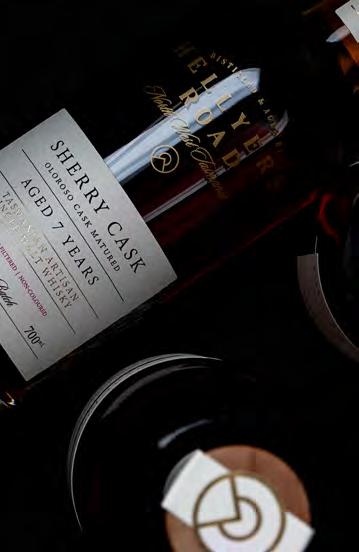


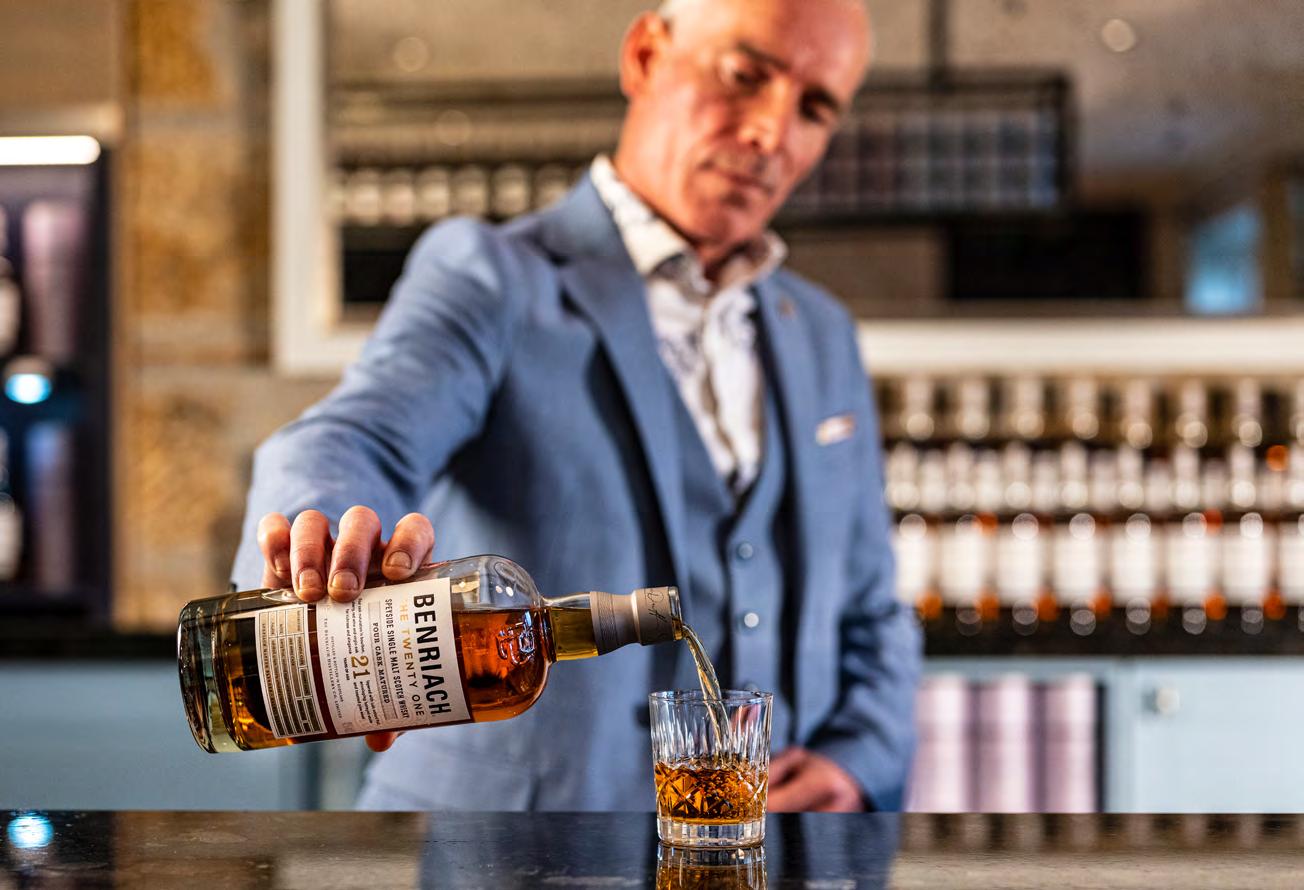

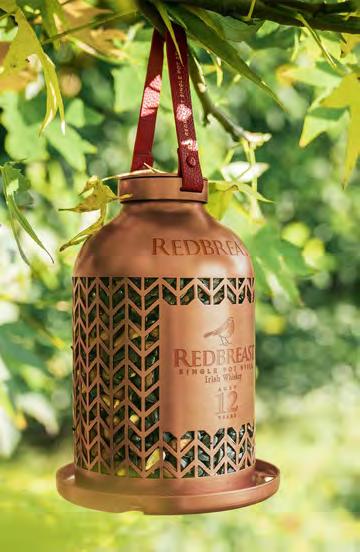

Luke is a Melbournebased freelance writer, author, presenter and spirits judge. Formerly a bartender at the award-winning Whisky & Alement, he’s been the national spirits and cocktail columnist for Fairfax Media and a long-serving judge at the Australian Distilled Spirits Awards. His work has appeared in numerous Australian and international publications, including Whisky Magazine, Scotchwhisky.com, The Spirits Business, The Sydney Morning Herald and many more. His first book, The Australian Spirits Guide, was published by Hardie Grant Books and he’s currently the editor of Oz Whisky Review – the ultimate Australian whisky resource he founded in 2020.”
Adam is the Marketing Coordinator for The Scotch Malt Whisky Society, Australia Branch, and is an avid flavour enthusiast and storyteller — in whatever form that may take, having authored various short stories and short film scripts over the years. Other than fullflavoured whisky, Adam also enjoys fiction, Hi-Fi, cinema, and video games. If you’re lucky enough, you might find Adam hanging around Whisky & Alement and other bars around Melbourne City.
Melissa has been writing about drinks for 25 years. In this time she ran her own drinks specialist communications agency and edited both of Australia’s leading drinks trade publications. She was a Professional finalist of the Vin de Champagne Awards and is currently attempting WSET Level 3. Her most cherished drinking memory is sharing a bottle of Domain de la Romanée-Conti Échezeaux 1995 with the late great Len Evans. Today she is managing editor of Drinks Trade print magazine and digital platform.



Ken was born and bred in Brisbane, Queensland. A non-trendy, perfectly happy childhood, in a family convinced alcohol meant instant condemnation to Hades. Convinced he is a grave disappointment to his family; his mother once chastised him for drinking Pol champagne, disgusted he’d drink anything made by a Cambodian dictator. When not writing, you’ll find Ken fly-fishing for trout in NZ and bonefish on the flats of Cuba; travelling; following a variety of too-often dismal sporting teams –Queensland Reds rugby, Washington Redskins, Arsenal and our once glorious cricket team.
Ashley founded Explore WHISKY in 2014. Whisky has been his greatest focus over the last ten years for which he was recognised with the honour of becoming a Keeper of the Quaich in 2022. A regular visitor to distilleries in all corners of the globe, his frequent flyer status is mostly due to his love of liquid gold.

Cody is our nonresident (currently studying abroad) writer whose understanding of everything drinks promises a shining future. Cody joined HIP Media via a friendly local bottle shop owner, we thank you Tom from Toms Cellars (wonderful range of whisky btw) in West Pymble Sydney.

Sasha is our Byron based drinks expert, passionate about quality produce and drinks culture. She launched Drinks World in Hong Kong, took it to Singapore and Dubai before bringing it home to Australia. Sasha is the driving force behind the T25 Bartender Awards and knows her way around a cocktail menu.

CELEBRATE
GREAT TASTE WITH GREAT TASTE


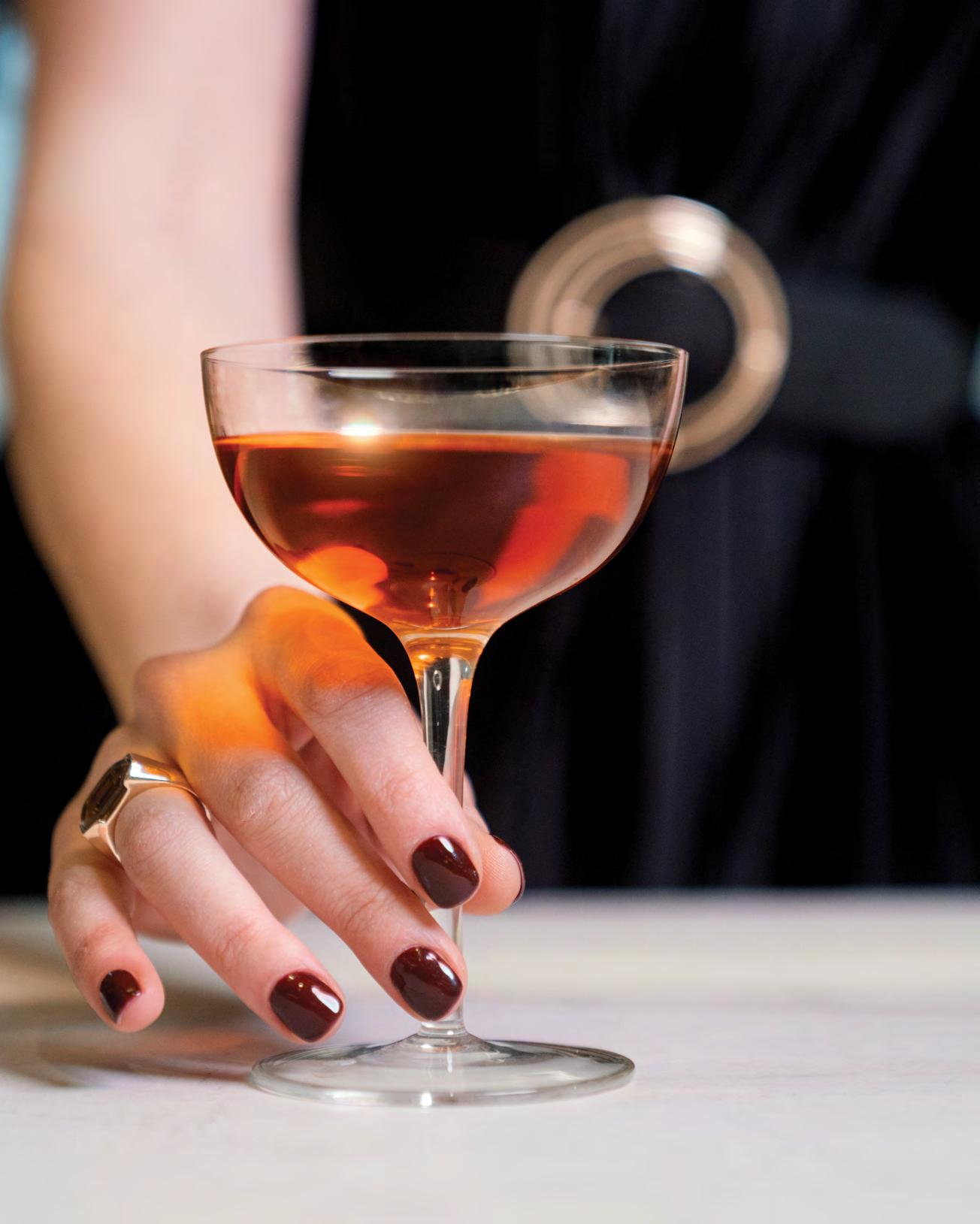

Dave Broom knows a thing or two about spirits and especially about whisky. Among his many publications, in 2017, he released “The Way of Whisky: A Journey Around Japanese Whisky”. It was a brilliant book, opening up the mystical world of Japanese whisky in much the same way Commodore Perry supposedly opened up the nation back in the 1850s. Anyone interested in whisky, and especially Japanese whisky, simply must have a copy.
Now Broom has done the same with Scotland and its many legendary whiskies in “A Sense of Place: A Journey Around Scotland’s Whisky”. At around $70, it is the best bargain in whisky on the planet. Dip into your favourite distilleries or regions or settle back with a glass of your finest and revel in this voyage through both famous and obscure whiskies and distilleries. Histories, the people, stories and great photography, you will know and love whisky more than ever after reading this book.
I would say a new broom sweeping through the world of whisky, but that might be too easy.
For something more prosaic but useful is the Malt Whisky Companion for 2022 ($30), originally begun by the late Michael Jackson but now continued by other experts, including Dominic Roskrow who has written for Explore in the past.
As we have seen, one of the variables essential in the creation of good whisky is the type of cask. The use of old sherry casks will be something with which any lover of whisky will be all too familiar. Put simply, oak is crucial to the whisky you love.
First fill barrels can offer a woody emphasis which can be overwhelming. Refill casks have lost some of the oaky impact and can provide a more subtle nuance to the spirit, but the more they are used, the less the influence.

The type of oak used for whisky is traditionally American white oak or European oak. When it comes to whiskies, the latter is considered to be more spicy and powerful, while the American oak is seen as sweeter and more gentle, more likely to give notes of vanilla and caramel. Each distillery will have a preference. Macallan, for example, are known to have a preference for European oak from Spain which is between 100 and 125 years of age, as the older trees provide a much tighter grain, but they also use American.
Another type of oak has been gaining in popularity, as strange as it might seem – Mongolian oak. Whisky lovers are more likely to know it as Mizunara oak, popular especially with Japanese whiskies. The trees used tend to be between 200 and 500 years old. Because of the porous nature of the oak, coopers need to find straight trees, apparently a lot more difficult than you might imagine. It is said to imbue the whiskies with a spice and sandalwood note. Even in Japan, Mizunara casks form a tiny percentage of those used, but its influence far outweighs this. The use of Mizunara is becoming more popular in both Scotland and America.
Is there a more legendary Japanese whisky than Suntory’s Yamazaki 55-Year-Old, the oldest known Japanese whisky. And especially thanks to the contribution by Shinjiro Torii, who will be well known to most whisky lovers. In case you are not familiar, Torii established Suntory back in the early 1920’s. He had been selling imported wines and later, ports made by himself.
In 1923, he established the Yamazaki Whisky Distillery near Kyoto. Within a few years, he was selling the first Japanese single malt, the ‘Suntory Whisky Shirofuda’. Torii sought out Masataka Taketsuru who had been sent to Scotland to learn the process of whisky distilling but on his return, discovered that his employers had changed direction. The pair established the Japanese whisky industry but, over time, differences with regard to ageing the whisky and matters such as levels of peat saw the duo part ways. Taketsuru went off and established Nikka.
In 2020, Suntory allocated 200 bottles of this extraordinary whisky for sale – half via a lottery in

Just as 007 will forever be linked with the ‘shaken, not stirred’ Martini, despite consuming a vast array of other drinks, so too will Ernest Hemingway be linked to rum and rum cocktails, like the Daiquiri and Mojito (even though he may never have actually had a Mojito in his life). But he, like 007, consumed broadly and eclectically. Think a jug of Spanish red at the bullfights, Campari, Negronis, G&TS and more. He was a great lover of champagne.
Papa and whisky? It appears in his works although far less than one would assume. In the story, ‘Three Day Blow’, hero Nick Adams attempts to get over his broken heart with a ‘bottle of whiskey’. Other than that, whisky, whiskey and bourbon are decidedly absent from his novels and stories, with the exception of a bourbon-inspired Mint Julep in ‘To Have and Have Not’. This is a little curious as his own drinking habits saw him regularly enjoying bourbon,
Japan and the other half in international markets for the not unimpressive price of US$27,500 each. They may have under-estimated the appeal. Two months later, one was sold at auction in Hong Kong, achieving a mindboggling US$795,000 for the bottle. Another is currently for sale in London at E570,000 (excluding tax).
The Yamazaki is composed of three casks of single malts distilled over several years. The first cask was distilled in 1960 and aged in Mizunara oak; the second and third distilled in 1961 and 1964, then
aged in White American oak, by Suntory’s second Master Blender, Keizo Saji. Keizo was the son of Shinjiro Torii. He was also a famous patron of the arts in Japan during his life, which was made possible as, before he died, Forbes magazine had listed him as one of the ten richest men on earth. Who said there was no money in alcohol? Subsequent Master Blenders, including their third Master Blender Shingo Torii who was Shinjiro’s grandson, have all contributed. They selected the three casks.
A tasting note? In your dreams. And mine.
his favourite apparently being Old Forester. In fairness, a generic ‘scotch and soda’ is not an endangered species in his works – even ‘scotch and Perrier’ in ‘Islands in the Stream’, which we learn is Old Parr.
That, of course, has not stopped tribute releases and more, doffing their cap at Hemingway.
The Hemingway Whiskey Company has recently been formed, the founders including some serious talent – seventh and eighth generation distillers –and a link with Angel’s Envy. They have released a limited edition rye whiskey. The team had previously released a rum, Papa’s Pilar, which is named after Hemingway’s much loved boat. You can see the boat if you visit his former finca outside Havana, surrounded by the gravestones of his favourite dogs and apparently a large number of unnamed cat graves. I didn’t ask (well, I did but they were not telling).
The first release includes 1,000 numbered and signed bottles (presumably not by Papa – no, signed by the members of the Call family who are behind the project). You may have to search for it here, but surely it is better to have, than to have not. Or something like that.

It is a bit like who can eat the hottest chilli. Or who can brew the most alcoholic beer. Who can distill the most heavily peated whisky.
Peated whiskies tend to divide spirit lovers. Some truly detest them, while others, sometimes known as peat freaks, hold them in adoring reverence. The Scottish island of Islay is seen as the Mecca of peated whiskies, but there are others. Personally, I love the style and enjoy them every opportunity I get, but the important thing is not how ‘peated’ they are, but whether they are in balance and are good whiskies. Some see them as the epitome of great
whisky, incredibly complex and alluring. Others find characters like gasoline, cigarette ash, road tar, band-aids and burnt tyres. One man’s burnt tyre…
What is ‘peated’ whisky? Basically, the whisky is imbued with a smoky, sometimes campfire-like character, which comes from compounds released by the peat fires which dry the malted barley. The longer the barley is exposed to the peat smoke, the stronger the flavour.

Peat was originally used for these fires as in many parts of Scotland, it was the only fuel available. Some distilleries, especially in the Lowlands and Speyside, preferred to move to coal/coke when it became
available, and we do not see the smoky character in their whiskies. Coal tends to burn more consistently and is easier to use. Some, especially places like Islay, maintained the tradition.
So how do we measure peated whiskies? PPM is used – phenol parts per million, which refers to the phenols in the malt, not the end product. Lighter examples can sit around the 0 to 20 PPM mark, but the extremes can go over 300. If nothing else, this shows just how powerful those phenols are – so noticeable at such low ratios.
The whisky generally seen as the smokiest of all is the regular release of Bruichladdich’s Octomore. Release 8.3 hit a massive 309 PPM. Release 6.3 made 258, while others sit around the 160 to 170 mark. It is important to note that there is more to it than just PPM. Distillation methods and ageing can make a big difference in just how peaty a whisky tastes.

Other whiskies with an emphasis on smoky and peaty notes include Ardbeg (especially their Supernova), Laphroaig (their whiskies vary but usually sit around the 45 PPM), Lagavulin, Talisker, Port Charlotte and Highland Park. Peated whiskies are not limited to Scotland. Many regions have examples.

Old is good, right? Unless we are talking fish in the fridge, old is what everyone wants. Perhaps not, but it certainly seems so when it comes to whisky. The older the better (and definitely, the older the more expensive). As far as trends in the world of spirits have gone in the past decade or two, few have matched this. Once, bourbons seemed only interested in being good, not old, until makers like Blantons and Pappy. Now, everyone is seemingly on board. We have the crazy situation where spirit lovers now dismiss the bottles they once loved because they are no longer ‘old enough’.
From Scotland, it seems every distillery is finding ancient barrels in the corners of old buildings which have been happily maturing away for decades. They are bottled in lavishly ornate decanters and sold for eyewatering amounts of money. And everyone is happy, expect for those who missed out on these rare releases.
Well, not everyone, it seems. A recent article in an American wine magazine suggested that these might just be the ‘emperor’s new spirits’,
if I may be permitted to mangle Hans Christian Anderson’s old folktale.
Their view is that spirits which do benefit from ageing have a sweet spot and it is rarely anything like the Methuselah-like period that some of these fancy bottlings are given. Once past it, the spirit declines, not improves, with further time in barrel. This view is not restricted to whisky but includes rums and spirits such as Armagnacs. Once we get past the sweet spot, we are simply enjoying the oak tannins picked up from the extensive ageing. Okay, they concede that you are also drinking history and scoring bragging rights, but of course, those are far more important to some than others.
For Scotch whisky, they are looking to a period between around 12 to 21 years, perhaps 25. Rum and Bourbon comes around on a shorter time frame, usually 5 to 12 years. The charred oak designated for Bourbon ages the contents at a quicker rate than non-charred. Climatic conditions can also influence the period required – the climate/humidity in the Caribbean is a little different to what is found on farflung Scottish islands.


Of course, in the past, these ‘sweet spots’ tended
to be the maturation periods for these spirits. Then the demand for ever-older locked in and things have never been quite the same.
Personally, those venerable old spirits don’t come along quite as often as one may wish and the occasion often overshadows all (plus, who wants to tell their host that the extremely old and hideously expensive whisky they have so generously opened is rubbish), so I, like most of us, are not quite the authorities on them that we may wish. I look forward to continuing the education.
For those who believe that the ageing has gone too far, I would suggest that every barrel is different and this is where the skills of the blender are crucial. If a barrel has gone beyond the line, either discard it or blend to counteract it. New barrels age their contents at different rates than occurs with older oak. It is considered that new barrels age their contents at a quicker rate than happens with the older examples.
Also, there are exceptions to every rule. One suspects that if all these old bottlings had proved to be the disasters our friends suggest then distilleries would have long given up releasing them.
Whatever your views, I can’t see too many of us turning down the chance to sip on an ancient bottling.

It is all a bit like waiting to see if you can get tickets to his next tour. Some years ago, His Bobness, the legendary Bob Dylan, for many the greatest songwriter to have ever lived (and the only one with the Nobel Prize for Literature, so it must be true), established a Bourbon project. These days, every time one turns around, some wannabee celebrity is releasing a champagne or wine or spirit. Dylan, of course, transcends all these C listers. Not only the voice of his generation, but the man stood next to Martin Luther King when he told the world, ‘I Have a Dream’.
More importantly for our purposes, Dylan’s bourbon, Heaven’s Door (any half-baked fan will immediately recognise the reference to that wonderful song from ‘Pat Garrett and Billy the Kid’, ‘Knockin on Heaven’s Door’) has established itself and is anything but some short term publicity stunt.
While the early releases were, out of necessity, sourced from other distilleries – bourbon, rye, double barrel whiskey – that will change over time.

As well as the standard releases, we have the Ten-YearOld bourbons and almost inevitably, the Bootleg series (fans will understand). They come in ceramic bottles, covered with paintings by Dylan. The first of the Bootleg series, neatly labelled Volume 1, was a 26-year-old whisky matured in Mizunara oak from Japan, although the origins of the whisky were never declared. Volume 2, a 15-year-old bourbon, which was finished in Jamaican rum casks, and Volume 3, a cask-strength 13-year-old bourbon finished in Vino de Naranja barrels from southern Spain. Volume 4 is available for pre-ordering from the US site. It is a wheated bourbon, 11 years, and finished in Scotch whisky casks from the island of Islay.
The standard releases sit around the A$200; the 10-YearOld around A$2,000 and I have no idea what one would pay for the bootlegs here – but then, wasn’t that always the way with bootleg recordings? To be honest, I suspect you’ll have more luck finding that ticket.
Never too early to start looking for that special something for the whisky lover in your life. Or perhaps just to treat yourself. Okay, a good bottle is obvious, but there are options.
Glasses are always welcome. A good glass is as important for whisky as it is for wine. And the choices are just as varied. The ‘Glencairn glass’ is seen by many as essential for tasting top whiskies. The base allows for swirling while the narrow top focuses the flavours and aromas. It is found at distilleries around the world and is also popular with Scottish whisky tasting groups. What better recommendation than these.
Perhaps you prefer to get your best ‘Mad Men’ on and use a ‘Rocks’ glass, basically a tumbler which is elegant and almost retro. The Norlan glass has a
double wall which assists in preventing the warming of the spirit. Others will select famous names like Waterford Crystal and Baccarat.
Personally, if we move on from such a prosaic topic as glasses, who would not want a Redbreast Bird Feeder Bottle. This Irish distillery has produced stylish birdfeeders in the shape of one of their whisky bottles. Sign me up!

Another Irish distillery, Jameson, offers a Holiday Host Gift set. Everything you could possibly need to make whisky cocktails – shakers, spoons, a hip flask, glasses, strainers and even ‘festive whiskey bottle lights’. If you are just after a hip flask, plenty of options there, although outside a BBC period drama, when was the last time you saw someone drinking from a flask?
And of course, as we mentioned, if none of these appeal, a good bottle never goes astray.
Surely there is no bourbon on earth, and very few spirits, as well known though rarely enjoyed as much as the bourbons known as ‘Pappy van Winkle’. It is the flagship bourbon of the ‘Old Rip Van Winkle Distillery’, now distilled by the Sazerac Company at their Buffalo Trace Distillery in Kentucky.
Pappy Van Winkle sounds like a great marketing name, but there really was a Pappy.

Pappy has become the standard for all bourbons. Production is miniscule and the quality is always superb. Naturally, prices have become a little problematic for most bourbon lovers, even if they could get their hands on a bottle. It doesn’t stop thousands trying every year. Such coveted is this nectar that entire books have been devoted to it.
Julian van Winkle joined the firm of Weller and Sons, liquor wholesalers, in 1893 at the age of 18. In 1908, he and another salesman purchased the company and two years later, the Stilzel Distillery, which had been major suppliers to Weller. Along

came prohibition, but the distillery survived as a government-licensed producer of medicine (the medicine being the whiskey). They established the Old Rip Van Winkle label, which ceased production during prohibition but was revived in the 1970s. Winkle himself continued to work at the distillery until his death in 1965, at the age of 89.
The distillery was sold in the early 1970s. In 1981, Van Winkle’s son, Julian Jnr, who had been running the business passed away. He was succeeded by Pappy’s grandson, Julian van Winkle III.

Since 2002, their bourbon has been distilled by the Sazerac Company at the Buffalo Trace Distillery in a joint venture. Total production of all of the Pappy labels ranges from 6,000 up to around twice that. The book, ‘Pappyland’, by Wright Thomson describes the original Pappy’s major contribution to the industry as being the “first to make and sell a mass-market fine whiskey with wheat as its dominant secondary grain.”
The legend supposedly began amongst chefs, including David Chang and Anthony Bourdain. Word spread. It was always hard to find through nowhere near as difficult as it is today. And prices were still reasonable. Those were the days.
A recent auction at Sotheby’s in New York saw a bottle of the prized 23-Year-Old Pappy sold for US$52,500, the highest price ever attained for a bourbon. The bottle had been released in 2008. Of course, this is still well short of the prices achieved by some of the unicorn whiskies. The pre-sale estimate was US$3,000 to $4,000 but it seems that two Pappy freaks were both rather keen and a bidding war erupted.
That was not the end of it. A bottle of Pappy 15-Yearold went for US$9,375 and a 20-Year-Old for $27,500. All up, among the lots were 14 bottles of Pappy bringing a total of almost US$400,000. It will only become even harder to find and afford.
Whisky lovers are fanatical about the origins of their favourite malts, how much peat may have been used, where the water is from, type of still and form of distillation and the type of barrels used. Yet one of the most crucial elements, the barley, almost never gets a mention.
Barley has been designated as the grain which must be used for malt whisky for various reasons. Historically, it was seen as the crop which best handled Scotland’s rather challenging climate and it was found to be easier to malt than other grains. At the time, being inexpensive was also a big plus. Other crops were tried and found wanting, which is where we move to grain whiskies, and the use of wheat, corn, rye, oats etc. But the use of barley for the malting meant that this became the ‘flavour’ of malt whisky.
There are a number of different barleys which are used. Some believe that low-yielding barleys increase the textural aspect. Barley which is low in protein and high in starch result in higher alcohol levels.
Waterford, a producer of Irish Malt Whiskey, has focused very much on the barley. They have looked to barleys which are of single farm origin, organic
and also biodynamic. They form part of what the distillery calls its ‘Arcadian Farm Origins’ series.
In particular, their latest release, ‘Heritage: Hunter’ is a special release where they have used barley which has been resurrected, not having seen the light of day since the 1970s. The barley, a “rare heritage” variety, dates back to 1959 but fell out of use in the 70s. It originally came from a plant breeder by the name of Dr Herbert Hunter.
The barley was almost lost to us. Before this project, the Irish Department of Agriculture, Food & the Marine had a mere fifty grams of its seeds in their seed bank. A planting program over four years provided ten acres, enough for fifty barrels, which became 10,000 bottles. The resulted is reported to be a whiskey of exceptional complexity.
Waterford are far from the only distillery engaged in such projects. The Isle of Raasay Distillery (located, not surprisingly, on the Isle of the Raasay in the Inner Hebrides) is working with a barley which came from Tibet, by way of Iceland and Greenland. Heritage grains tend to be low-yielding but they do provide whiskies of texture, interest and complexity.
Keep an eye out for similar projects as there is every chance that different barleys and grains is the next niche!
Are you a unicorn hunter or someone happy with the tried and trusted? For so long, whisky lovers had their favourites, their go-to whiskies. Still do, of course, but these days, many whiskies drinkers have proved to be, perhaps a little less faithful than anyone expected.
Why? Simply because the producers have kept the stars in our eyes with amazing releases, limited editions, ancient bottlings, one-offs, distiller’s picks and so on. Who doesn’t want something a bit special which no one else has? But is this hurting our standard favourite whiskies? Is the material used for these unicorn whiskies – the name, ‘unicorn’, being used for rare and expensive wines and spirits –robbing our standards of their character and quality or is the amount taken for these special offerings so small that what is used would make little difference?
For so long, whiskies of six, eight, ten, twelve or occasionally even more were not just acceptable, they were everyone’s choice, our whisky du jour. Now, we almost look upon such whiskies with disdain. A further concern, are these unicorns being balanced by young, no-age-statement whiskies which really don’t quite measure up to our favourites on any way, other than price?
A lot of these super old bottlings are bringing eyewatering prices and one has to think that there can only be ever-diminishing stocks of suitable material. Sure, you can make more, but that, quite literally, takes time. Decades, in fact.

Some whiskies fans, if pockets are deep enough, will enjoy the occasional unicorn, but there are others who buy them simply as investments. This is a shame as it takes them out of the drinking pool, for want of a better way to put it.
For me, the possible concern is that old barrels are now being allocated to these whiskies in ever greater numbers and distilleries are offering nonage-statement whiskies which are blends of younger components. If we are not careful, all those six, eight, whatever years-old whiskies we have been enjoying for so many years will suddenly become rarities themselves, and be priced accordingly. And that would be a tragedy.
Billy Moore’s ‘Queenslander’ chant has gone down in State of Origin folklore, and now rugby league fans have a chance to drink a uniquely Australian whisky sound-aged to the Queensland legend’s iconic call to arms.
Top Shelf International’s NED Australian Whisky, in partnership with Queensland Rugby League and Moore, has produced a unique spirit for this year’s Origin series, ageing a specially selected premium barrel for more than 1000 hours to Moore’s 1995 “Queenslander” chant in a purposebuild container at the NED Whisky barrel house.
The Maroons’ big win in last year’s Origin series inspired the team at NED to create a whisky that embodied Queensland’s spirit and energy to mark their third year as the official whisky partner of the Maroons.
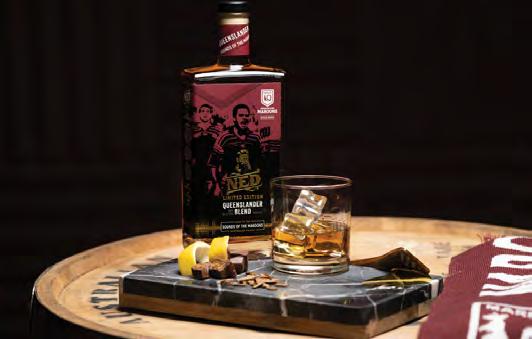
The team at NED said the sound waves of Moore’s chant created kinetic energy in the barrel that vibrated through the whisky, enhancing maturation and creating a richer, bolder spirit.
”When Queensland are under pressure, that’s the key moment; that’s where our call comes from,” Billy Moore said.
“It’s a pressure call when you need help. That’s what Queensland is about, uplifting your spirits, knowing who we’re fighting for, the legacy before and those that come after.”
The Queenslander Blend release is the third time NED Australian Whisky has used innovative sound-ageing to create unique and distinctive whiskies – the first two have been collaborations with its motorsport partners, Supercars and Grove Racing.
Bottled at 44% ABV, NED Queenslander Blend is bold and rich with flavours of bright citrus notes, bold toffee, and rich oak.
Top Shelf International, through the NED Whisky brand, continues with the Queensland Rugby League as an Official Whisky Partner and as the Queensland Maroons Coaches Partner. The partnership extends across the men’s and women’s Maroons’ programs.
Less than 500 bottles of NED Queenslander Blend are available for RRP$89.95 from the NED Whisky website and select independent bottle shops in Queensland and northern New South Wales.
A custom Maroons branded NED and Cola 6% ten pack will also be available for a limited time.
As Australian demand for Whisky increases, Nikka Whisky launches its rare Yoichi 10-year-old single malt at an event in Melbourne tonight.

Just 360 bottles of the rare drop will be available on-premise only, with a dram (30ml) set to cost between $45-50.
Marcus Parmenter, Brand Ambassador for Nikka Whisky, said Nikka has enjoyed increasing popularity in Australia over the past few years as Australians continue to embrace Whisky over other spirits.
“Whisky sales have seen incredible growth in Australia. In the past two years, Australians’ thirst for Nikka products have risen massively, with a 50 per cent increase in case allocations to meet this demand,” he said.
Established in 1934, the Nikka brand was initially known as “Dai Nippon Kaju”, which translates to The Great Japanese Juice Company, as founder Masataka Taketsuru and his wife Rita financed the company by selling apples.
The Yoichi 10-year-old was created to commemorate the historic Yoichi Distillery being declared one of Japan’s 10 most important cultural properties. The distillery continues to use traditional distillation methods such as direct natural coal firing of the stills, a heating method used only by a handful of whisky distillers worldwide today.
This method produces a Maillard reaction during the distillation process, resulting in greater complexity and depth of flavour and colour within the finished product.
“The exclusive Yoichi Single Malt 10-Year whisky offers a taste profile of smoky, savoury malt flavours and fruitiness. Its deep complexity has been achieved by skilful blending to maximise the maturity, along with extra peat and woody notes,” said Parmenter.
He noted that making fine Whisky is a long process, requiring commitment, true dedication and respect for the maturation process.
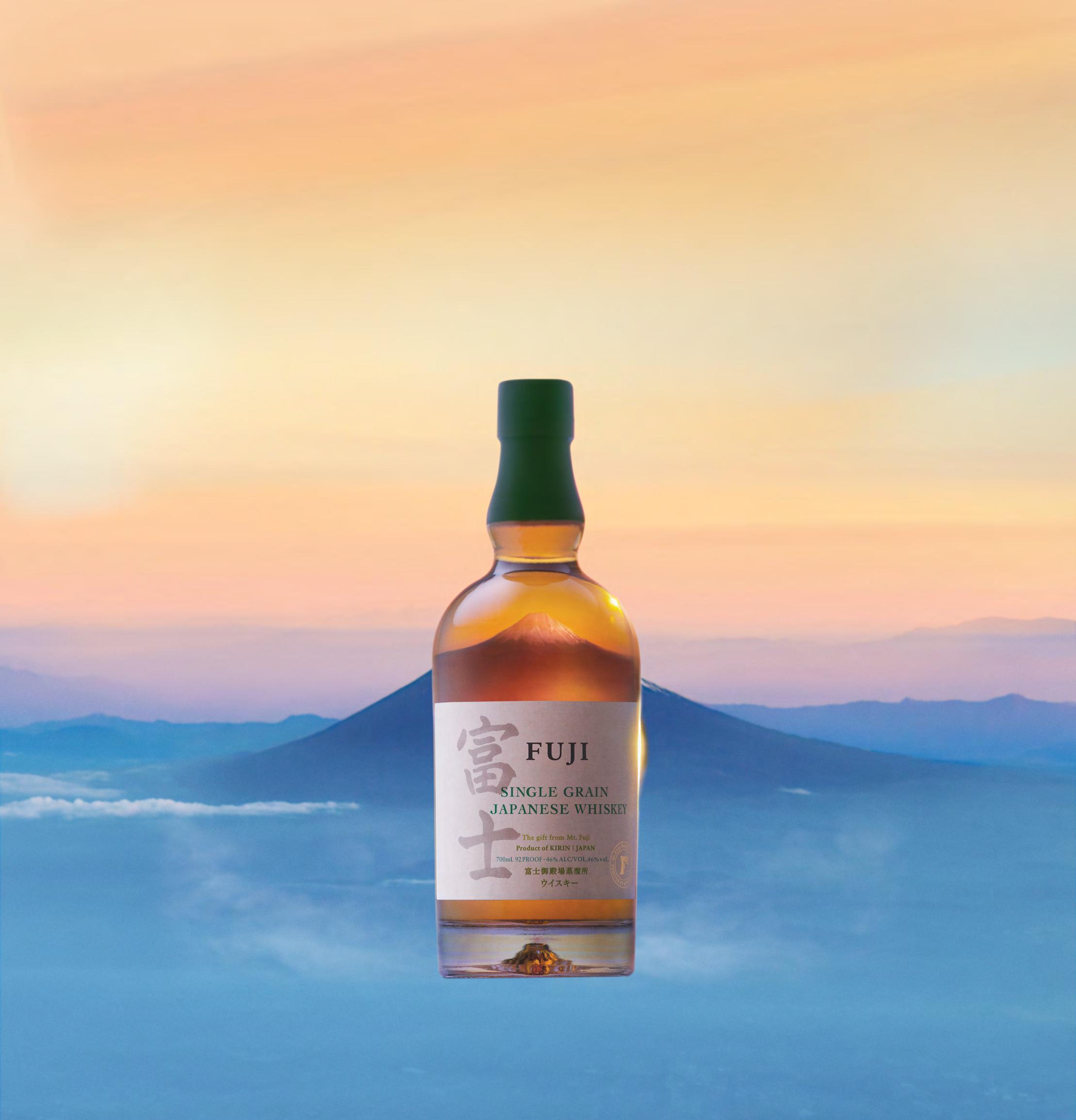



For many of us, the term, ‘celebrity’, is about as much of a demeaning insult one could hurl at anyone. For many others, even if they have achieved their notoriety for nothing more than being ‘famous for being famous’, celebrities are the pinnacle of humanity. Actors, sports stars, singers, social media people, et al – this is your time.
Not sure how exactly one qualifies as a celebrity, but it does seem that there is one definite rule these days. You simply cannot be a celebrity if you do not own or endorse a popular brand of spirits or wine. A few have even dipped their toes into champagne, though I am yet to see anything positive come from that. Looking through
extensive lists of celebrities and their ‘products’, it seems to me that some would struggle to be considered as a celebrity within their own family, but I guess any fame is better than none. Many others I had simply not heard of (no doubt, a failing on my part rather than the celebrity concerned) and many were obviously simply paid a fee to have their name attached or be seen drinking the stuff. There are some with genuine or at least, longstanding links.
Let me quickly impose one caveat to this. We have looked at ‘Heaven’s Door’ Bourbon and Bob Dylan’s involvement elsewhere. Under no circumstances will I be party to insulting the Voice of a Generation by dubbing him a ‘celebrity’. His Bobness clearly transcends any such tag.
Fear not, there are plenty more and many of them are linked to whiskies and bourbons. Not all.
Ryan Reynolds has Aviation Gin; Dwayne ‘The Rock’ Johnson has Teremana Tequila; basketball’s greatest, Michael Jordan, has also taken the tequila route with Cincoro; it seems tequila is a favourite with top basketballers with LeBron James and his Lobos; George Clooney has Casamigos Tequila; Mezcals are also popular with Cheech Marin and Tres Papalote, and the ‘Breaking Bad’ duo of Bryan Cranston and Aaron Paul swapping meth for Dos Hombres Mezcal; Dan Aykroyd has long been involved with Crystal Head Vodka while the rather curious odd couple, Bill Murray and Mikhail Baryshnikov have Slovenia Vodka. The list goes on. And on.

It is, however, bourbon and whisky which interests us. And it clearly interests former American football stars. Hall of Fame quarterback, Peyton Manning, along with tennis legend Andy Roddick, have Sweetens Cove Bourbon (apparently an excellent bourbon). Another Hall of Fame quarterback, Terry Bradshaw, is behind the Bradshaw Kentucky Straight Bourbon Whiskey, although reviews would suggest his bourbon is not destined for the stellar career Mr Bradshaw enjoyed. Cornerback, Charles Woodson, has Woodson Whiskey but again, it seems his sporting ability far outweighs what his spirit offers.
Not all basketballers have taken the tequila path.
Scottie Pippen, teammate of Jordan at the Bulls, has
Digits Bourbon. Soccer player, David Beckham, is linked to Haig Club Whisky, although most reviews focus on the bottle looking like cheap cologne.
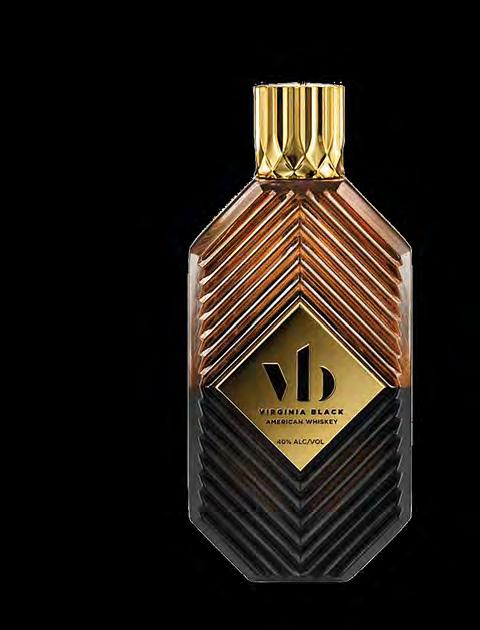
Musicians feature prominently. Metallica, The Pogues and Drake (is he a singer?) all have links to whiskies (David Beckham is probably happy as Drake’s Virginia Black Whiskey is in a bottle which looks like an even cheaper cologne than his). One that seems a given, Willie Nelson and Old Whiskey River.
Fans of ‘Parks and Recreation’ will know of cult legend, Ron Swanson, played by Nick Offerman and his wonderful quotes – “Any dog under fifty pounds is a cat and cats are useless”; “I would rather bleed out than sit here and talk about my feelings for 10 minutes”; “Clear alcohols are for rich women on diets”. How could you not want to share a glass with this bloke?
Fans will also know that Nick/Ron was the world’s number one fan of Lagavulin 16-Year-Old. It was inevitable that Lagavulin would bring out the ‘Offerman Edition Single Malt’. That said, one suspects that both Ron and Nick would be mortified to be considered a celebrity. A couple more quotes might confirm this – “When people get too chummy with me, I like to call them by the wrong name to let
them know I don’t really care about them”; “Don’t start chasing applause and acclaim. That way lies madness”: and “If any of you need anything at all, too bad. Deal with your problems yourselves, like adults.” What genuine C-lister would be caught dead suggesting any of this?
Other actors include Matthew McConaughey and Wild Turkey Longbranch Bourbon; Walton Goggins and Mulholland Distilling; Live Schreiber and Sláinte Irish Whiskey; and now ‘Family Guy’ creator and star of ‘The Orville’, Seth MacFarlane, is a partner in ‘Bear Fight American Single Malt Whiskey’. He announced this with his typical humour, “for me to put my name on it, you know it’s either great, or I’m getting paid a ton of money. Well, they’re paying me almost nothing”.
Personally, that seems about what the endorsement of some celebrities is worth, but the plethora who have linked with wine and spirits suggests that I am not in the majority.
Perhaps there can be an anti-celebrity whisky? Caskshare made headlines with its ‘Big Lie’ whisky, a ‘tribute’ to the out-going British PM, Boris Johnson (remember him?). This was followed by their ‘Not a Grain of Truth’ Bourbon, made as a nod to guess who!


If one ignores the topics of politics and religion, surely there is no subject about which there is more nonsense written than the matching of food and wine. Fortunately, we are not here to add to that. We have a new niche contender – the matching of whisky and food.
Personally, for me, what you want when you have a glass of top whisky is good friends and conversation. A fine cigar, definitely. Perhaps a few snacks, some nuts or cheese? Dried fruits or perhaps a quality chocolate with a rich whisky. But matching whiskies with food is a tough gig. There is no hiding from the fact that whisky is two to three times more alcoholic than a wine.
The rule of thumb is a light whisky with a dish like salmon (one has to ask whether or not this is a natural result of both whisky and fish hailing from Scotland). Medium whiskies with a good steak and richer ones with a hearty stew (I am assured that a whisky which emphasises its heather and peat notes is ideal for haggis). An apple pie with a lighter spicy style of whisky for dessert.
There are endless options and no reason not to explore widely. My first rule of wine and food also applies to whiskies. Eat what you like and drink what makes you happy. The traditionalists and purists may feel you have opted for a trainwreck, but what is the point of struggling with something you don’t enjoy. That simply seems to me to be the epitome of square peg in a round hole stupidity.
Needless to say, our friend Nick Offerman (Ron Swanson from ‘Parks and Recreation’) has some suggestions. And some thoughts on “food” as well. Allow me a tiny digression to share the thoughts of Ron. “Fishing is for sport only. Fish meat is practically a vegetable”; “There’s only one thing I hate more than lying: skim milk. Which is water that’s lying about being milk”; “Dear frozen yogurt, you are the celery of desserts. Be ice cream, or be nothing”; and my favourite, “Salad, the food that my food eats.” The third release in the Lagavulin ‘Offerman’ series, an 11-Year-old, is rich, peaty, heavily flavoured and, according to Ron/Nick, ideal for a good steak.
The wine industry has been full of endless information and warnings about fraudulent bottles, whether large shipments of dodgy wines or extraordinary and ancient bottles designed to fool high-end collectors into shelling out many thousands. Spirits, and in particular, whiskies, are far from immune.
Top end Scottish malts have been targeted and now it seems that elite bourbons are very much in the spotlight. The news program ‘Inside Edition’, focused on a $1,000 bottle of ‘Col. E.H. Taylor Four Grain’, purchased from Ackers in Manhattan (Acker is a name which does tend to pop up more often than they might wish when it comes to stories on fake wines and spirits, though whether this is bad luck, bad management or something more nefarious seems yet to be fully determined). The program focused on this bottle as they could see irregularities in the packaging and labelling and, sure enough, the distillers, Buffalo Trace, confirmed it as a fake. It is far from the only one with reports coming in from across America. A label like the coveted cult, Pappy Van Winkle, is a popular target.
Counterfeiting luxury spirits is a growth industry.
Some experts argue that there is a degree of blame attributable to the victim as greed to have these bottles plays a role and there is insufficient attention paid to provenance and authenticity. It is a fair point but if someone isn’t producing fakes in the first place, it won’t be happening.
Those committing the frauds often get away with it because it can be hard to distinguish, if the fake is good enough; often the only way to tell is to open the bottle and many collectors do not want to do that; and finally because many of these collectors are wealthy individuals who have no wish to have their stupidity exposed. They’d much rather lose thousands. All right for some.
It is not helped by the number of people who sell their empty bottles of Pappy and its ilk on eBay and such places.
As well as Pappy and Col. E.H. Taylor, other regularly targeted releases are George T. Stagg, Michter’s, Double Eagle Very Rare, W.L. Weller 12-Year-Old, Blanton’s Single Barrel and others.
Fakes have long been recognised as a problem for the Scottish malt industry, where organised crime have allegedly been known to produce thousands of bottles of top end fakes. It has, apparently, been occurring for years. Perhaps the most famous incident was in 2017, when a Swiss hotel sold “the world’s most expensive dram’, a pour of 1878 Macallan, to a Chinese tourist. He was not fooled. The liquid was analysed and it was found to be a blended whisky no older than the 1970s. The hotel had apparently missed that it was in a modern bottle with an inappropriate cork.
Distilleries are starting to use security tags, holograms and similar methods to prevent this. A technique of assessing the liquid through the bottle, to save it having to be opened in case it is genuine, is in development.

Collectors of these special bottles are warned to be on guard. Buy only from trusted sources and carefully assess provenance and condition. Look for warning signs. Avoid online specials.
Help may be at hand. Scientists at the University of Glasgow have developed what is called an ‘artificial tongue’, which can distinguish between various brands of whisky. No doubt other functions for it will follow. Of course, this does require opening the bottle.

It has been a long day. You’ve just checked into a far-distant hotel, exhausted from travelling. Rather than heading out for a bite or even to the hotel bar, you open the mini-bar and crack a miniature bottle of whisky for a quick drink before falling into bed. You probably didn’t even bother to take any notice of the brand.
Perhaps you should have. Apparently, mini bottles are all the rage with some collectors. If you think I am making this up, a recent auction saw a miniature of Campbeltown Single Malt 1919 from the Springbank Distillery sold for almost US$9,000 (around US$200/millilitre). Okay, you are probably not going to find a 1919 Malt in your hotel mini-bar, but you have to start somewhere.
A UK gentleman had done just that, amassing a large collection of miniatures over the years. Eventually, he decided to part ways with his collection, picking up a pleasant £30,000 for his trouble. Would he miss the collection? Seems unlikely. He’d never opened a single bottle because he detests the taste of whisky. I’m prepared to bet that he looks more fondly on whisky today.





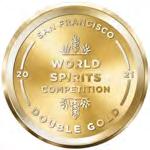
If miniatures hold no appeal, perhaps go to the other extreme and buy your malt by the cask. If this sounds like a plan, it is worth making contact with your favourite distillery to see if they are interested, but beware, these things do not come cheap.
In November, 1975, the beloved distillery, Ardbeg on Islay, now owned by Moet Hennessey, distilled a cask, called Cask No 3. The nectar was matured in a mix of bourbon and oloroso sherry casks before being blended on 31st March, 2014 and transferred to a refilled oloroso sherry butt. It is a cask which had attracted the attention of Ardbeg director, Dr
Bill Lumsden, due to its extraordinary quality. The decision was made to sell the cask in its entirety.
Seems that a visitor from Asia was so taken with the region and its whiskies on a previous trip that she did not hesitate. And so, for £16 million, she became the proud owner of this unique cask.
She will receive 440 bottles from the cask, which will be sent to her over the next five years, 88 bottles of this brilliant whisky every year, meaning she will receive bottles varying in age from around 46 to 50 years of age. Lucky her! It values each bottle at around £36,000.
This does rather raise the ante for a cask of whisky. The previous record was £915,500 for a cask of 1988 Macallan.
Some distilleries will allow clients to buy a cask at distillation and they will then mature it for the requisite period on behalf of the buyer, in their warehouse.

One gentleman, a Scottish ex-pat on a visit home, did exactly that when visiting Macallan in May, 1988, paying £5,000 for a 374-litre cask of their to-befamous 1988. Unfortunately, he then forgot all about it. Seriously.
Macallan held it in bond but eventually decided it was time and tracked down the surprised owner, who decided to sell it. The cask was sold by Whisky Hammer, an online whisky auction site, to an unnamed American, for US$1,295,500. Some days you get very lucky.
It is estimated that the new owner will receive 534 700-millilitre bottles (so about US$2,426 a bottle, a bargain compared to the Ardbeg).
Macallan have learnt their lesson. A condition of sale was that the cask was removed shortly after sale. We hope the new owner did not forget.

The 25th of February is ‘Sword Swallowers’ Day; 13th of March is dubbed National ‘Open an Umbrella Insides’ Day; 26th March, ‘Make Up Your Own Holiday’ Day; ‘No Pants Day’ is the 5th of May – there are hundreds of these ridiculous so-called Days. So when the wine industry jumped on board with International Viognier Day and Grenache Day and so on, it looked positively sane. So why not the world of whisky?
And that is precisely what happened. From 2012, we have had World Whisky Day, the third Saturday in May (23rd, this year). Within a year or two, the Day was formally recognised by the Scottish Parliament and in 2015, events to celebrate World Whisky Day were held on all seven continents – at least they wouldn’t run short of ice in Antarctica. The idea is for whisky lovers to participate in organised events, but you are just as welcome to raise a glass with friends or even on your own.
The Day was apparently ‘purchased’ (who knew you could buy a day?) by the magazine, ‘Hot Rum Cow’, which may or might not have disappeared (it seems the Day may have lasted longer than the magazine), but I doubt any distillery will object to anyone enjoying a good whisky come the 23rd May.
Of course, someone always goes too far. If there can be a World Whisky Day then the clever folk at the Ardbeg Distillery thought why not an Ardbeg Day. And so, since 2012 (a busy year for whisky days), we have had an Ardbeg Day – has to be a better idea than ‘Unlucky Day’ (December 31st, if you were wondering). The date falls on the last Saturday of the Islay Festival – in 2023, that will be June 3rd.
Mind you, not surprisingly, Ardbeg Day does touch on the fringes. In the past we have seen releases such as ‘Ardcore’, where the distillery gets its best punk on. The theme for 2018 was ‘peat and love’ with the Magical Whisky Tour’ and the release of ‘Grooves’. ‘Auriverdes’, from back in 2014, was to celebrate Brazilian football. And so it goes.
In 2023, Ardbeg Day should coincide with the fourth release of Traigh Bhan, a 19-year-old whisky, and no doubt, much more.
On what planet does someone wake up in the morning and ask themselves, why not make a whiskey which is flavoured with the castor sacs of beavers? Yes, I had to look up just what castor sacs were – you do not want to know, but suffice to say, they are not in any list of the top one thousand things to use when distilling spirits. Distiller, Matt Power, of the Tamworth Distillery in New Hampshire, has a track record of weird inclusions. Prior to the beavers, he used turkeys for a holiday whiskey and previously, durian. It almost sounds like these guys have crossed the line from conservative whiskies to whacky gins.
His latest inclusion, green crabs. These particular crabs are an invasive species, hitching a ride on vessels from Europe in the 19thcentury. They have multiplied unchecked in the New Hampshire region ever since. The whiskey is called ‘Crab Trapper’, and Power was happy to use the crabs to help address the problem they create, forcing the native wildlife to seek food elsewhere. So, drink whiskey and save the environment.

The whiskey is made by a process whereby the team first create a ‘stout crab broth’, which is then fortified and distilled, in order to get rid of the less pleasant maritime odours. The result has corn and spices mixed into it before it is added to a cask of bourbon which the distillery has already had maturing for several years. It takes about a pound of crab neat for every bottle, although there is no evidence of crab in the whiskey.
Apparently, consumers are initially hesitant – who can blame them – but after tasting the product, become very enthusiastic. It does sound crabtivating. As to price, I have no idea how much you’ll have to shell out.
It truly is a glorious time for whisky lovers around the globe. Scotland continues to lead the way and locally, this is a golden age for Aussie efforts. Elsewhere, the world has never seen so many countries offering their versions, at quality levels issuing a strong challenge to Scotland. In a few short decades, the world of whisky has changed in unimaginable ways.
Indeed, bizarre ways as well. A recent news report suggested that India was likely to become the major supplier of whisky to Russia. Granted, with Russia on the nose thanks to the invasion of Ukraine, it is no doubt being forced to source a great many items from alternate producers and countries. Russia’s consumption from Scotland had been very much on the rise, up 61% in 2021, but the boycott of Russia brought that to a crushing halt. I mention this simply because India and Russia are two names that are rarely in the forefront of the mind when thinking whisky.
When we step outside Scotland (and for the purposes of this piece, we will leave Australia to one side), one automatically thinks of nations like Ireland and Japan, and of course, the varying styles from the USA. Others will look to Canada or even Taiwan.
Back to India if one may. Their whisky industry has come along even faster than their superb cricket team. A whisky-loving friend from New Zealand contacted me recently as he had seen an item on an Indian whisky for sale. He assumed it must be a joke. That could not be further from the truth.
For many years, most distilled spirits made in India were simply labelled as ‘whisky’, even though they had more in common with rum, given the widespread use of molasses. With increases in wheat production, suddenly India had the raw materials. Their first malt whisky was ‘Amrut’, successfully launched in Glasgow in 2004 (talk about coals to Newcastle) and to the local market in 2010. The domestic market in India is now considered the most lucrative in the world. Their own whiskies are extremely popular. In 2017, Indian single malt comprised 15% of local sales. By 2022, this had increased to 33%. Imported malts also increased but at a much smaller rate.

Needless to say, the early days of whisky in India date back to its popularity with the British Raj and there were attempts at production at this time. Shortages of grain caused problems but quality water was available, at least from the foothills of the Himalayas. Current distillers have identified one advantage to production of whisky in India. It is estimated that one year maturing in India is the equivalent of three years in Scotland. Increases in available technology, reductions in various tariffs and taxes, economic reforms and more have all contributed to the development of the whisky industry here.
The local Indian market had reached over 241 million cases by 2022 and is expected to hit 375 million by 2028. The top products from the major nations – Scotland, Ireland, Canada and the USA – are all well represented and popular here. India represents the ever-increasing international interest in whisky. It also offers a blueprint for emerging producers and distilleries around the globe.
EXCELLENCE SINCE 1859. CRAFTED FOR TODAY. A distinct style of Australian Single Malt Whisky, finished in the world’s finest fortified wine barrels for exceptional flavour.

Whisky is riding an extraordinary wave of popularity globally. The research site, Winesearcher, notes that number of retailers listing whiskey offers on their site rose 22.3% from 2021 to 2022. Even more impressive is the number of searches for information on whisky, topping 28 million, an increase of 26.6% (if we revert to the Indian situation, searches in that country leapt by more than 50% over that same year). Put simply, the interest and demand for whisky far outstrips the current supply.
Curiously, there was one country going against the tide, Ireland, where interest dipped significantly, we were told. Hard to see that being a continuing trend, given the increase in the number of distilleries in the country and exports, in 2022, exceeding €1 billion for the first time ever. The USA is their major market. All sales in 2021 were 14 million cases, up 20% from 2020. It may be that for unknown reasons, interest in Irish whiskey declined in internet searches, but that certainly does not seem to have translated to the real world.
So where next? Which country will be the next to hit the whisky market and excite whisky lovers?
One suspects that we’ll see more and more nations joining the fray.
South Korea is a fine example. Three Societies Distillery has just released their first single malt. Aside from the use of American casks, all ingredients are Korean and the whisky, named Ki One Tiger Edition, will be available in the USA, Taiwan, Japan, Singapore and Hong Kong, before heading to Canada and Europe, including Scotland, soon after. Mind you, as only 1,506 bottles have been produced for this first release, it might take a little time before it makes a big impression, but everyone starts somewhere and there are plans for more releases very soon.
The trend we have seen from Scotland with the unicorn releases, whiskies of incredible rarity and age, is something we are seeing around the globe. Everyone seemingly wants in.
It does not get more unicorn than to release a single bottle, and that is what Ireland’s Midleton Distillery has done. The annually released Midleton ‘Very Rare’ is a highly regarded premium whiskey,
but now you can have something completely over the top. The ‘Very Rare’ was originally launched in 1984 and has a cult following, for each year’s new release, both from collectors and whisky lovers. Usually, less than 2,500 cases are made. The price seems to sit between $300 and $600 depending on where you shop.
There have been variations on the theme over the years. The 30th anniversary was celebrated with the release of the ‘Pearl Edition’, just 117 bottles.
Now, for the 40th anniversary, we have the ‘Pinnacle Vintage’, a unicorn if anyone ever saw a horned horse. It includes a little whisky from each of the 40 years that have come before it and includes some separate pot still whisky distilled in 1984. Only a single bottle has been released, priced at an eye-watering US$130,000, to be sold via NFT (I have no idea what that means, but I assume those willing to part with that sort of money for a bottle of whisky do).
Cross that large pond and there is more. Popular American distillery, WhistlePig (and who among us does not love the name), from Vermont, is heading down the same path although in a more modest manner, with their new release, “The Béhôlden”. They, however, have mixed things up even more. This might be a single malt of serious age, price and general all-round luxury, but it comes from material distilled in Canada. The crossing of borders is fast becoming an issue for whisky distilleries.
First, although WhistlePig is best known for its rye, this is a single malt “born” in Canada 21 years ago, although we are not told exactly where. US$800 is chump change compared to US$130,000, but still hardly to be sniffed at. A single barrel release means devotees need to move quickly. Local experts suggest that this might be the oldest American single malt available (we need to note the division between their single malts, ryes, bourbons and so on – see later). Speculation is that we will see even older releases down the track.
I know we are jumping around the globe like a travel agent after Covid, but this is the perfect time to look to Jota Tanaka and the whiskies of Mt Fuji Distillery in Japan.

How fortunate to have the view out of your office window, one of the most iconic on the planet, the glorious Mt Fuji itself. Tanaka is the most lauded distiller in Japan today. Only the second person from this nation to have been awarded the title of Master Blender, recently been inducted into the prestigious Whisky Magazine ‘Hall of Fame’ (only the fourth such inductee from Japan and the only one to receive the award while still working), Tanaka has decades of experience in the whisky industry. He has been in charge at the Mt Fuji Distillery since 2017. His career began with the Kirin Brewery (current owners of the Mt Fuji Distillery) in 1988, and included seven years as Director of Quality at the Four Roses Distillery, Kentucky, before he returned to Japan in 2009, becoming Chief Blender in 2010, and Master Blender in 2017, only the second person to hold that post in the 50 years of the Distillery’s history.
He is relevant for two important reasons.

Tanaka was one of the people involved in the new whisky regulations for Japan, which are aimed, in part, at ensuring labelling is accurate and that offshore whiskies are not brought in and labelled as Japanese. By next yar, anything labelled as “Japanese whisky” must be fermented, distilled, aged and bottled in Japan, and must use some portion of malted grain in its mash, as well as use water sourced from Japan.
There are some distilleries importing product from offshore and incorporating it into their local whiskies, however as long as this is clearly stated on the label, there is no issue. Naturally, some try and circumvent the regulations, claiming their whisky as Japanese when it is anything but. Chichibu and Suntory are two of the distilleries which indulge in this practice, but do so by carefully detailing the process on their labels.
These regulations only apply to members of the Japan Spirit & Liqueurs Makers Association, although that does cover the majority of Japanese producers. This might seem like a Japanese issue, but it becomes easier and easier to move unnamed and unallocated spirits around the globe meaning that the unscrupulous can offer whiskies that have nothing to do with the claims on the label. And you












can be certain that anyone doing that is not doing it on the cheap.
The second reason Tanaka is important is that it is most refreshing to talk to a distiller/blender who understands that there is more to all this than simply ageing your product for as many years as you can. Age does not necessarily mean better, though it almost certainly means more expensive.

On this, Tanaka agrees with one of the legendary Bourbon producers, Wild Turkey’s famous blender, Jimmy Russell. It seems that they sing from the same hymn sheet. Tanaka believes that the maturation peak for Bourbon sits between five and eight years. He does not believe that simply ageing the barrels endlessly will produce a better product. This is partly why he operates on a No-Age-Statement basis for his stunning whiskies. Jimmy Russell has also been famously quoted, when asked about all the unicorns and limited editions and special releases, as saying “most of the time all the same spirit. Just goes in different barrels and stays there different amounts of time.”
Of course, this does not apply to just bourbon. The problem is convincing the world that a great whisky does not have to be an ancient one.
Japan has emerged from little more than a curiosity to a nation producing whiskies rivalling the very best. Leaving aside the very earliest attempts, distilling kicked off 100 years ago, in 1923, with the
opening of the Yamazaki Distillery. From those early days, the style was aimed at emulating Scotland and there are still strong links.
Suntory and Nikki are the best known distilleries, but there are many others today. The problem is overcoming the overwhelming demand – its popularity in general, the Olympics, the Rugby World Cup and a television soap opera on the life of the founder of Nikki, of all things, have all drained stocks. Fortunately, there is light and not just for their standard whiskies. Ichiro’s whiskies from the Chichibu Distillery are fast attaining cult status. Mars, as well as Mt Fuji, have made an impression. In recent years, distilleries have been popping up all over the nation, but of course, producing whisky takes time.
Twenty years ago, consumption was almost entirely domestic. Anything finding its way offshore was simply a novelty. Since that time, their whiskies have won endless awards and, as is the way of things, started attracting stratospheric prices. In 2022, exports of Japanese whisky reached 56.1 billion yen, almost ten million yen more than the next highest alcoholic beverage, Sake.
The Hanyu Ichiro’s Malt Card series, a collection of 58 different whiskies which originally allegedly struggled to sell, even though only 100-150 bottles exist of some of the ‘cards’, now approaches $2 million a set. Even they pale in comparison to the
Yamazaki Single Malt from 1960, which last sold for over US$840,000 for the bottle. Of course, these are the extremes.
Another Japanese whisky which finds its way to our shores, and many others, is Kamiki, which hails from the famous city of Nara, Japan’s ancient capital. It is the first whisky to be finished in Japanese cedar (called Yoshino Sugi). They are also another fine example of a distiller which sources and blends quality malts from around the world and blends them with local whiskies. This is done openly and indeed, highlighted (so completely legal, in case you were wondering). It has received accolades all around the world. Kamiki apparently translates as ‘God’s breath’.
As anyone who has ever seen “Mad Men” can attest, whiskey/whisky could almost be an American thing. Calling it popular hardly does it justice. It is, of course, not that simple. There are a range of styles. We have, and these are made from mashes with at least 51% of their “named” grains, bourbon, rye whiskey, rye malt whiskey, malt whiskey, wheat whiskey, Tennessee whiskey and corn whiskey, while others, which fail to specify their dominant grain, include blended whiskeys, blends of straight whiskeys, grain whiskeys and spirit whiskeys. Needless to say, regulations abound.
Laws regulating the above products vary between those produced for sale in the U.S. and those

exported abroad and if we were to spend time detailing the requirements and differences here, space would defeat us.
Very briefly, Rye whiskey – mash that consists of at least 51% rye; Rye malt whiskey – at least 51% malted rye; Malt whiskey – at least 51% malted barley; Wheat whiskey – at least 51% wheat, Bourbon whiskey – at least 51% corn/maize; and Corn whiskey – at least 80% corn. The whiskey must be distilled to no more than 80% abv. Additions of items such as coloring, caramel and flavour additives is prohibited. All, except Corn whiskey, must spend some time (unspecified) in charred new oak containers. This scratches the surface.
Among the others, it is worth mentioning Tennessee whiskey, a straight bourbon whiskey lawfully produced in the state of Tennessee and governed by Tennessee law, which include filtration through maple charcoal (the Lincoln County Process) before it goes into barrels to mature (naturally, it is not that simple as one distillery has an exception grandfathered in). In truth, Bourbon and Tennessee Whiskey are very similar, with the mash bill of at least 51% corn and ageing in new charred oak barrels. Bourbon has the advantage in that it can be produced anywhere in the States, even Hawaii (come on down the Kauai Distilling Company), although around 95% comes from Kentucky. There are around two and a half dozen distilleries in Tennessee and 100 in Kentucky.
Famous Tennessee distilleries include Jack Daniel’s and George Dickel. From Kentucky, we have Four Roses, Michter’s, Jim Beam, Maker’s Mark, Wild Turkey, Woodford, Buffalo Trace, Willett and many others.
Whiskey in America does have a rich history. It was the first locally produced item to be taxed (rum was still the dominant spirit in those days), this occurring in 1791. Of course, this did not go down well and the Whiskey Rebellion lasted until 1794. Over the years, hurdles have included the Temperance Movement and Prohibition.
Of all the various American styles, it is Bourbon that has gained the spotlight around the globe. That is quite different from its earlier reputation, and it might be beyond the understanding of many of today’s younger fans to learn that Bourbon was in steep decline from the 1970s to around 2000.
Today, Pappy van Winkle is one of the world’s cult spirits, very much the definition of a unicorn, and attracts huge prices. The first release of the Pappy van Winkle 23-Year-Old was in 1998, for what was then a very ambitious $125 – today, you’d be lucky to get much change out of ten grand for the current 23-YearOld release. Michter’s 25-Year-Old Single Barrel Rye, another cult spirit, will set you back around US$35,000, if you could find one. One local retailer has a bottle of the 2008 release available, for a mere $50,000. Names like George T. Stagg, Wellers, Blantons, Eagle Rare and more attract incredible interest.

One name found outside both Tennessee and Kentucky is Westward Whiskey from Oregon. As well as the traditional lightly charred oak, some of their whiskies also spend time in old wine barrels that previously held Pinot Noir and others which were home to stout. When Westward began in 2004, it was one of only around three dozen craft distilleries in the USA – now there are more than 2,200.
Back across that pond and even though Ireland may have allegedly had a small hiccup in whisky interest recently, they are still producing some brilliant spirits. Jameson remains the best known producer. Also, look to famous names like Redbreast, Bushmills, Writer’s Tears, Midleton, Green Spot and Teeling.
They are certainly looking beyond the traditional. Glendalough is the first Irish whiskey producer to use Mizunara oak to finish their offerings. Waterford has committed to using organic grains wherever possible, such as for their “Gaia Organic 2.1”. Another to note, from the Shed Distillery, the first single malt released from the west of the country in over 130 years, the triple-distilled Drumshanbo Single Pot Still Irish Whiskey. They use malted Irish barley, unmalted Irish barley and Irish Barra oats and age their whiskey in Oloroso Sherry and Kentucky Bourbon barrels.
Of course, like almost everywhere, regulations abound. Irish whiskey must be made either in the Republic or Northern Ireland and include malted barley in the mash bill, be aged for at least three years in casks and be bottled at a minimum of 80 proof. The styles are blends, malt (100% malted barley), pot still (malted and unmalted barley) and grain whiskey (malted barley and another cereal grain).
Canada? My Canadian friends would be more than miffed (do Canadians get miffed?) if they missed out. Alberta Distillers is well known for some superb Rye. Canadian Club has some highly regarded aged releases. Other top whiskies include efforts from Crown Royal, J. P. Wiser, Lock, Stock & Barrel and Canadian Rockies.
Taiwan? Kavalan has made a real impact globally. New Zealand? Their one operating distillery closed in 1997, but now another dozen have sprung up. France? Look to the amazing efforts of Michel Couvreur. Denmark? The Stauning Distillery offers a whisky called Kaos and anyone growing up in the era of ‘Get Smart’, even the era of re-runs, can’t help but love a whisky called Kaos (and apparently, it is pretty good). Honestly, play around on Google and it is amazing what you’ll find. I tried “Cambodian whisky” and the Holly Creek Whisky Co pops up.
The world is making whisky and lovers of good drinking are consuming it even faster. Perhaps I was wrong. Perhaps the real golden era for whisky is about to start.




The Scotch Malt Whisky Society is a whisky club, a community, a group — flavour enthusiasts that seek full-flavoured whisky where the aromas transcend the norm and awaken the senses. We’re experiential, brazen, unapologetic — our events aren’t just tastings, they’re experiences that stay with you forever, they’re unforgettable memories for our members. We are also an independent bottler; and our bottles, that we carefully mature and rigorously assess before release, are 100% flavour-driven: Cask strength, single cask, non-chill filtered, and bursting with flavour.
You might have heard The Society’s name being uttered around bars, tastings, from a friend, or the abbreviation ‘SMWS’ used in passing — but what is The Society? Well, put simply, The Scotch Malt Whisky Society is the world’s largest whisky club with over 40,000 members across the world and a presence in more than 30 countries. We mature our own whisky in carefully selected wood and bottle it
exclusively for our members. You cannot purchase these bottles at a retail level. Our speciality is singlecask, cask-strength whisky.
What does this mean?
A) Single C ask: Whisky that’s seen full maturation in a single cask (whether it be a barrel, butt, hogshead, so on), and has not been blended or vatted with any other casks. This means that every expression is absolutely unique and limited by nature — x number of bottles will be yielded from the cask and that number is purely dependent on the size of the cask.
B) C ask Strength: We bottle our whisky at cask strength only, we do not water down our releases to lower the ABV. This ensures that no flavour is lost, and often means the majority of our releases are bottled above the 50% ABV mark. No chill filtering takes place, either. From wood to bottle — this is whisky in its absolute purest form.
We experiment with small batch single malts and blended malts on occasion, but our primary offering (and what we excel at) lies in single-cask, caskstrength whisky exclusively bottled for and sold to our members around the world. We are a global community of flavour enthusiasts who interact online via groups, chatrooms and monthly virtual tastings, as well as during our in-person tastings which we host around Australia (and the world) monthly.
1983, 40 years ago, an accountant and avid mountaineer named Phillip ‘Pip’ Hills purchased an old combine harvester and tried his hand at farming barley in Aberdeenshire. After a hard day’s work, a neighbour brought over single-cask whisky (an absolute rarity in those days) in a lemonade bottle, and Pip had his first sip-iphany — this was the greatest whisky he’d ever tasted. That was a Glenfarclas matured in a sherry quarter cask, and it was only sold to friends and family of the distillery.
After much pursuit and perseverance, Pip was able to secure himself an entire cask (with the help of some friends) and decided to start a club where the only whisky bottled was single-cask, cask-strength whisky straight from the barrel. 40 years later and The Society has become the most well-known and largest bottler of single-cask whisky, and expanded into 30+ countries, including Australia as of 2002.

Since the beginning, a gentleman’s agreement was struck that Society bottlings should follow a code — the name of the distillery shall not be printed on the bottle, instead a number will be given to represent it, with a second number representing the cask number. I.e 22.24 is the 22nd distillery to join The SMWS’ portfolio, and the 24th cask to be approved by our expert tasting panel from that distillery. This helps to encourage no bias from the drinker and put the spotlight on flavour. (It also encourages exploration as our single-cask releases tend to taste completely different from the core range offering of that distillery.) We currently have over 155 whisky distillery codes in our stable. Additionally, we also bottle Cognac, Armagnac, rum, gin, grain whisky, corn whisky, and bourbon — each of which have their own range of codes.

We specialise in single-cask, cask-strength whisky. We purchase new-make spirit (that’s freshly distilled, unaged, white spirit) from various distilleries, and purchase wood from select cooperages around the world, and then mature the spirit ourselves in our own warehouses. This ensures that our spirits team has complete control over maturation from start to finish. In the beginning, we only purchased fully matured stock from distilleries, but it soon became apparent that this could not be sustained
Right: Members at The Vaults in Leith, Edinburghas The Society grew. This influenced the decision to begin our own cask program in the early 90s. This comprehensive cask program has meant we’re able to experiment and play with flavour profiles in ways that others cannot. We leave the distilling to the experts, and instead focus on being the masters of maturation unlike any other on earth. It’s through this depth of cask catalogue and wood policy that we’re able to explore the widest spectrum of flavours and have a bit of fun through our cheeky bottle names: whisky is meant to be fun after all!

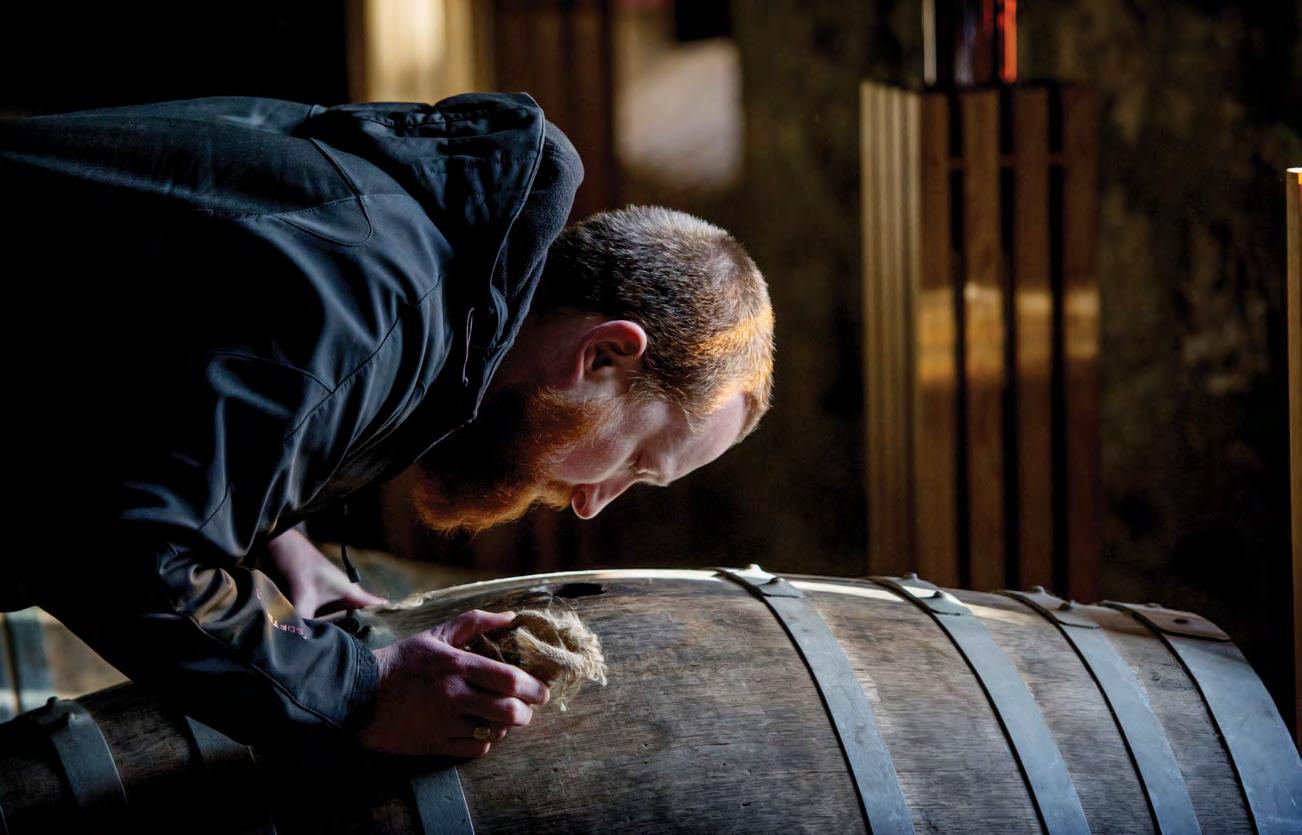
Once our spirits team believes a cask is ready to be bottled, samples are sent to our Tasting Panel, a constantly evolving line-up of whisky industry experts that blindly taste the samples, write the tasting notes, and decide whether it’s good enough to be bottled for our members. For context, about 50% of what we mature is rejected by the panel as not being good enough for our members at first pass. Tasting panellists must go through regular palate re-calibration training to ensure the utmost accuracy when sampling casks.
The uniform bottle labels and memorable tasting notes are what many know The Society by. Our labels

are designed to ensure the flavour is considered first and foremost — A fun (and sometimes descriptive name), condensed tasting notes, and a flavour profile colour strip on each bottle. (We have 12 flavour profiles which is a great first step in describing the taste of a cask release.) We also state the region, cask it was matured in, global outturn (how many bottles of that cask exist in the entire world), distillation date, age, and of course, the distillery code and cask number.
2002 saw the inception of the Australian branch with a series of tastings in Sydney followed by an overwhelming positive response — the branch has since flourished to be one of the most exciting and active in the world with regular tastings and experiences hosted every month in every state. Additionally, like other branches, we have Partner Bars in each state which carry our whisky bottles for members to try at discounted rates (one of the many benefits of a Society membership) by the dram. These Partner Bars act as hubs and SMWS outposts; they’re brilliant places to catch-up with friends, meet new like-minded flavour enthusiasts, and just enjoy some good drams. At time of writing, we have 15 Partner Bars across Australia.
For 20+ years the Australian branch of The Society has been going strong — each month we release between 14 – 20 delicious new single-cask releases exclusively to our members via our Outturn catalogue — a monthly digital publication featuring articles, news, upcoming cask releases, events, and

You’re probably starting to wonder at this point, “how does membership work?” There is no minimum spend required at The SMWS; you pay an annual membership fee of $120 (for basic membership with no add-ons) and that gives you access to purchase our entire catalogue of casks, with 14 – 20 new and exclusive single-cask releases every month, and other benefits, such as:
• Discounted tickets to all events + access to exclusive member-only experiences;
competitions. In addition to Outturn Magazine, we publish Unfiltered Magazine — a membersonly multimedia whisky magazine (Australia’s only dedicated monthly whisky publication) with in-depth pieces from local and international authors exploring The Society and greater whisky world with the likes of distillery deep-dives, interviews with industry icons, maturation and so much more.

The Scotch Malt Whisky Society is celebrating its 40th anniversary this year — that’s 40 years of changing the whisky landscape by doing what no one else was doing at the time. At a time of decline for the entire whisky industry, we began bottling single-cask, cask-strength whisky. A lot of people said it couldn’t be done and that there wasn’t a market for it, to which our founder Pip said “the people who said it couldn’t be done were so dull”, and that ties in with our Maverick ethos of doing things differently, evolving, changing.
Whisky is not just for the older gentleman sitting on a chesterfield by the fireplace. Whoever you are, flavour is for you. If you want to put ice in your whisky, go for it. Looking to mix it into a highball on a hot day? Absolutely go for it — and let us know how it tastes. Whisky is meant to be fun and enjoyed, whether it’s solo or amongst friends and family. That’s what we encourage at The Society; a playful, modern approach to whisky. An approach that’s suitable for everyone.
• Special offers and discounts at Partner Bars around Australia and select Partner Bars globally;
• Access to our four (with more on the way) private member rooms in Edinburgh, London, and Glasgow;
• Exclusive access to Unfiltered Magazine (a wealth of whisky knowledge and insight), sent to your inbox every month with locally and internationally curated content;
• No minimum purchase obligation, it’s your membership, your way; and
• O ur membership voucher offer: spend $1000 in your membership year on anything from our site and you’ll receive a store voucher to use in your next membership year (when you renew your membership).
Use the code ‘EXPLOREWHISKY’ for $50 OFF your first year of membership, plus, automatically go into the chance to win one of five Introductory Tasting Trio packs valued at $499.
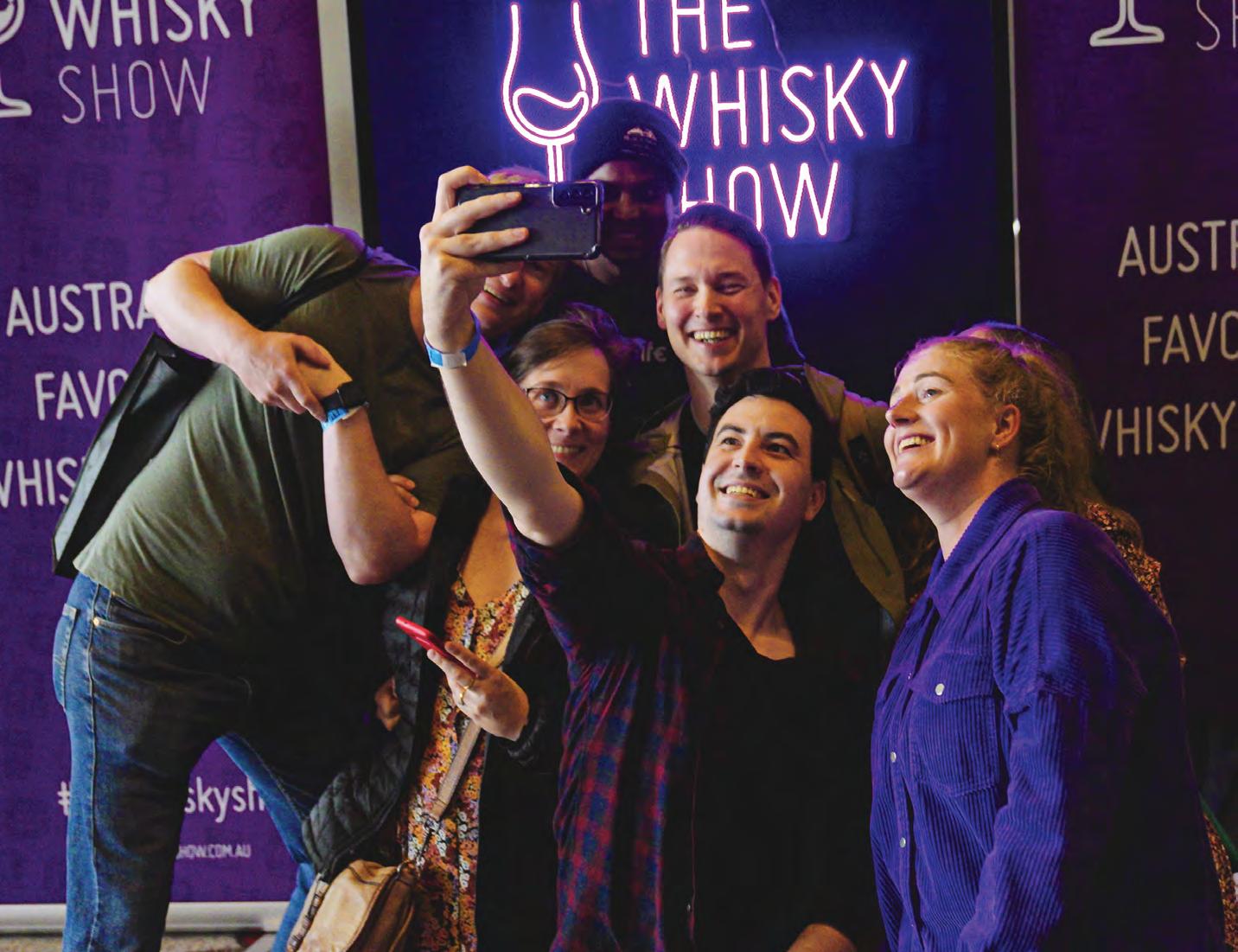
Connecting whisky fans all over Australia to the liquid they adore, The Whisky Show, now in its 12th year, is bringing back in-person events with a line-up of shows scheduled for 2023. Rooms filled to the brim with whisky waiting to be tasted, and brand ambassadors and distillers ready to geek out with you.

For those starting out in their whisky journey or long-time fans of the spirit, there is something for everyone at The Whisky Show. Speaking about the return of in-person events, founder of The Whisky
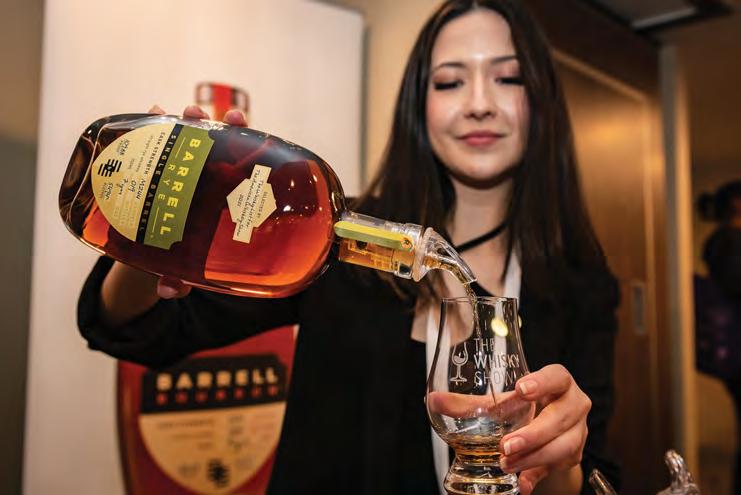
Show David Ligoff says his favourite part of these face-to-face shows is the community aspect, “these shows create an environment where a bunch of like-minded whisky lovers can chat, compare notes, learn from each other, and share their enjoyment of whisky, no matter what their background is.”
Ligoff has been running events in both Australia and New Zealand for the past 20+ years. His ultimate goal is to connect whiskies and brands to whisky lovers, introducing them to something new, exciting or different in their whisky experiences. He brought
that goal to life in 2012 with his first event in Sydney, featuring whiskies form all over the world. Anyone with the chance to attend knows the magic of a whisky show; it’s the next closest experience to a distillery visit, the only thing missing is the warming aroma of barley and rows of barrels!
This year the whisky show embraced the burgeoning Australian whisky industry with a show dedicated to them, in conjunction with the Australian Distillers Association. Showcasing the best whisky our country has to offer, and the opportunity to meet the distillers who make it, the event was held at the Pullman Hotel in Albert Park. With over 40 distilleries attending it was the largest gathering of Australian distillers from across the country.
Another new niche whisky festival in the line-up is the Feis Ile - The Islay Festival - a sister festival to the world famous event held each year on Islay, this one was held in Melbourne on 3 June, just as this publication is in print. All the distilleries from Islay were expected to be in attendance, with several independent bottlers who specialise in rare Islay bottlings. Check out images on www.exploredrinks. com. They even bring along a lot of their distillery exclusive bottlings, a little slice of Islay down under.
Even more important to The Whisky Show is accessibility, making sure that whisky lovers are able to attend and experience the drams on offer. Tickets for the shows are $125. For those reading this issue, you can get an extra 20% OFF your show tickets using the code “ExploreWhisky” at checkout!
Tickets for remaining 2023 shows can be purchased at wsky.me/show
The Whisky Show Melbourne
5 August 2023
The USA Whiskey Show (Sydney
19 August 2023

Lachlan Watt, Bar Manager at Melbourne’s Whisky & Alement, recently experienced something that few in the world get the opportunity to experience, and something that many dream about: he was awarded Bar Manager of the Year at the World Whiskies Awards. Coming off the back of the Icons of Whisky regional award for Best Bar Manager in their ‘Rest of the World’ category, the win for the ‘Global’ category was presented to Lachlan in London during the World Whiskies Awards ceremony in early April.
“It’s really exciting and a little bit overwhelming,” Lachlan says. “It’s something that just sort of came out of left field, which is always the best way for it to come instead of expecting everything. But it was a great time being over there and I was really happy to be included in such an incredible experience.”
A starstruck Lachlan was certainly not expecting the first accolade, having woken up to numerous messages congratulating him on taking out the award, but there was some foreshadowing in the lead-up to the ‘Global’ award.
“I got a very ominous message from Jules (Whisky & Alement co-owner) at 9am saying ‘we’ve had some news overnight, we need you to come and meet us, don’t worry it’s good news’. We sit down at the café across the road, and they just slide a piece of paper over to me that says, ‘Lachlan’s been shortlisted, he should definitely be here for the awards otherwise there would be an awkward silence in the room’.”
And just like that Lachlan was off to London, receiving his award and using the trip as an
opportunity to host an exclusive tasting of Australian whisky to SMWS members and guests at The Scotch Malt Whisky Society’s Greville St venue in London, as well as visit numerous distilleries and even fit some whisky shows in. This award shouldn’t come as a surprise to anyone who has visited Whisky & Alement in Melbourne and knows Lachlan; he is a flavour enthusiast. He is constantly learning, adapting and experimenting with new flavours and ideas to create new and memorable cocktails and experiences for patrons.
Lachlan’s journey in the bar scene started in 2014 when an unsatisfactory gig at a hotel bar left him feeling pretty exhausted and unsupported. Of course, Lachlan would frequent Whisky & Alement at the time where he befriended one of the bartenders Kelvin Low (now the owner of Elysian Whisky Bar in Melbourne), who recommended Lachlan to a friend, Joey Tai — who was the Bar Manager at The Kilburn at the time and was looking for new staff. It was Joey who took the time to really introduce Lachlan not just to numerous incredible whiskies, but also other spirits. Lachlan was at The Kilburn for two and a half years. During this time, he had his first brush with The Scotch Malt Whisky Society (as The Kilburn was a Partner Bar), and met the boisterous Matt Bailey, then National Ambassador for SMWS Australia.
“The very first interaction I probably had where I got really excited about what The Scotch Malt Whisky Society was doing was when we were doing a tasting on a Saturday afternoon with The SMWS and Matt Bailey was hosting it. I was setting up the bar for it, had no idea what I was really doing, and Matt rocks in — and he’s a big personality, he’s
loud — and he swans on in like he owns the place, smashes his bag down and goes ‘alright, what do you think of Ardbeg?’.
“We had this large collection of Ardbeg and were pouring a 33 (SMWS Ardbeg) for the event and he was really drilling me and asking what I think of this and that and I was answering him and getting really excited. And then we were sharing drams, he was pouring out stuff and we were just really enjoying what was happening. So, that was really my first interaction with Matt Bailey and The Society, and now we’re good friends.”
Towards the end of 2016 Joey had left The Kilburn and Lachlan was looking for something new. Coincidently, Kelvin, along with Yao Wong from Whisky & Alement had departed to begin their new project, The Elysian whisky bar. Lachlan came on board as one of three new staff (alongside Christopher Cornell, and now Beam Suntory BA for Australia, Tom Scott), and quickly realised he did not know as much about whisky as he thought.
“I felt like I’d hit a ceiling and I wanted to keep learning, and that’s something that I’ve always wanted to do — just make sure I’m constantly learning something new. I thought I knew quite a lot about whisky at the time. I walked in there (Whisky & Alement) and walked behind the bar, and going through the menu with Jules I quickly realised that I knew maybe 20% of what was on the back bar. And at that point in time, we had opened 1200 bottles — we hadn’t even opened upstairs yet”.
Since October 2016 Lachlan has been honing his bartending skills and palate at the bar, discovering
a staggering amount of whisky on a daily basis, and helping to shape the bar into the iconic and renowned landmark it is today.
“I got the opportunity to work with incredible people like Julian and Brooke, James Fairlie, Luke McCarthy — who taught me so much, and Gabby who was the assistant venue manager at the time. And then Tom and Chris came onboard as well, and all these incredible people who I just got to work with and who taught me so much in my early time here. It just created the standard for not just service, but how we speak about whisky, how we approach it, how we taste it and it’s probably one of the best experiences I’ve ever had.”
Lachlan describes the bar’s approach as being utilitarian. Whisky & Alement (which took out ‘Best Whisky Bar’ in the Icons of Whisky regional ‘Rest of World’ category this year) has done so well because of the staff’s transparency; everyone who works there is passionate and loves whisky because it tastes good and they enjoy it, not because it’s some premium, mysterious product. Where others may put certain distilleries and releases on a pedestal, Whisky & Alement will simply treat it like any other whisky — it’s all about the flavour and discovering good whisky, whatever form that may come in.
“It’s (whisky) made by people and it has this romantic history, and the romance behind it is what makes the people so passionate about it. It’s the stories of who makes it, how it’s made, where it comes from, whether it’s on this little beach on the western coast of Scotland, or it comes from this dinky little distillery in the backwaters of the United States.”
Whisky & Alement owners Brooke and Julian instil
this in their team every day. The team take annual trips to different regions of Australia to visit various distilleries and learn more about the craft. Every day is a journey in the industry and, as Lachlan has mentioned, there’s a story behind these drams, a romance that should be learnt and shared. Whisky is not just whisky, it’s a story told by the people who make it; from the barley malting to the maturation in wood, to the people who drink it (and the special occasions behind it) — each dram is a new chapter.
“We tell people this tastes incredible for this reason, we’re not trying to sell you the most expensive whisky, we’re just trying to sell you good whisky. We spend time and effort and money on educating ourselves and each other. We travel to distilleries every single year, multiple times and bring back these stories to share with our staff and consumers. We’re trying to build a community, not just flog whisky in this way that would be considered pretentious.”
From The Kilburn to Whisky & Alement, Lachlan remained within The SMWS ecosystem. At the time, Whisky & Alement had the largest collection of SMWS bottlings in the Southern Hemisphere — that was 1/10th of the number of SMWS bottlings they have on the bar at present, not to mention the upstairs archive initiative which began in 2017 (a cabinet full of the team’s favourite Society bottlings that they have put aside over the years). Lachlan reminisces how they had opened 50 – 70 SMWS bottles for the opening of the upstairs bar (formerly The Melbourne Whisky Room) and had them proudly displayed along the bar top — something the Melbourne hub of SMWS members appreciated as they flocked to the bar and showed just how many of them (and how passionate) there were.
“SMWS is one of the biggest independent bottlers, it’s obviously the world’s largest whisky club. All these single casks shed new light on distilleries that I thought I didn’t like or had never seen. I like the anonymity of the spirit.”
Lachlan has stated that there’s always something new to learn, or new flavours to discover, and he’s right. In 2019, Lachlan began making his own SMWS cocktails a staple of the Whisky & Alement menu. Single-cask, cask-strength expressions — that some would dare not drink any way other than neat — mixed with the likes of home-made fig liqueur, hot-buttered saké, and even blue Powerade. This decision to experiment with such wild flavours came off the back of an unsavoury experience at a bar in Scotland where Lachlan was quite rudely shamed for requesting a single-cask whisky in a highball, something that Lachlan himself had been doing after long shifts as a refresher for years.
That experience proved to Lachlan that there is still a toxic, archaic way of thinking in the whisky world, prompting further experimentation with whisky from the likes of SMWS — utilising the natural, full-flavoured liquid to concoct delicious cocktails. (In fact, two of Lachlan’s top three cocktails he has ever put forward have been with SMWS whisky.) Additionally, these serve as a great introduction to non-whisky drinkers, providing them the opportunity to try something they wouldn’t usually have; instead of an intimidating neat pour, there’s a fun, approachable creation with whisky as a base. Lachlan even mentions how his partner, who doesn’t like whisky, enjoys the whisky cocktails he makes (even the smoky ones).
“One of the things that needs to change in general in whisky bars is removing that sense of superiority and pretention — just enjoy it, just have fun”.
If you’re ever in Melbourne, 270 Russell St in the CBD is the place to be. Stop past and say hi to Lachlan and the Whisky & Alement team. Explore whisky, explore flavour — in whatever form that may be.

Whisky & Alement
270 Russell St, Melbourne
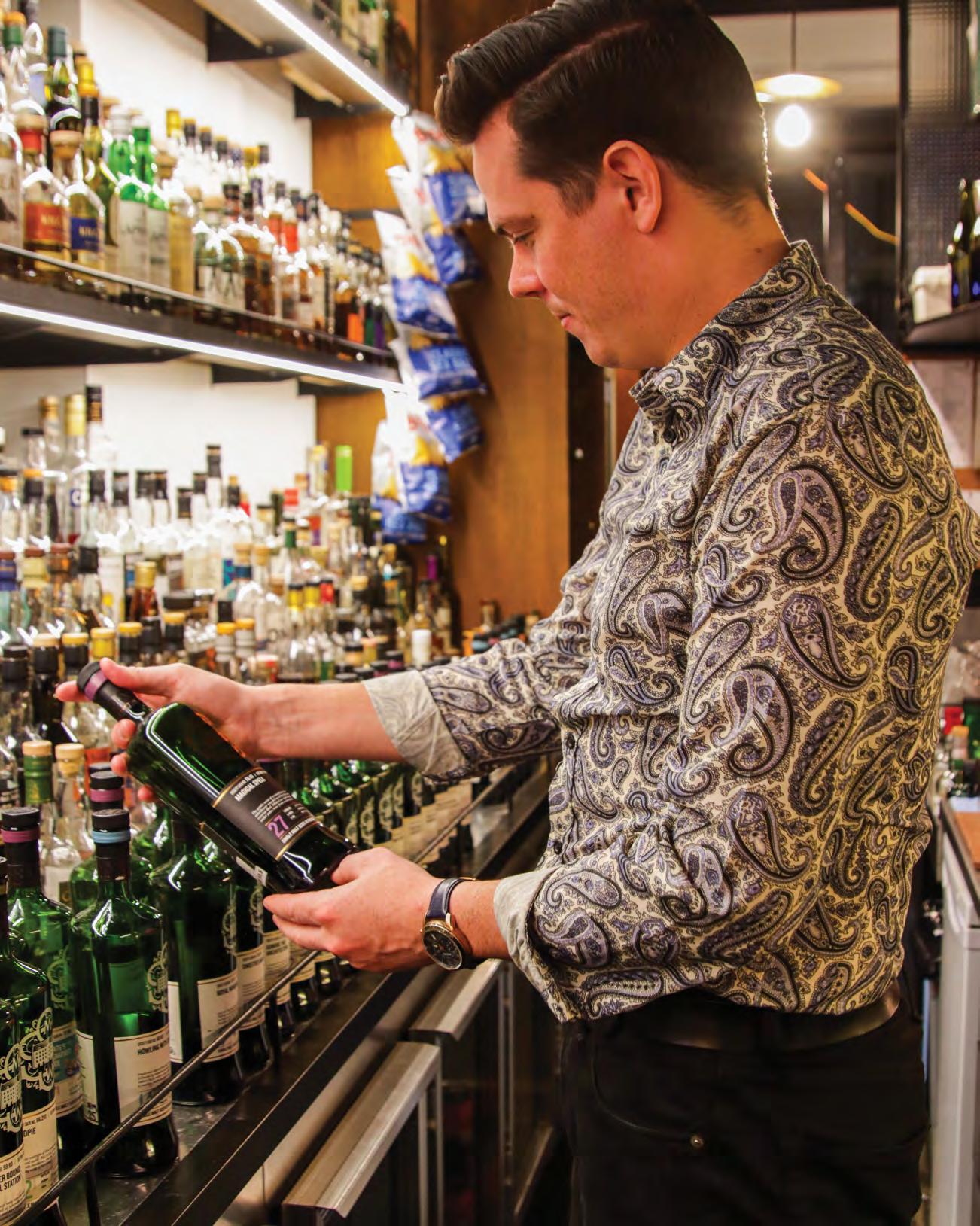

The wine industry has been full of endless information and warnings about fraudulent bottles, whether large shipments of dodgy wines or extraordinary and ancient bottles designed to fool high-end collectors into shelling out many thousands. Spirits, and in particular, whiskies, are far from immune.
Top-end Scottish malts and elite bourbons are in the spotlight. The news program ‘Inside Edition’ focused on a $1,000 bottle of ‘Col. E.H. Taylor Four Grain’, purchased from Ackers in Manhattan (Acker is a name which does tend to pop up more often than they might wish when it comes to stories on fake wines and spirits, though whether this is bad luck, bad management or something more nefarious seems yet to be fully determined). The program focused on this bottle as they could see irregularities in the packaging and labelling, and, sure enough, the distillers, Buffalo Trace, confirmed it as a fake. It is far from the only one with reports from across America. For example, the coveted cult label Pappy Van Winkle is a popular target.
Some experts argue that a degree of blame is attributable to the victim. Greed for these bottles plays a role, and insufficient attention is paid to provenance and authenticity. It is a fair point, but if someone isn’t producing fakes in the first place, it won’t be happening.
Those committing the fraud often get away with it because it can be hard to distinguish if the fake is good enough; often, the only way to tell is to open the bottle, and many collectors do not want to do that; finally, because many of these collectors are wealthy individuals who have no wish to have their stupidity exposed, they’d much rather lose thousands, all right for some.
It is not helped by the number of people selling empty bottles of Pappy and its ilk on eBay and similar platforms.

As well as Pappy and Col. E.H. Taylor, other regularly targeted releases are George T. Stagg, Michter’s, Double Eagle Very Rare, W.L. Weller 12-Year-Old,
Blanton’s Single Barrel and others.
Fakes have long been recognised as a problem for the Scottish malt industry. Organised crime has produced thousands of bottles of top-end fakes for years. Perhaps the most famous incident was in 2017, when a Swiss hotel sold “the world’s most expensive dram’, a pour of 1878 Macallan, to a Chinese tourist. He was not fooled. The liquid was analysed and found to be a blended whisky no older than the 1970s. The hotel had missed that it was in a modern bottle with an inappropriate cork.
Distilleries are starting to use security tags, holograms and similar methods to prevent this. A
technique of assessing the liquid through the bottle is in development to save the bottle from being opened to authenticate.
Collectors of these special bottles are warned to be on guard. Buy only from trusted sources and carefully assess provenance and condition. Look for warning signs. Avoid online specials.
Help may be at hand. Scientists at the University of Glasgow have developed an ‘artificial tongue’ to distinguish between various whisky brands. No doubt other functions for it will follow. Of course, this does require opening the bottle.
The process of making whisky can be talked about for hours, mull over, deliberated on and, ultimately, enjoyed. From the raw ingredients, the distillate, aging, through to special finishing - there are creative minds working together to produce delicious whisky. The job doesn’t stop there, once in the bottle the marketers and brand ambassadors take over charged with giving you every opportunity to appreciate all the passion and expertise that have gone into the making of your favourite drams.
For The Balvenie and Glenfiddich here in Australia that job falls to Ross Blainey, a true Scot from Brookfield a wee village just outside Glasgow. Having arrived on our shores in 2012, Blainey is now an industry veteran who’s not afraid to change it up and match his brands with others creative forces that share similar values and passion. And the results have been simply spectacular.

Sydney’s uber popular restaurant, Firedoor, under the guidance of chef and owner, Lennox Hastie, is well-known for cooking with wood and using the embers to enhance the natural characteristics of the ingredients. Blainey’s idea was to give Hastie some older Balvenie barrels and let him weave his magic.
“The idea first came up after I watched the Netflix documentary where Lennox was smoking Caviar.It was something where people were saying ‘no, you can’t do that’, but it worked,” said Blainey
“I loved the way he takes everything apart and uses the wood to add flavours into his food, it has so many similarities with The Balvenie. He also uses a different kind of wood at the end of the process, another form of wood finishing, which is a synergy with the way David Stewart introduced wood finishing at The Balvenie.”
“When I saw that I had to put forward The Balvenie as the collaboration partner. There are so many shared processes between what we are doing and what Lennox is doing at Firedoor. What I love most about that collaboration, was finding a genuine synergy between the brands. The way he takes everything apart and the passion he has for the work he is doing.”
While the collaboration between The Balvenie and Firedoor is more of the traditional partnership between a drink brand and a restaurant, Glenfiddich’s range of sneakers is not one that easily rolls off the tongue. But then that’s the point.
Dig a little deeper and the synergies are there, not just a shared vision of ‘pushing boundaries’ but the collectability of bespoke sneaker creations and special release Glenfiddich.
“One of the reasons this partnership worked so well is the collectability of sneakers and of our whisky, or whisky in general.” said Blainey.

“Maybe one of the best moments in my career was sitting in the front row at
Fashion Week and seeing the sneakers go down the runway. I work in whisky, I didn’t think I’d be saying that about Fashion Week.”
“For Glenfiddich one of the passion points is fashion. For us it was about doing something where we can get truly creative and push the boundaries. A couple of years back we created a pair of sneakers with Chase Shiel, using the Glenfiddich Grand Cru Black and Gold imagery. We’ve extended that relationship now to include Jordon Gogos. Jordan won the GQ Creative Force and has allowed us to do work that has been similar to the work done with Lennox. Both very passionate and pushing boundaries.”

“The original shoe was designed with Chase Shiel in Melbourne, for the second range I brought Jordan into the process with the fabrics, and we ended up making six unique pairs. They all went down Jordan’s runway at Fashion Week, and are now kept at the powerhouse museum.”
“The sneaker and whisky thing is really interesting, we are going to do some more this year with a new Glenfiddich we are releasing, The Grand Usecura. It’s a 29-year-old finished in rare Japanese almamori casks. It’s been released globally but we are waiting until the spring here”.
Three must visit bars in Australia right now for a relaxed atmosphere and kick-ass drinks:
1. C aretakers Cottage in Melbourne. There’s something special about that place, a pub feel about it and Guinness on tap. I love the custom-made speaker sound system that’s behind the bar. The Dj will be behind the bar with the bar team as they are making the drinks. A great vibe, great music, and the cocktails are insane.
2. M aybe Sammys in Sydney. Still killing it with the overall experience. It’s fun and the drinks are great. It takes upper-level cocktails and makes them fun. You don’t have to take it too seriously.
3. Foxtrot Unicorn in Perth. A hidden underground bar in an old bank vault. The go to place in Perth with great bartending talent and a cracking cocktail list.
Try this drink at home, easy to build and serve to whet your appetite.
50ml Glenfiddich 12 Year Old
30ml Cloudy apple juice
15ml Lemon
10ml Sugar syrup
Top with soda
Option: *dash of bitters
**Garnish with a lemon or a dehydrated apple wheel.
Notes: You can play around with this theme. Orchard fruits are in The Glenfiddich style, so you’ll not go wrong when substituting the cloudy apple for something like nashy pear. If you like your cocktails with a little more punch, you can top with Prosecco or a sparkling wine.


It’s no secret that Scotland has dominated the world whisky market for decades. Revered and studied, collected and traded, Scotch whisky has occupied top spot on the shelf since the end of the Second World War. The world’s first truly global spirit initially rose to power in the late 1800s through its consistent, sharply priced blended Scotch whiskies. Then in recent decades, Scottish single malt whisky cultivated a fanatical following throughout Europe and Asia the like of which other spirits categories could only dream of.
So, with all this ascendancy and market dominance, why would there be any need to add something new to the Scottish whisky equation? What does ‘new’ even look like for a country that’s pioneered so much of the whisky landscape we know today?
A recent wave of Scottish whisky producers are now attempting to answer these questions. “There’s definitely something happening in Scotland,” says Duncan McRae, the co-founder of Edinburgh’s Woven Whisky Makers.
The something he refers to is the almost 30 whisky distilleries that have opened, or reopened, in Scotland over the last 10 years, many of them bringing less conventional methods to the table.
“At the start-up end, most of the 20 or 30 distilleries to come online in the last 10 years have innovation, experimentation and a growth mindset at their DNA level, which has been great to see,” says McRae.
Edinburgh has become something of a hotbed for this new movement, and Woven is both a part of the change while also benefiting from its progress. The Woven blending house McRae co-founded with Peter Allison and three other industry mates is aiming to redefine Scotland’s fundamental whisky export – blends.
“We’re asking people to sort of unlearn everything they’ve heard about Scotch over the last 30 years. And I think the stories told about blending, not necessarily by the blenders, but by the people who sort of define the narratives in the industry, have
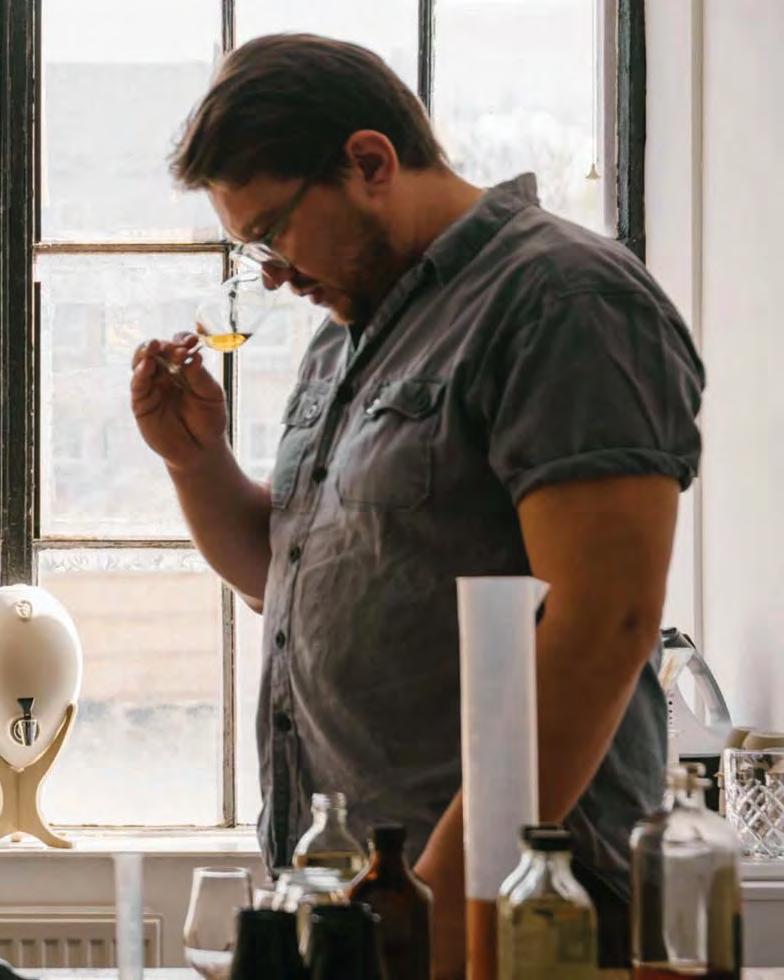


very much been those of mass, bulk, consistency, pretty unimaginative stuff compared to single malt. That’s something that we know is going to take a while to unpick.”
Woven’s bespoke blends are aiming to do just that. Over a dozen Woven ‘Experience’ blends have been released, sequenced into titles that range from Experience N.5.1 Joy in Nature to Experience N.14 Kaleidoscopic. In a nod to future plans, Woven have also created Superblend, a marriage of whiskies from Scotland, Ireland, England, Germany and the USA, a first for a Scottish blending house.
Minimal information is listed on each bottle of Woven whisky. It’s the liquid itself, not the cask (one of the industry’s obsessions in recent times) or the provenance or age of the whisky that Woven want you to, well, experience. But on Woven’s website, you can find a detailed breakdown of each batch, which shows a mixture of older, well known Scottish malt and grain whiskies, as well as components sourced from newly established producers.
“The stuff we’re tasting from this new wave in Scotland, people are ready for it, they’re calling out for it. It’s going to do a lot for the conversation about whisky making and flavour and ask some interesting questions of the overall status quo.”
Another Edinburgh player that’s gently challenging the status quo is Holyrood Distillery. Established in 2019 in the centre of Edinburgh’s historic old town, Holyrood are shooting for the ‘creation of maximum flavour’ in the spirits they produce, with their first whisky due in late 2023.
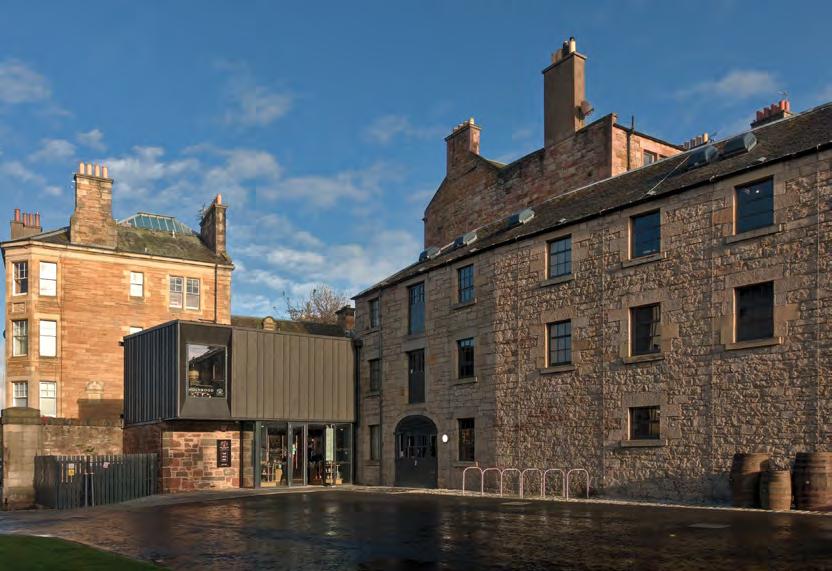
Their production approaches include the use of heritage barley varieties such as Chevalier and Golden Promise, famed, flavourful varieties that were once dominant in former eras of Scotch whisky production. Inspired by craft brewing, specialty malts and unique yeast combinations are also being experimented with.
Not only are Holyrood convinced a new wave of distillers has emerged in Scotland, but they actively promote themselves as being a part of it.
“At Holyrood, we are delighted to be a part of the new wave of Scotch whisky distilleries,” says Holyrood’s assistant distillery manager Calum Rae. “It’s very freeing for us as distillers as it allows us to try things that wouldn’t be possible at established distilleries.”
But for Holyrood, an equal amount of importance is paid to the heritage and legacy of Scottish distilling and brewing. Edinburgh’s extensive and colourful brewing history, for instance, is constantly finding its way into Holyrood’s whisky program, as Rae points out.
“Our use of specialty malts and a wide variety of yeasts allows for a great deal of crossover with the brewing world, and we lean into this whenever possible. We quite often look at historical recipes for beer and see how we can adapt them to the production of whisky.”
The ways in which Scotch has influenced other whisky producing nations is also being explored. When Holyrood distiller Conor O’Keefe was reading a book written by Masataka Taketsuru, founder of Nikka Whisky and one of the godfathers of Japanese whisky, he wondered what it would be like to replicate the conditions Taketsuru encountered while studying distilling in Campbeltown in 1920. Holyrood’s Japanese Sake Yeast New Make Spirit is his interpretation of that era, with sake yeast added to the mix in a nod to Taketsuru’s heritage.
“We think that this exchange of ideas is important to help keep things fresh and exciting and allow Scotch whisky to remain at the cutting edge,” says Rae.
When it comes to the cutting edge, look no further than another of Scotland’s most innovative producers, InchDairnie. Located in Fife an hour north of Edinburgh, InchDairnie Distillery is the brainchild of founder Ian Palmer and his four decades of industry experience. With InchDairnie, Palmer set out to create a distillery to supply blenders with bulk single malt, a well-worn business model. But this central premise is only one facet in InchDairnie’s complex array of achievements, many of which, like Woven and Holyrood, are built around maximizing flavour possibilities.

 Ian Palmer, Managing Director InchDairie
Ian Palmer, Managing Director InchDairie
“InchDairnie does not have any heritage,” says Palmer. “All it has is the contents of the bottle. This automatically leads to flavour. If the flavour is just like everything else that is out there then the business will not thrive, it will just get lost.”
Palmer thinks that this is a part of the logic driving many of Scotland’s newer distilleries.
“In some respects, we [InchDairnie] are part of a new movement where it’s all about the flavour. Where we stand out from this movement is our different approach to creating the flavour – our use of newer technologies and the use of different cereals and malts.”
InchDairnie produces multiple spirit styles throughout the year using different yeasts and distillation methods. On top of the primary InchDairnie Single Malt, created with Fife-grown barley and due for a possible release in 2029, two additional single malts are also produced: StrathEnry, a full-flavoured malt for trading to blenders, and KinGlassie, InchDairnie’s peated malt, set for release as an 8 to 10 year old.
Then there’s RyeLaw, a mixed mash bill whisky created from malted rye and barley, set to become InchDairnie’s first whisky release when it’s unveiled this year. While rye was once common in Scottish whisky making in the 19th century, a rye whisky hadn’t been produced in Scotland for 100 years until Arbikie, another newly launched distillery, released their inaugural expression in 2018.
Palmer says that InchDairnie’s RyeLaw is yet another example of how Scottish whisky makers are responding to different traditions from at home and abroad.

“It’s difficult to know in which direction the inspiration flows,” says Palmer. “I think over time it is a two-way flow. We are all looking to make our product better, and drawing inspiration from others in the wider whisky world has been the way for some time now.”
Writer Dave Broom, one of the world’s leading whisky authorities, has been closely following these developments. His recent book, A Sense of Place, a powerful narrative exploration of the land, history, craft and culture that’s inspired Scottish whisky making, details how both new and old distilleries are responding to this environment.
“I think what you are seeing is the start of two parallel tracks within Scotch,” says Broom. Newer distilleries in Scotland, Broom believes, are responding to the experimentation in whisky happening across the world. As a result, they’re now focused on producing their own single distillery releases rather than creating fillings for blends. In the past, blending houses could dictate the sorts of flavours and styles they were after, but for Scotland’s new distilleries, that’s not the case.
“With so many distilleries – 140 in Scotland alone – there is a business necessity to have a distillery character which is not just of high quality, but different,” says Broom. “That means exploring new ways of thinking – what can we use, what has been forgotten and can be adapted, what are the conditions, and can the location speak? The responses are genuinely exciting.”
Broom points to other recently established distilleries such as Dornoch, Raasay, Ardnamurchan, Arbikie and Nc’nean as representing that shift.
“Scotch whisky in the 21st century is about open field thinking, testing out options, seeking new, distinctive flavours. Distillers are looking at old techniques and old styles and adapting them along with modern technology to widen the flavour possibilities within Scotch.”
Far from resting on its laurels, the Scottish industry is now more layered and nuanced than ever before, with a renewed spirit of experimentation flowing through the industry. After a century of dominance, the whisky world’s biggest player is once again bringing a whole new flavour to your glass.
Great whisky can be found in an extraordinary number of countries around the world these days but for most of us, the spiritual home is, and always will be, Scotland. Whether you enjoy their blended offerings, the honeyed single malts of Speyside, the alluring smoky peat of the gems from Islay, or whatever style flicks your switch, Scotland has it all.
Its importance to the UK economy cannot be overstated, employing 11,000 people in Scotland, which includes more than 7,000 in rural regions. Overall, it provides over 40,000 more jobs throughout the entire country.

Any doubt as to whisky’s importance to Scotland, something I very much doubt would be challenged by your average Scot, must have been alleviated by the Scotch Whisky Association’s latest figures, released this month, revealing that the annual export volume has increased by 21%, equating to a total of 1.67 billion bottles, more than fifty bottles exported every second. The value of exports of their national nectar was up by an astonishing 37% to £6.2 billion, the highest amount ever recorded. The traditional market of the EU, despite increases in Germany, France and Spain, was overtaken by the Asia-Pacific region, with growth especially strong in Taiwan, Singapore, India and China. Much of this is attributed to the recovery in hospitality, post-Covid, and the rebound by travel retail. The figures also highlighted the move to premiumisation in certain countries, notably in Latin America.
The USA maintained its position of leading importer by value, recovering from the Trump tariffs which harmed sales, to return to an annual figure of over one billion pounds.
India has overtaken France as the largest market by volume, astonishing when one considers that whisky from Scotland comprises only 2% of that whisky market. Volume increased to 210 million bottles, up by 60%. Proposed UK-Indian free trade deals, which would ease the tariff of 150%, are expected to increase Scotch sales in India by a billion pounds. This would be on top of the 200% increase over the last decade. A considerable proportion of this is bulk blended whisky.
As exciting as that is for the distillers and exporters, it has to come from somewhere. Whisky cannot be produced overnight, of course, so other markets could suffer, prices could escalate (seems inevitable) or possibly quality could diminish as younger and younger components are used in blends. Will we see an ever-widening divide between the quality of the top releases and those of the basic brands?
Is there a limit or can we expect ever-increasing prices for top Scottish whiskies? Richard Woodward from Club Oenothèque has a theory, and we’ll look at that below. Indeed, it is hard to think of any spirits writer who has not focused on these incredible old malts at some stage.
Perhaps then, this is the time for consumers to focus very much on what is available here and

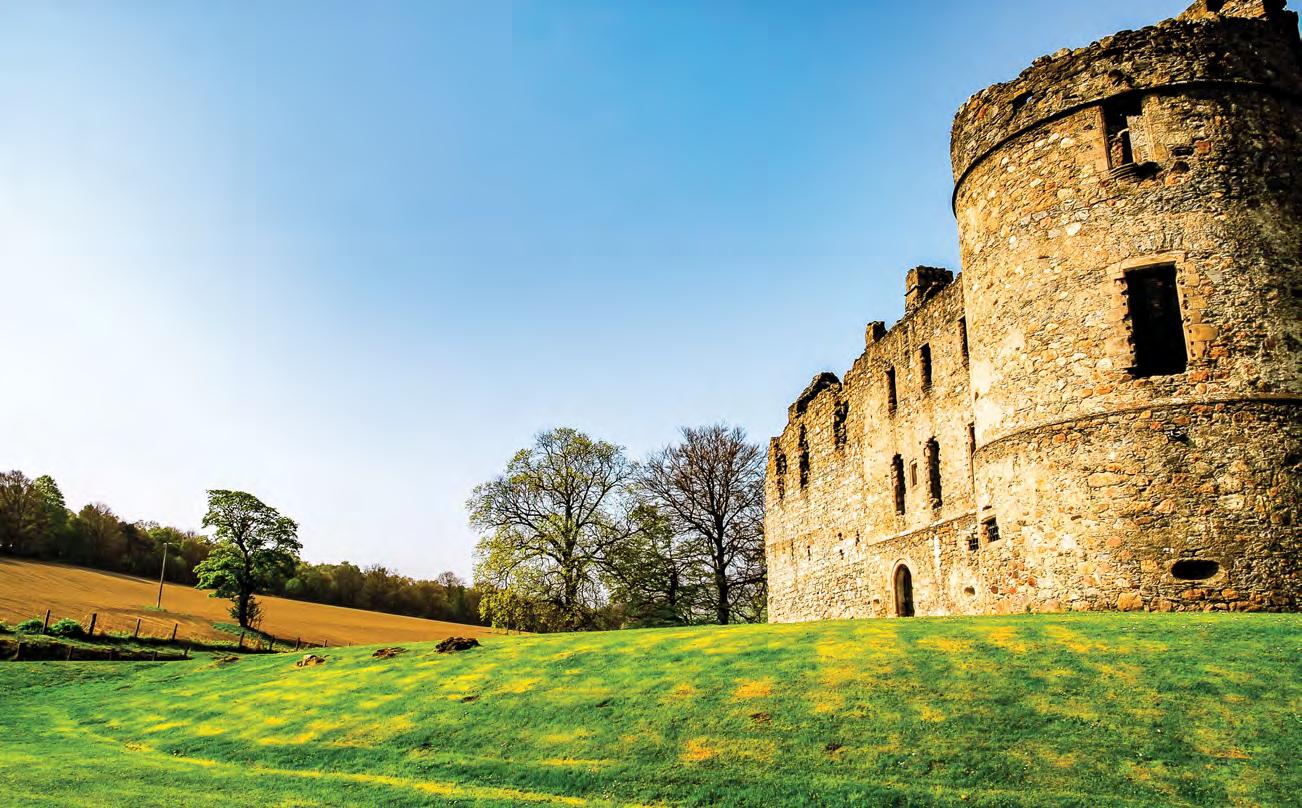

to take advantage before any further rises or shortages. Simply because we have been a very solid market for Scotch whisky for many years does not automatically mean that we will remain so. There are plenty of other whiskies from around the globe, and other spirits, which will take advantage of any opportunity to step into the breach if the importers, distributors, retailers, hospitality staff and perhaps especially consumers drop the ball for even a moment. This does not come as news to anyone in the industry.
Explore WHISKY spoke with representatives of many of the Scottish whiskies available locally to ascertain just how interested in the Australian market they are. In general, very much so at this stage.
A fine example is the team at Whyte & Mackay who have appointed a new brand ambassador to represent their whiskies. Mark Bruce was previously the home brand manager for Jura. It takes some dedication for an Australian to move to a tiny island on the far side of the planet, an island with one pub, one distillery and a population of just over two hundred people.
We have also seen the arrival of the whiskies from the Fettercairn Distillery, located in Scotland ‘under the Grampian foothills in the Howe of Mearns’. It was originally established in 1824 by Alexander Ramsay. Unfortunately, he was forced to sell the distillery just five years later to John Gladstone. His son, William, subsequently became Prime Minister of the UK and Chancellor of the Exchequer, which allowed him involvement in passing reforms through Parliament on the taxation of whisky. A distillery worth watching with their use of ‘locally sourced barley’ and Scottish oak. The distillery has been part of the Whyte & Mackay portfolio since 1973.
Another of their distilleries is the famous Dalmore. At the moment, treasure any bottle you see from this distillery as it is currently slow-going with upgrades and further construction in relation to the distillery, but they are focusing on a yearly release of both their 18 year old and 21 year old whiskies and they will be offering some limited releases vintage whiskies as well.
Another distillery to look out for is Aberfeldy, part of the Bacardi empire. Whisky fans will know the name well as the village of Aberfeldy in the Highlands, where the distillery is located, supplies the largest malt component of the famous Dewar’s Blended Whisky (as a kid, I remember the bottles in my father’s liquor cabinet – and he didn’t drink – which always included Dewars, as well as names like Talisker, Haig and others: I figured that they must have been famous to have a spot there, but they would have all been gifts from grateful clients).
It was John Dewar & Sons who founded the Aberfeldy distillery in 1896 (Dewar himself was born the proverbial stone’s throw from the village). It was closed down during both the First and Second World Wars, as food shortages meant that barley could not be allocated to whisky but has slowly grown in size and importance. The water supply is the Pitilie Burn, a stream which runs next to the distillery. No other distillery has access to these waters. They use Alembic copper pot stills. The resulting whisky is often referred to as having a sweet honey note and a pleasing richness with notes of vanilla and caramel. The 12-year-old is the focus. At around $76, it is more than competitively priced.
We continue to see special releases from many distilleries. The BenRiach Malting Season whisky is a fine example. It is released once year, in honour of the process, and small quantities are available here. At $135, or thereabouts, it is very well priced when one considers the skyrocketing cost of limited releases from many distilleries. Exceptionally wellpriced as one will see below.
BenRiach is another Speyside distillery, part of the Brown-Forman empire. It was founded back in 1898 by John Duff, who also owned the Longhorn Distillery. He actually established a private railway between the two. The bankruptcy of a major client, Pattison’s whisky, in 1900, saw production halted (this bankruptcy impacted on many distilleries at the time – the team at Glenfarclas have said that while they were able to survive it, it caused great hardship and set them back decades). Only the maltings continued, for use by Longhorn. Glenlivet revived production in 1965. The whiskies are extremely highly regarded.
The Malting Season is an annual bottling to celebrate the famous malting floor, recently renovated. The latest incarnation saw concerto barley hand malted and then kilned in 2013, before

ageing in first fill ex-Bourbon barrels. It has no age statement, as seems more and more common, but has established a cult following.
While looking at stunning limited-edition whiskies, it is impossible to go past Glenfarclas. They have long been a strong force in the local Scottish whisky market in Australia and are extremely popular. They have recently released a 50-Year-Old single malt. Only 836 bottles were produced, so it is extremely limited all over the world, and naturally priced at a premium - £9,000. Bottled at 50% ABV, the concept is to celebrate the distiller’s chairman, John Grant’s, five decades in the industry. Like all such releases, it is exquisitely presented. In the case of Glenfarclas, however, it is not the first release of a whisky of such a venerable age. 360 bottles of a Sixty-Year-Old malt were released in 2015.
There has been considerable focus recently, on this Speyside distillery, having won ‘Distiller of the Year’ at the 2022 Icons of Whisky Awards.
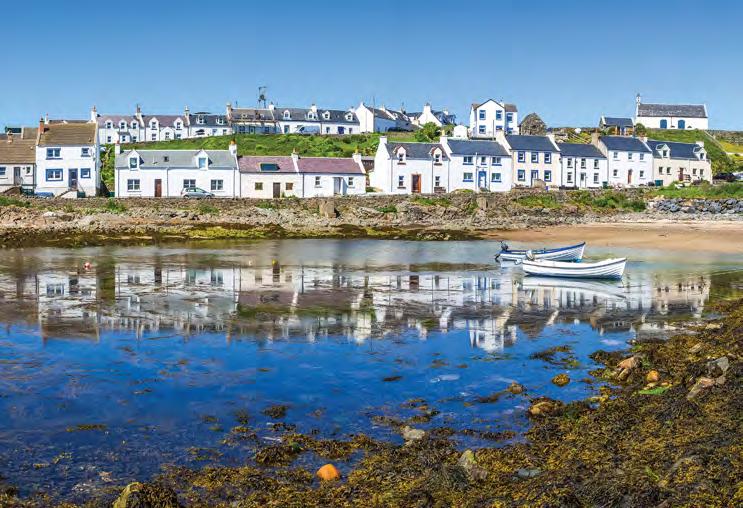
The new whisky was selected by current distillery manager, Callum Fraser, and managing director, Douglas Belford. John Grant is the fifth generation
of the Grant family to head the family owned distillery (it seems that most of John’s predecessors were also named John), which was founded by 1836 – well, technically 1836 is when the distillery received a licence, but it is believed that there may have been distilling on the property for nearly half a century before that, although reports vary. The original John Grant purchased the farm and distillery in 1865 (the distillery seems to have been already working for at least thirty years), for the sum of £511. A local distiller operated the entity for the next couple of decades. It took time for the family to turn its attention more fully to whisky.
The distillery operates with three wash stills and three spirit stills, which are the largest in the region. Usually, four are in operation and two are held in reserve. Production sits around four million litres annually. There are almost 70,000 barrels of whisky held on site, covering every year as far back as 1953. It was John’s grandfather, George, who implemented the program of laying down stocks to age.
They have a long list of awards and accolades for their whiskies and produce an extraordinary array of age-stated whiskies – 8, 10, 12, 15, 17, 21, 25, 30

and 40 years of age, as well as others. John has been responsible for many of the releases.
If managing all those whiskies might seem like an imposition to those crafting them, Callum Fraser would beg to differ, “Creating products like Glenfarclas 50-Year-Old is the reason I come to work. Producing something so special, which has such an incredible story behind it, is tribute to the passion that runs through everything we do at Glenfarclas... I hope the distillery manager in 50 years’ time is as impressed as I am by the quality of the spirit we are laying down for the future, today.” Again, sadly sample bottles are understandably thin on the ground, but all reports suggest a malt of extreme complexity and quality. A member of Whisky Magazine’s Hall of Fame since 2021, John was inducted as a Keeper of the Quaich in 1997 (yes, it sounds like team sports at Hogworts but is actually a very prestigious Order dedicated to honouring those who have advanced the cause of Scotch whisky).

The whisky will be available in Australia from 2023, at which time a local price will become known, but it is anticipated to sit around A$14,000. Australia have been allocated an impressive thirty bottles and while all have already been spoken for, no doubt a bottle or two will appear either at retail or on the secondary market.
It is a category where most malt lovers can only look on with envy. They are simply priced out of participation. The best they can hope, aside from Gold Lotto dreams coming true, is generous, uberwealthy friends or perhaps the opportunity for a tiny tasting at organised events.
While it is unfortunate that these great whiskies are being priced far beyond the reach of ordinary malt fans, what is perhaps even more tragic is that the vast majority of these whiskies will never be enjoyed by anyone, let alone genuine whisky lovers. They are the liquid equivalent of great art or top jewellery, although at least with art, it can be shown to the public and appreciated. Most of these bottles are locked away in cellars and never seen again.
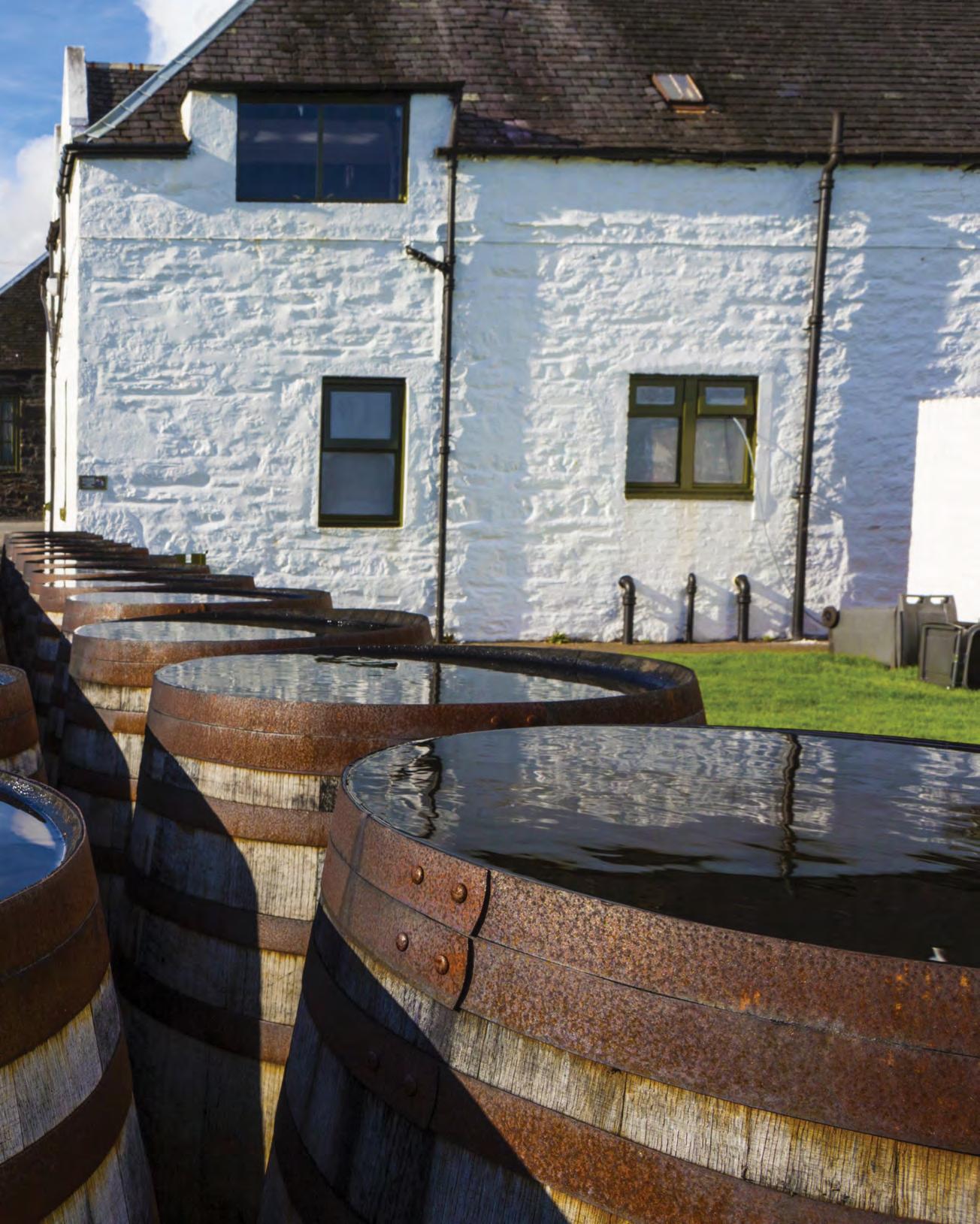

Some examples of these extraordinary but also extraordinarily rare whiskies.
The Macallan is a Speyside distillery which has made a name for itself with unicorn whiskies and limited releases. A favourite for many would be The Macallan 50 Year Old (the 1962 Fine & Rare), enjoyed by both M and 007 in the film, ‘Skyfall’. It is also the malt which is placed on Sévérine’s head for target practice. Daniel Craig and Javier Bardem signed a bottle for charity which raised £9,635.
There is also the 13-bottle ‘Anecdotes of Ages’ collection, with each bottle containing malt from 1967, featuring imagery created by British artist, Sir Peter Blake. Also, their ‘Tales of The Macallan’, which recently saw the sixth and final edition released. For one of the limited run of 350 Lalique decanters from Volume 1, the price is £60,000.
Then we have the legendary Cask 263, filled in 1926. Forty bottles saw the light of day in 1986, of which 12 had labels again designed by Blake and 12 by Italian artist Valerio Adami. As far back as 1991, a Blake bottle reached £6,375. An Adami label effectively doubled that within five years, before another hit $75,000 in the late 2000’s. Then, in 2018, a pair went for $1.2 million. So, not really everyday drinking, but that is the secondary market. More recently, The Macallan 81-Year-Old was released at US$125,000. They also have the ‘Six Pillars’ collection, again in collaboration with Lalique. The final release was in 2016 with 450 bottles of a 65 year old malt. The collection dated back to 2005 with a fifty year old malt for the First Pillar. Four bottles from the set sold in 2019 for £296,500.
Needless to say, while we have seen an explosion of these rare bottlings from Scottish distilleries, expect other regions to follow. Many have already headed down that path. Where Scotland leads, others will follow.
One thing seems certain. There will be more great whiskies from Scotland available than ever before. The question will be whether the ordinary lover of Scotch will be able to source and afford them.


In many ways, single malt Scotch has reached a crossroads. Down one path roam the many distilleries continuing to base their craft on history and tradition, honouring time-proven recipes and processes. Down the other tread, those experimenting with modern technologies and ways of thinking, adapting themselves to a changing market. Very few distilleries are trying to walk down both routes with equal strides, and perhaps none as successfully as Benriach.
The key word behind Benriach’s success is ‘diversity:’ a quality it embodies in every way it can. For Benriach, this doesn’t only mean portfolio diversification but also applies to the processes championed inside each bottle produced. The result is, of course, the characteristically broad flavour profile for which Benriach is now known.
The casks used are a key element of this. Unlike most Scotch distilleries, Benriach’s barrel warehouses are a true treasure trove of the intriguing and unusual, featuring barrels from all corners of the world dating back to 1966. Some of the more frequented sorts used include port, sherry, marsala wine, Jamaican rum, madeira, red wine… the list goes on. Whilst this eclectic playground might be daunting to the uninitiated, it is nothing short of a natural habitat for Dr. Rachel Barrie who is a true master at striking artful harmonies between contradictory casks. Starting her 26-year career as a Research Scientist at the Scotch Whisky Research Institute, Barrie is one of only a handful of female master blenders in the world and has also been inducted into Whisky Magazine’s ‘Whisky Hall of Fame.’ With more than 150,000 cask samples under her tasting belt, her expertise in casks is virtually unparalleled. Or, in other words, Dr. Rachel Barrie at Benriach is a match made in heaven.
It’s important to note that Barrie and Benriach don’t just use these casks to broaden the company’s repertoire but to invoke diversity
inside each individual offering as well. Every whisky in Benriach’s core range has been aged in at least three different types of cask, resulting in multifaceted layers of flavours that morph with every sip. On top of that, the more premium core range offerings—the 21 year old, 25 year old and 30 year old —benefit not only from four unique cask maturations but from a mix of peated and unpeated spirit as well.
Despite the cask diversity, Benriach’s core range is still unmistakeably Speyside: expect rich and smooth malts with flavours of orchard fruit, honey sweetness and toasted oak.
The diversity throughout Benriach’s range is also a rare sight in Scotch, evident through the three styles of whisky: peated, triple distilled, and classic Speyside.
Created every Autumn in a period dubbed ‘Smoke Season,’ Benriach is now home to the oldest and rarest peated whiskies in Speyside. For Benriach, this annual ritual is an opportunity to celebrate an often-overlooked aspect of Speyside’s history: that heavily peated single malts were the preferred palate of the region throughout the 19th century.
The use of peat from the Highlands region imparts a sweet and smoky woodland aroma that is distinctly recognisable from the more medicinal notes typical of Islay. Peated whiskies in Benriach’s range include the Smoky Ten, the Smoky Twelve, and the Smoke Season. The flagship of Benriach’s peated options, Smoke Season, is aged in a combination of American virgin oak and bourbon barrels that amplify its toasted sweet notes.
Benriach’s triple distilled whiskies champion the lighter and more delicate fruit flavours enabled by the extra distillation. A process rarely seen in Scotch due to its associated operational costs, triple distilling creates ultra smooth and delicate whiskies renowned for their finesse.


On top of this, Benriach also runs its stills at an atypically slow pace for all of its distillations to extend the ‘heart’ of the run. This technique captures the maximum level of esters and emboldens the resultant fruit profile, which, in the case of Benriach, is defined by the layers of fresh orchard fruit and vibrant citrus zest found throughout its range.
To this day, Benriach remains one of only two Speyside distilleries to distil whisky using barley malted in-house. These historic floor maltings take place over six to eight weeks during Spring in a period dubbed ‘Malting Season.’ The barley malted at Benriach is used in its annual Malting Season Special Edition whisky, with edition three next to be released. Expect a creamy, rich whisky laden with barley sugar, almond fudge and poached apple, leading into rounded flavours of vanilla and honeyed pear and the lingering nuttiness of slowly kilned malt.

Benriach also has a rotating selection of Cask Edition releases on offer. Highly limited in production, this collection is a liquid celebration of Benriach’s extensive ‘museum’ of rare and unique casks. This range reflects Benriachs flexibility as a

company: whilst it has mastered the art of blending casks together to write the story itself, it is also aware when to take a step back to let the cask share its own narrative.

By this point, many readers might be wondering why Benriach isn’t the first name on the tip of every whisky drinker’s tongue. The reason? Benriach’s success is a relatively recent story. Founded in 1898, it was forced to shut down whisky operations two years later due to the Pattison Crash and
wouldn’t fire up its stills again until 1965. In fact, Benriach only released its first single malt whisky, a 10-year-old, in 1994. Fast-forward 21 years to 2015 and Benriach was awarded the Global Whisky Distiller of the Year. The following year it was purchased by Brown-Forman and, a year on from that, Dr. Rachel Barrie became master blender.
Since then, Benriach has continued to become more distinctly Benriach, embodying the creative history of the company and truly starting to prove itself on the world stage. Accolades from 2022 include the best whisky, 12 Years and Under, at the Spirit of Speyside Whisky Festival, three Double Golds at the San Francisco World Spirits Competition, and three Golds at the International Wine and Spirit Competition; a testament to Rachel Barrie’s mastery behind the casks.
Benriach’s growth has also largely been due to its increasing global presence. For this, one man deserves the credit more than any other: Stewart Buchanan. First hired as Distillery Manager in 2004 to bring Benriach back into production after two years on pause, Buchanan not only worked tirelessly to help get the venue back up and running but has been raising a sweat as global brand ambassador since 2012. In March 2018, Stewart was named a ‘Keeper of the Quaich,’ a prestigious award given to individuals who have made an outstanding contribution to Scotch.
Whilst it’s easy to forget the long path Benriach has taken to get to where it now stands, it’s important to note that its whisky remains exactly what it always has been: a careful balance of tradition and history with a modern playfulness and frame of mind. It is a company that is very aware of who it is, and yet it is always prepared to grow into something more.
The Original Ten encapsulates the signature smooth and multi-layered character of Benriach. Three cask matured for at least ten years in bourbon barrels, sherry casks and virgin oak, to create layers of luscious orchard fruit, sumptuous honeyed malt and toasted oak, all interwoven with a subtle trace of smoke. The perfect introduction to our signature style and richly layered Speyside Single Malt.

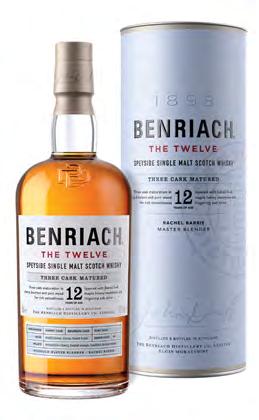


The Smoky Ten has been crafted from a combination of unpeated and peated spirit and three cask matured for at least ten years in a combination of bourbon barrels, Jamaican rum casks and toasted virgin oak. The whisky is then expertly married together to create sublimely smooth layers of sunripe fruit, aromatic smoke and toasted oak spice, lingering into the perfectly balanced sweet and smoky finish.
To make Benriach Twelve, Benriach spirit is three cask matured for at least 12 years in sherry casks, bourbon barrels and port casks. The whisky from each cask is then expertly married together to create a smooth, sherry-rich single malt, layered with baked fruit, maple honey and cocoa, perfectly balanced with a lingering sultana and spiced mocha finish.
This exquisite single malt has been crafted from a combination of unpeated and peated spirit and four cask matured for at least 21 years in bourbon barrels, sherry casks, virgin oak casks and Bordeaux red wine casks. During long maturation Benriach’s sweet Speyside smoke mellows and integrates with the fruit, malt and oak. After 21 years, rich layering develops into an elegant honey smoke, enriched through multi-layered cask maturation. The whisky from each cask type, imbued with particular flavour characteristics, is then expertly married together to create a rich and elegant single malt, layered with lush orchard fruit and toasted pine wood with a honey smoke finish. All in perfect balance.
In 1823 almost half of the scotch whisky available for sale was made by unlicensed distilleries. John and James Grant made their start as distillers with an illegal still, but in 1840 they went legit, showing commitment to their craft by taking out a licence and founding their fledgling operation in speyside. Near the port of Garmouth and close to the River Spey, with peat in abundance and barley fields not far away, they had all the ingredients required to make a whisky of distinction.
Throughout the 170 year history of The Glen Grant only six master blenders have presided over operations: John and James Grant; James’ son, James ‘The Major’ Grant; his grandson, Major Douglas MacKessak, Albert Stephen and Dennis Malcolm. Dennis Malcolm remains at the helm today, ensuring a close lineage to the distillery’s founders and an immoveable dedication to its longevity.
James ‘The Major’ Grant was born in 1847; he took the helm of The Glen Grant in 1872 at the age of 25 when both his father and his uncle had passed away. He was a worthy successor and applied himself to the task of not only continuing the traditions of his family but also progressing the operation to ensure it was still viable into the future. He had a ravenous appetite for new ideas; he was the first man in the highlands to own a car and The Glen Grant distillery was the first to have electric lighting. He was also responsible for introducing the tall, slender stills, which, still to this day, distinguish The Glen Grant through its lovely pale colour and fresh floral flavours. These innovative stills represented the maverick style
of The Glen Grant heritage, the major defied the status quo in developing an alternative to the heavy, raw single-malts without having to resort to a blend.
Nowadays, operations are over seen by master distiller Dennis Malcolm, who was born on the distillery’s grounds and has been a part of the company since 1961.
“Since I started work some 60 years ago the process parameters for making The Glen Grant have not changed. However, the way that the process is controlled has evolved in as much that most of the manual side of the operation has been automated, making it more interesting and far safer for the modern-day operator.”
As a leading Single Malt Scotch Whisky, The Glen Grant use 100 per cent malted barley and kiln dry it to balance germination rates before being milled. Mash turns the malted barley into sugary wort by exposing it to hot water that gradually increases in temperature. The sugar is combined with yeast in traditional oregon pine washbacks and it is here that the fermentation process produces alcohol. Four large wash stills then begin the distillation process. These copper stills have unique ‘purifiers’ which only let the lightest vapours pass through to the next stage of distillation. The lowwines then move into the second stage of distillation in a matching set of four smaller, narrower spirit stills. This is a complex and subtley nuanced process that separates out the middle cut spirit that will be moved into barrels to begin the ageing process.
The Glen Grant distilling process lacks the use of peat, which so strongly dominates many of


scotland’s whiskies that have raw, smokey flavours. Instead the fruit notes of the barley are left centre stage and balanced with the use of old bourbon barrels which impart vanilla and caramel flavours, and some sherry casks from spain. The result is the clean fresh The Glen Grant flavour of orchard fruits that has become so popular.
The Glen Grant portfolio is divided into Principal, Exclusive, and Rare/Vintage. New this year, the Principal Collection now includes the coveted The Glen Grant 21 Year.
Around 1900 the Major founded a new distillery over the road from the original. It flirted with the name The Glen Grant 2 but it has become known as Caperdonich, after the well from which both distilleries pull their water. The Major was as much a socialite as he was an innovator, he would often accompany his guests on walks through the exotic The Glen Grant gardens blooming with rhododendrons and apple Blossoms before settling at the nearby falls to serve drams of The Glen Grant topped with fresh water pulled straight from the very same spring that was used in his
whisky production. To this day, The Major’s cast iron safe is still built into the rock face where some of the distilleries finest whisky is kept for guests. The Major passed away in 1931 as the last Glen Grant, he was succeeded by three daughters and his grandson Douglas MacKessak was decreed to take over.
In 1972 Glenlivet and The Glen Grant distilleries amalgamated. The family remained a key shareholder and Courage Ltd brewing and Suntory Ltd Distillers also took an interest. Grupo Campari acquired The Glen Grant in 2006 as its only whisky label and to this day it is one of the world’s top selling single malt Scotch whisky’s.
This success is in large part due to master distiller Dennis Malcolm. Malcolm began his history with The Glen Grant in 1961 as an apprentice cooper and since then has been master distiller for Glenlivet, brand ambassador for Strathisla Distillers and has been involved closely with a range of community organisations in The Glen Grant’s home of Rothes.
“I returned to manage operations at The Glen Grant in 2006, when the Campari Group purchased it, and where I have remained to this day in the role of Master Distiller.

“I have always strived to make the most consistent quality single malt, which embraces the profile style created by my predecessors and never compromising on quality for cost benefit.”
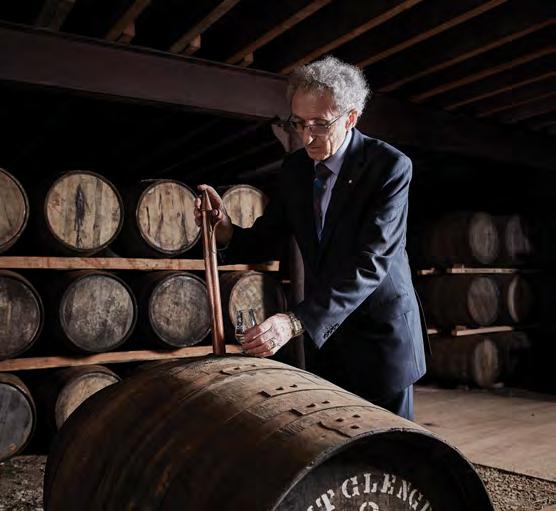
In a bid to further remember the heritage of the Speyside region the The Glen Grant gardens were restored and re-opened in 1996. They revive the 19th century gardening style and a rare example of an authentic Victorian woodland garden and orchard. Locals are welcome and still come and collect the ripe fruit from the apple and pear trees.
In 2020 The Glen Grant proudly celebrated their 180-year anniversary with the launch of the Arboralis, a single malt aged in ex-bourbon and Spanish sherry oak casks. It is undeniable that their passion for craft of whisky making is as strong as ever.
Right: The legendary master distiller, Dennis Malcolm.
Aromas of orchard fruits, medium / dry, with orchard fruit and malt notes on the palate. A long and complete finish.
Aromas of floral, citrus, apple, honeydew melon, caramel, and oak. The palate comprises honey, vanilla, apricot marmalade, malt, and spice. A long, malty, honey, apple, and soft spice to finish.


Aroma of rich and floral, with oaky overtones and hints of spice. Malty caramel, dried raisins, and vanilla on the palate with a long, sweet with nuts and spice finish.
On the palate, notes of oak, butterscotch, dried fruits, and light spice, with aromas floral/fruity, dried raisins, honeysuckle, and lemon citrus. The finish is long with malty vanilla, pear, and hints of citrus.

If success is measured by how well one fulfils their goal, then by all measures Glenfiddich is Scotland’s biggest whisky success story. Beginning operations in 1887, William Grant founded Glenfiddich with one objective: to make the best dram of whisky in the valley. Now 136 years down the track and William Grant’s valley has grown to include not just all of Speyside and Scotland but more than 180 foreign countries as well. The outcome remains the same, though. To this day, Glenfiddich continues to be the best-selling and most awarded single malt Scotch whisky in the world.
While many moments and decisions can be attributed to Glenfiddich’s success, it is its resistance to compromise and desire for innovation that set them apart. This includes the 1957 decision to hire fulltime coppersmiths to tend to their stills, along with the 1959 establishment of a dedicated onsite cooperage, one of the few that remains to this day. Four years later and Glenfiddich became the first single malt to be actively promoted outside of Scotland, opening up a global dialogue about what had previously been a well-kept Scottish secret. Its ability to remain at the forefront of whisky production can be largely attributed to its autonomy: despite its scale, Glenfiddich remains one of the few entirely family-owned single malt distilleries. In fact, their whisky is still produced in the original Dufftown distillery hand built by William Grant and his children all those years ago.
Another way in which Glenfiddich has set itself apart is through its ability to excel in different price brackets. At one end, the Flagship collection will undoubtedly stir fond memories in the hearts of everybody reading this. At the other end, the Time Re:Imagined collection fresh to Australian shores this year is the kind of whisky that most of us would consider selling our hearts for.
Glenfiddich’s Time Re:Imagined is, as the name suggests, a collection that seeks to highlight the complex and often misunderstood relationship between whisky and time. On top of this, it stands as a testament to the complex balance of nature and the man-made found in every Glenfiddich dram, bringing to light the delicate tension between whisky-making art and science. The collection includes three offerings aged in barrel for 30-, 40-, and 50-years respectively, overseen by just three different Malt Masters since its conception in the 1960’s. The pinnacle expression of Glenfiddich’s signature style, Time Re:Imagined feels something like a bridge between past and present, illuminating all the difficult and often untold decisions made throughout the cask ageing process.
The Glenfiddich 50 Year Old, the flagship of the collection, started its life in just three American oak barrels before being transferred to, and finished in, a single cask for its final two years. On the nose, vibrant initial aromas of orange peel and clementine intertwine with Madeira cake and muscovado sugar, before shifting towards the uncanny bouquet of a foggy Dufftown morning. The palate then builds on this with a lingering sweetness and a complex haven of oak. Inspired by the theme of Simultaneous Time, the half century old dram illuminates the innumerous microclimatic factors that affected its ageing process, all of which are encapsulated in the final product. This is to say, every moment of every sip of Simultaneous Time sings its 50-years of history as a single note. The decanter was specifically designed by computational architect Manuel Jiménez García to embody this idea, bringing to life every second of meteorological data the barrels experienced throughout their 50 years. Only 220 decanters were bottled.
Next in the lineup, the Glenfiddich 40 Year Old Cumulative Time, was created to celebrate ‘remnant vatting’: a process pioneered by Glenfiddich in
years gone by. By using the remnants of the previous batches left over in barrel, the process of marrying the new whisky to the wood is greatly hastened. The technique also means that the final bottle is a symphony of the barrels’ previous 16 batches, accumulating flavour not only from its 40 years of ageing but from previous projects dating back to 1925 as well. Expect a heightened nose of dried fruits, dark chocolate, coffee, leather, and cloves before stewed apple, oak, and subtle peat on the palate. The Glenfiddich Cumulative Time 40 year old whisky is multifaceted and complex, displaying distinct tasting notes from each of its processes. The outer packaging that surrounds each decanter is a take on geological metamorphosis, each being entirely unique.
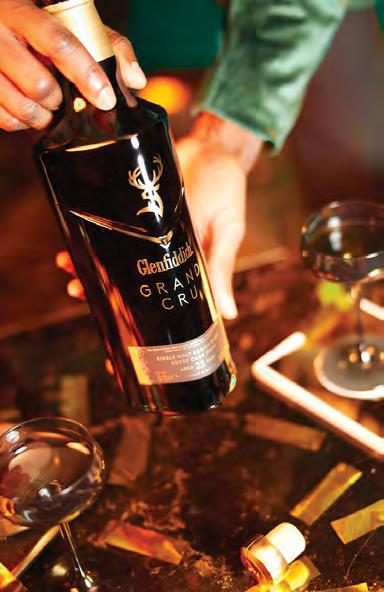

The youngest of the three, the Glenfiddich 30 Year Old, explores the concept of Suspended Time, preserving with it the very moment Master Distiller Brian Kinsman ended the ageing process. Once whisky is in glass it ceases to age, and hence whisky truly can be viewed as a time capsule to the moment it was bottled. On the nose, expect a perfect balance of hearty oak and subtle sherry flavours. The palate is deep and woody, interlaced with delicate floral accents.

The prices of the collection reflect their rarity. The 30 Year Old retails for $1,690, the 40 Year Old retails for $6,490, and the 50 Year Old retails for $64,800.
Another recent addition to the Glenfiddich lineup that has the tongues of whisky afficionados salivating worldwide is the Grande Couronne. Translating to Grand Crown, this dram is nothing short of opulence in liquid form, albeit with a distinctly French flair.


After starting life in American and European oak casks in Glenfiddich’s Dufftown Distillery, Grande Couronne is then moved to carefully sourced French Cognac casks for up to two years. Bottled with no less than 26 years in barrel, expect a whisky loaded with enough toasty oak sweetness to conjure up dreams of a decadent French pâtisserie. If you’re
imagining freshly-baked tarte tatin, buttery choux pastry, and café crème with brown sugar and just a hint of spice then know you’re on the right track; this is the sort of whisky that can transport you to another world.
Retailing for $835, Grande Couronne embodies the Grand Series’ ethos: to challenge whisky making conventions by uniting two separate luxury worlds. Already well established in the Grand Series collection include the 21 Year Old Gran Reserva, aged in bourbon barrels and finished in rum barrels, and the 23 Year Old Grand Cru, which is finished in French cuvée oak casks after 23 years in American and European oak.
Few distilleries, if any, are more synonymous with single malt Scotch whisky than Glenfiddich, and for good reason: Glenfiddich were pioneers and created the single malt category and has managed to thrive in just about every single subcategory of single malt Scotch. Its Flagship collection is a staple in liquor cabinets worldwide, its Re:Imagined collection sits at the very confluence of art and science in whisky making, and the Grand Series continues to push the boundaries of what premium Scotch can be. The only question that needs to be asked is what they will release next…
The colour is antique gold. On the nose is rich orange peel and clementine that meets complex notes of Madeira cake and muscovado sugar. Maturing over time into the dewy petrichor of a Dufftown morning, mingling with flowering geranium. On the palate is a lingering sweetness and softens into deep, silky smooth oak tannin and sundried vanilla. The finish is oaky, sweet and incredibly long-lasting.


The colour is dark mahogany. On the nose is deeply layered expression of dried fruits, dark chocolate, roasted coffee and ripe black cherries. Completed with subtle waves of gentle wood smoke, polished leather and cloves. The taste is luxuriously full and silky smooth taste, with memories of past releases in every nuanced note. Evolving from deep dried fruit notes to rich fruitcake, dates, raisins and stewed apples, before giving way to dry oaky notes, with subtle hints of bitter chocolate and peat. The finish is complex, memorable, and exquisitely longlasting.
Rich bronze in colour. On the nose is exquisitely structured balance of hearty oak married with sweet, subtle sherry notes. The palate is deep, woody flavours interlaced with delicate floral accents, in a complex combination. The finish is warm, honeyed and exceptionally long-lasting.

Antique gold in colour. The nose is vibrant and lively with an abundance of toasty oak sweetness. Reminiscent of a French pâtisserie, freshly-baked Tarte Tatin and buttery choux pastry. The taste is deep, velvety smooth and indulgently sweet. Café crème with soft brown sugar and a hint of spice. A very long-lasting sweet oak finish.
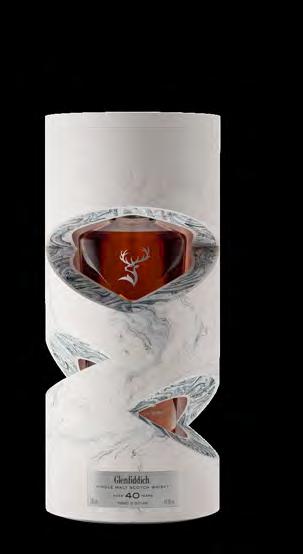

Founded by the great William Grant himself in 1892 and today run by his direct descendants, The Balvenie is one of very few distilleries that manages to distil both its story and personality into every bottle sold. A mix of natural alchemy and centuryold craftmanship, the Speyside distillery has earnt a fierce reputation for its no-shortcut distilling philosophy and for pioneering cask finishing... not to mention for its captains behind the helm. Meet David C. Stewart, the world’s longest serving malt master and member of the Order of the British Empire (MBE) as awarded by Queen Elizabeth II herself for his services to Scotch. Whilst you read this, however, David is in the process of passing the torch down to Kelsey McKechnie, who, after completing a six-year apprenticeship, assumed the position of joint malt master last year.
But above all else, The Balvenie is known for the quality of its whisky, a reputation it has maintained through its unwavering dedication to its five rare crafts. Unlike most of its peers, its defining pillars precede the distillery and start with the cultivation of the barley: all The Balvenie whisky is produced using barley home-grown on its thousand-acre farm. This farm is kept as traditional as possible, with a combine harvester being the only bit of modern technology used. Second, The Balvenie is one
of only a handful of distilleries that still performs traditional floor maltings on premise. Floor malting involves turning the malted barley by hand until its ready for the kiln, a laborious and time-consuming process that increases the richness and aromatic intensity of the final product. For added complexity, The Balvenie dries its malt with anthracite and a carefully judged amount of peat. Third is its stills: the characteristic ‘Balvenie Ball’ shape (reflected in the neck of every bottle) gives vapours more time to mix before continuing to the head. The shape and size of the stills have remained relatively unchanged since day one. Fourth is The Balvenie’s dedication to onsite cooperage. It is the only distillery in Scotland that has onsite coopers and coppersmiths, grows its own barley, and uses traditional floor maltings. Its fifth rare craft is, of course, that which is handled by its masters of malt.
As one might expect from the longest serving malt master, nobody knows Scotch quite like David Stewart MBE. In his 61 years at The Balvenie, David has nosed more than 40,000 individual casks, usually averaging around 30 a day. It is the Malt Master who determines the destiny of every single cask as it ages, deciding which should be bottled after 12 years, which would benefit from specific cask finishing, and which should stay stashed away

for whisky lovers in future generations. More than this, it is the malt master’s role to blend everything together for consistency and balance. Starting at just 26, Kelsey McKechnie became one of the youngest women globally to be granted the role of apprentice malt master. Her first official expression of The Balvenie, The Sweet Toast of American Oak, originated as a vision to create an even fruitier and sweeter expression of The Balvenie by utilising toasted virgin American oak for the finishing process. The 12 year old dram was released as part of the stories collection in 2019.

It would be sacrilege to continue this article without now discussing The Balvenie’s role in pioneering cask finishing, a technique that has—by all measures—transformed not only Scotch production but whisky as a whole. It all started with the release
of The Balvenie Classic in 1983, a dram first matured in American oak casks before being transferred to European oak. Ten years and a few adjustments later and the Classic would morph into what is widely considered The Balvenie’s most important whisky to this day: The DoubleWood 12. Beyond being the original example of cask finishing, the DoubleWood 12 remains the textbook example of how it should be done. The process starts with whisky that has spent at least 12 years in traditional ex-bourbon American oak, before transferring it into ex-Oloroso sherry European oak for an additional 9 months. After that, it is moved to 1000L ‘tuns’ for three to four months before bottling. Each stage lends unique qualities to the final product. The traditional casks impart The Balvenie’s signature rich and smooth style laden with sweet malt, honey, and citrus. The sherry wood—employed more for the European oak than



 Right: The Balvenie operates a working floor maltings, only a handful left in Scotland
Right: The Balvenie operates a working floor maltings, only a handful left in Scotland
for sherry flavours—broadens the profile towards dried fruit and spice, imparting just enough flavour to compliment The Balvenie’s signature American oak base without overpowering it. The final few months in the tuns allow each individual cask to marry together harmoniously.

It cannot be overstated just how greatly The Balvenie’s discovery of cask finishing has shaped the industry; the process has permeated every whisky style and market sector, altering the very history of whisky itself. Unsurprisingly, cask finishing continues to play a prominent role in The Balvenie’s portfolio and is the namesake of its most popular collection. Alongside the DoubleWood 12 in the Cask Finishes collection is the Caribbean Cask 14 (finished in ex-rum barrels), the recently released French Oak 16 (finished in Pineau des Charentes fortified wine barrels), and the PortWood 21 (finished in port pipes). Also in The Balvenie’s portfolio are the Rare Marriages, Craft Whiskies, and Stories Whiskies collections.
Latest to reach Australian shores, the French Oak 16 is The Balvenie’s first foray into the use of French oak. Pineau des Charentes starts as unfermented grape juice fortified by Cognac eau-de-vie, resulting in oak that share many of the attractive properties found in Cognac barrels. Expect a tantalising balance of light florals, tangy citrus, glazed fruits, and a characteristic spice vein.
Above all else, The Balvenie is a distillery that truly has whisky at its heart. This means that it takes zero shortcuts, period, maintaining patient control over every stage from farm to final bottling. As a result, The Balvenie now stands as one of the Scotland’s most important distilleries, reflected both through its leading innovations and the diversity of its portfolio. As the distillery enters a new age under the talented hands and fresh visions of Kelsey, it will be exciting to see exactly which direction The Balvenie will steer the whisky industry towards next.

On the nose is beautifully balanced light floral notes from lotus and geranium flowers dance between hints of fresh meadow grass and pealed apple skin. On the palate showcases an energising zing from tangy lemon rind and grapefruit meet the delicate subtle sweetness of glazed fruits and spice from root ginger. The finish is refreshingly concise.

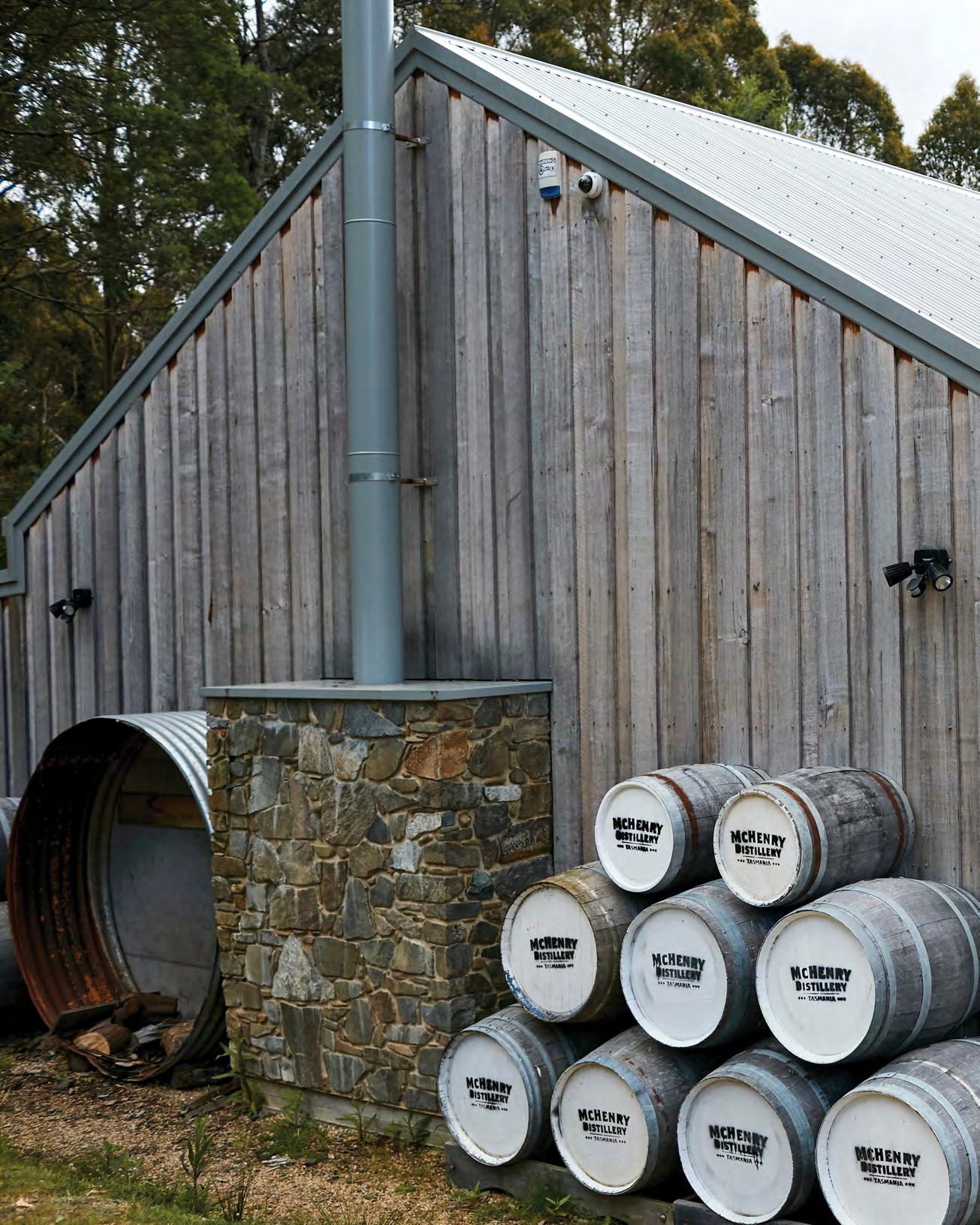

You’re sitting at a bar when someone next to you orders an Australian whisky. What do you make of that? Are you thinking that you’ve never tried an Australian whisky, or about the one or maybe several you’ve tasted? Are you thinking Australian whisky is expensive or affordable? Hard to come by or easy to find? High quality or a bit average?
Whether you’re experienced with whisky or just discovering its delights, you’ve almost certainly heard something about the burgeoning Australian whisky industry. For people like me, who make their living writing and talking about the stuff, I can tell you that the development of the Australian variety is a hot button topic right now.
Whisky has been made in Australia for over 160 years, often in enormous quantities. But the modern Australian whisky scene has its origins in Tasmania in the early 1990s. Since then, around 100 distilleries have come online and are now releasing their own distinct whiskies to market, with dozens more to come in the next decade. This phenomenal growth has mainly developed on the back of small-scale, owner-operator producers releasing single distillery, expensive, hard to come by products. But now, change is on the horizon.
The question of whether or not Australian whisky can progress to a more commercially viable status is now being tested. Smaller distilleries are scaling up, and larger well-capitalised players are entering the space. The once cottage industry will soon be unrecognisable. But who will take the lead in this new landscape? And how does Australian whisky become more affordable and approachable to a broader audience?
When it comes to getting more Australian whisky into drinker’s glasses, Starward is undoubtedly leading the charge. Since launching their first single malt in 2012, Starward, a completely unknown producer operating out of an old Qantas hangar in Melbourne’s north, has transformed itself into one of the world’s most talked about and award-winning whisky brands.
But one Starward whisky in particular, Two Fold, was a gamechanger in helping the brand appeal to a more general audience. “When we released Starward Two Fold in 2018, that was a huge step for us, and probably for the Australian industry as a whole,” says
Jarrad Huckshold, Starward’s head blender.“The price point for Starward Two Fold was around $60-65, and, at that time, there wasn’t really any other Australian whiskies in that price range, and nothing blended. It was huge for us and for the Australian industry in terms of getting our name out there.”
Up until that point, single malt created in the Scottish style had dominated Australian whisky production. Starward, along with Tasmania’s Hellyers Road, were two of the only distilleries to release more affordable offerings in the $80-$100 price range. But Starward Two Fold, a red wine cask matured blend of Starward single malt whisky and wheat whisky distilled at a Manildra Group site in NSW, signalled a shift in the paradigm.
“Now, there’s a much larger number of whiskies around or under that $100 mark,” says Huckshold. “I think it’s been really cool and exciting to see more brands come out in that space, and I think we’re going to see more of that in the next five years.”
One business that’s intent on seeing more Australian whiskies in that space is Tarac Technologies. Based in the heart of the Barossa Valley wine region in South Australia, Tarac has been recycling and re-purposing winery by-products and grape alcohol since the 1930s. They’re the leading supplier of neutral grape spirit to Australia’s booming craft gin industry, and in early 2023, eyeing a big gap in the market – the lack of Australian blends – Tarac announced that they’d started producing whisky as well.
“The simple objective of our whisky program is to provide a range of products that can facilitate and accelerate the growth of the Australian whisky industry in the $65 to $100 a bottle market segment,” says Tarac CEO Jeremy Blanks.
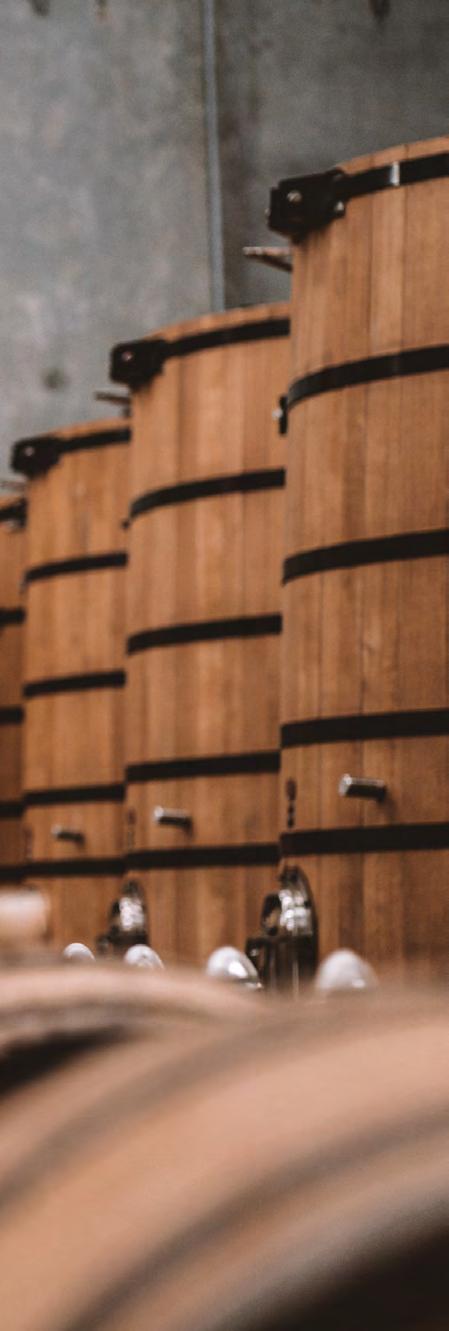
“We see there is a huge opportunity in the industry becoming aware of and leading the consumer into a diversity of styles. The blended whisky segment is a very dominant segment globally, so there’s an opportunity for Australian whisky producers to play in that space.”
Tarac’s first batches of new make, distilled through large column stills from malted barley, were filled

into cask in December 2021. Distillers, blenders, brand creators, anyone interested in adding to or creating their own whiskies will soon have a variety of Tarac stocks to play with.
“There’s some risks, but there’s also quite a lot of opportunities for Australian whisky,” says Blanks. “We have so much talent in craft distillation here and an appetite to give things a go. We’re not constrained by strict regulations and there’s a balance between regulation and freedom. We’ve now got the opportunity to really explore what Australian whisky is about, and to do so without comprising quality.”
Even in Tasmania, long seen as a place that almost exclusively produces limited, premium whisky, things are getting a shakeup. Greenbanks Distilling Co., a new contract distilling operation north of Hobart set to open in 2023, is at the forefront of the change.


Greenbanks was founded by director John Slattery, Hugh Roxburgh and Tim Salt. Roxburgh is the founder of Buckley’s Rye Whisky, while Tim Salt is a former managing director of Diageo Australia. The highly experienced trio want more people drinking Tasmanian whisky, and they’re
aiming to produce their own affordable and widely available brands to achieve exactly that. However, their primary initial focus is to create a range of contract whiskies for a wide client base.
Greenbanks director and distiller John Slattery explains. “We expect our contract client base to include other distillers looking to increase their inventory and those looking for styles of new make that they can’t produce themselves.”
Greenbanks will also make whisky from a variety of different grains, another departure from the Tasmanian norm of single malt production.
“What makes us different to many other Tasmanian distilleries is that we will be able to make whisky from any grain, not just malted barley… There aren’t too many restrictions on what Australian or Tasmanian whisky can be, so there’s a lot of scope for innovation.”
Elsewhere, distilleries are already creating more consumer-friendly Australian whisky brands. Local whiskies produced in American bourbon and rye styles are prime examples. Australia is still one of the most crucial export markets for American whiskey in the world, and well-priced corn whiskies
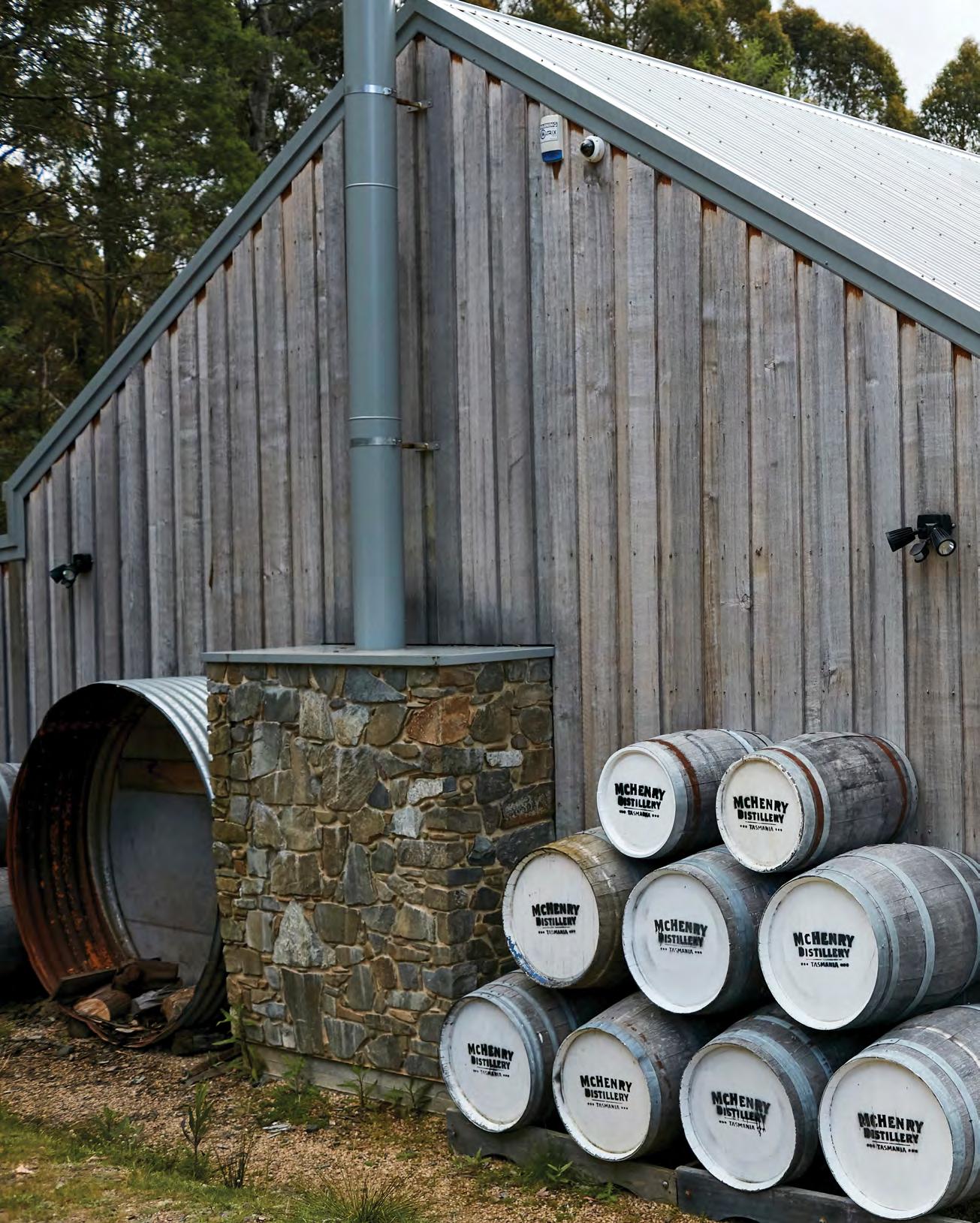

like Upshot from Whipper Snapper Distillery in Perth, and the Dugite and Tiger Snake brands from Great Southern Distilling in Albany are appealing to Australia’s legion of bourbon fans.
But Australia’s rye whisky producers are taking things a step further. Australian rye has an intense earthiness that tastes of the hot and dry farming areas where hardy varieties have adapted to the country. Archie Rose, Belgrove, Backwoods and The Gospel have taken full advantage of this, producing earthy, dense, cereal-forward rye whiskies that taste of the paddocks where their whiskies are born.
Compared to many local single malts, Australia’s rye and corn whiskies are also more competitively priced next to international brands, either by design or owing to consumer expectations.
“We set out to make an Australian whisky that was also value for money,” says Andrew Fitzgerald, co-founder of The Gospel Distillers, one of the country’s top rye whisky producers.
“We’re not aiming to appeal to the collector of whisky that puts expensive bottles on the shelf.”
The Gospel’s flagship Straight Rye Whiskey retails for just over $90, and Fitzgerald is forthright about how Australian whisky has been designed in recent decades.
“Don’t get me wrong, I think small batch, weird and wonderful, creative whiskies definitely have a place, because they’re exciting for people like me and others out there. But if you can’t make a whisky that’s sessionable, approachable, at a reasonable price point, good neat, good in a simple mixer and good in basic cocktails, then you’re not meeting the broader consumer need.”
If we’re talking about the broader consumer need in Australia, then the elephant in the room is definitely whisky RTDs. “The largest category in spirits in Australia is dark spirits RTDs,” says Sebastian Reaburn, Ned Whisky’s master distiller.

Ned Whisky started life as a whisky RTD brand in
2015, pitched as an Australian alternative to Jack Daniel’s and Jim Beam. Ned released their first whisky bottle in 2019, a riff on a wheated bourbon retailing for around $60. But it’s their canned whisky RTD range that’s continued to fly off the shelves.
“Every year, we have to make decisions about what channels we say no to because we can’t supply them all,” says Reaburn. “The data is in. When given the choice, Australians will definitely drink Australian whisky, and when barriers like price and availability are sorted out, we’re going to see a completely different whisky industry emerge in Australia.”
Whatever lies ahead, whether it be bullish growth, undersupply or oversupply, there’s little doubt that the Australian whisky industry is entering an entirely new phase. When, and if, the category steps out of the niche, premium segment and into the ‘mainstream’ zone, only time will tell. Hopefully, the next time you’re at the bar, an order for an Australian whisky won’t seem like such a brave new thing.

Hop in that time machine and go back a decade or two. Imagine a serious look at the local whisky scene back then. That really would be bottom of the barrel stuff – indeed, there are records which suggest that there are decades where not a single drop of whisky was distilled in Australia (1980 to 1990, for example). There was an initial spurt around 150 years ago and then it was all downhill. I recall card games where the loser would have to drink local whisky as a punishment. Today, the situation could not be more different. Craft distillers abound and we are enjoying some incredible whiskies. Tasmania has established itself as a source of brilliant products and numerous other distilleries around the mainland have done the same.

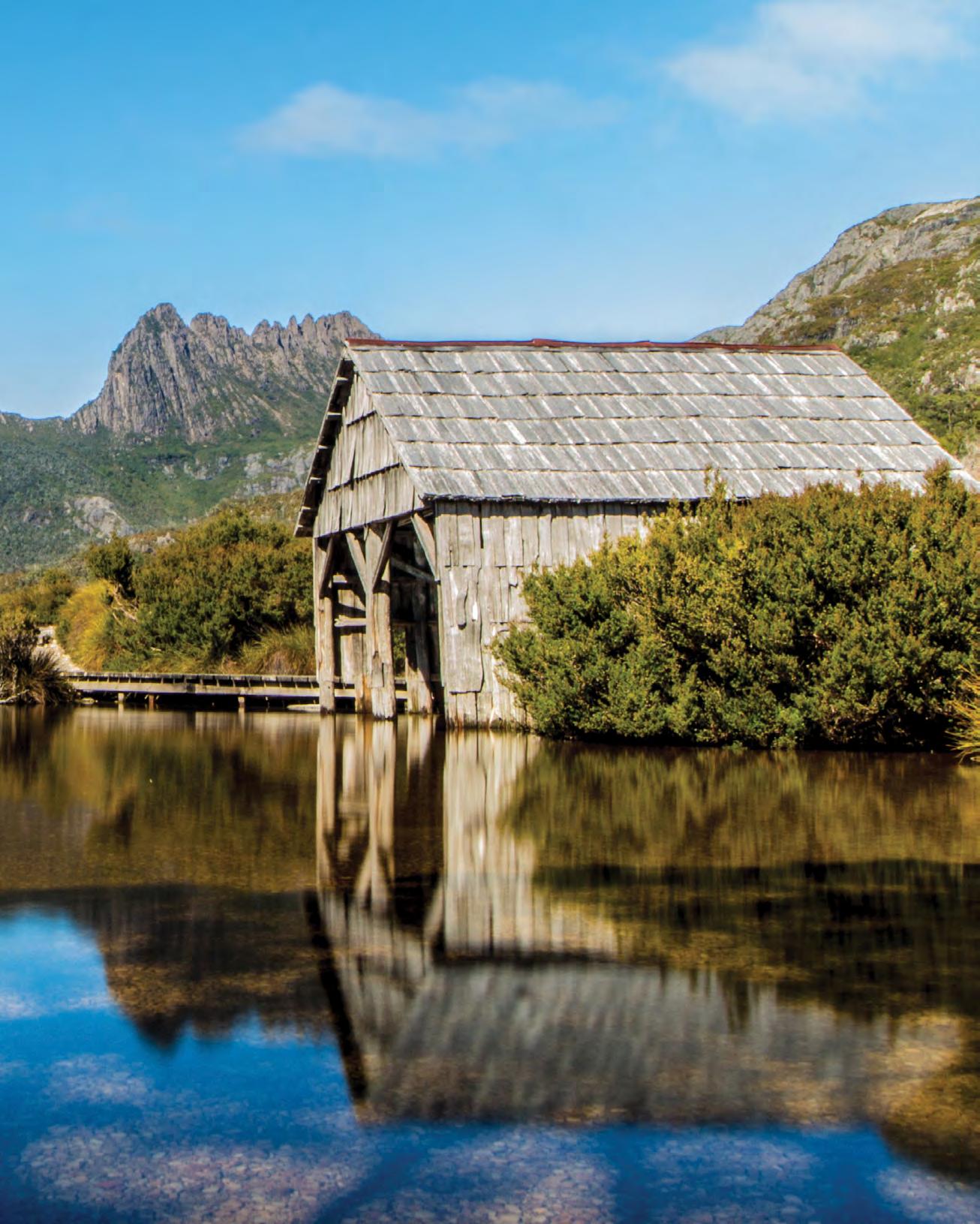
What changed? It dates back a few decades to a fishing trip in Tasmania when Bill Lark, looking around him at the purest water, quality barley, the freshest air and their peat bogs, asked the obvious question. Why on earth was no-one making whisky there. It led to a transformation of the Australian spirits industry in a way unimaginable, both positive and less so. A large part of the reason why no one was distilling was that government restrictions had banned it for smaller operations for more than a century.
Bill Lark set out to change that. The lobbying he did saw the Taswegian regulations prohibiting distilling overturned in 1990 and the Lark family soon had the first distilling licence issued in Tasmania since 1839. Needless to say, the early operation was miniscule in comparison to what we expect from distilleries around the globe.
The Lark Distilling Company effectively dates from 1992 – the family sold 75% of the company in 2013 and underwent a number of years where the story would seem more like a bad soap opera than the
genteel world of whisky distilling – they appear to have finally emerged from the chaos, although recent warring articles in the press about certain personalities have not helped.

Every industry has its growing pains. It is how they come through them that is important. The Lark/ Nant/AWH story has been told many times and is perhaps not really over yet, given the strong feelings that linger. Any retelling is not simple muckraking and gossip mongering, but highlights a major chapter in the short history of the latest Australian whisky industry. To ignore it does everyone a disservice, but the good news is that we have moved into a new era and an exciting one.
By the time of the Lark sale in 2013, a handful of other aspiring distilleries had joined the liquid-gold rush, but even just a decade ago, you were more likely to hear the words ‘Tasmanian malt’ in a trivia evening contest than a discussion of top whisky. Today, there are more than thirty whisky distilleries in Tasmania alone.
Lark’s new shareholders were very keen on seeing a return on their investment as soon as possible, which rarely ends well in the distilling game. The sale of Lark saw considerable changes – expansion and the purchase of whiskies distilled elsewhere. It saw the purchase of various other Tasmanian distilleries, including Overeem.
There was unrest and rumours, but the international success of another early distillery, Sullivans Cove, gave the industry a huge boost when their French Oak Single Cask won the world’s best single malt whisky at the World Whiskies Awards, the first distillery outside Scotland or Japan to achieve that. They repeated the feat in 2018 and 2019.
Perceptions changed. Australian whisky, and especially that from Tasmania, was no longer a curiosity where a few whisky fanatics were making tiny quantities in the back shed. Inevitably, investors gathered. Montec International Limited, a dairy technology company with no experience in the whisky business at the time, moved in, changing
their name to AWH – Australian Whisky Holdings (subsequently, some very experienced members of the Australian liquor industry would join the board – one of the new directors was quoted as saying that the aim is to turn Lark into the Penfolds of the Australian whisky industry). Among the purchases they made was the Nant Distillery. This did not go so well, with allegations of fraud and missing casks. Court proceedings were inevitable, turning that move into a quagmire – the bad feelings from that move have not entirely dissipated. They also took a solid interest in Lark, clearly their flagship.
By now, the Lark family bailed. Daughter, Kristy, established her own operation, the Killara Distillery, while Bill moved on.


It has taken some time to shake out, but it does seem that the focus is now very much on quality whisky.
Part of tidying the mess saw the Overeem Whisky brand sold back to Jane, Casey Overeem’s daughter, in February 2020. The company was renamed the Lark Distilling Co., and perhaps most significantly, Bill Lark was convinced to return to the business and operates as a global brand ambassador. While the Lark of today is very different to what Bill Lark originally created, it does seem that this particular wheel has come full circle. Lark whiskies today are thrilling whisky lovers around the country.
In the end, it will always come down to what is in the bottle. If the industry can all pull in the same direction, or at least a positive one, the sky is truly
Left: Will Edwards, Archie Rose
Below: Jane Overeem, Overeem
the limit. Despite the problems faced along the short journey, it is fair to say that overall, what has been achieved is truly remarkable, especially in such a short time.
What lies ahead is something that should excite us all.
What may be less thrilling is that the prices have escalated in a way that was also unthinkable a few years ago. Some of the special Lark releases have topped $500 and even up to $2,500. Sullivan’s Cove is known for stellar whiskies which often sell out in hours at astronomical prices. With a mature and compelling whisky industry come such costs.
The team at Overeem have not taken long to launch back into the market and have released something one suspects will thrill the whisky nerds among us (and those who simply love a good drink). The last two casks of their 12-Year-Old Bourbon Matured Single Malt Whisky have been bottled, but not as a blend. Rather, they have kept the two casks separate and so one can look at both cask OHD-078 and cask OHD-080 and decide which one prefers. Only 253 and 240 bottles respectively are available. $395 each. For the moment, I’ll leave the assessment of preference to individual readers, but it is definitely an exercise worth doing. These were first fill exHeaven’s Hill 200-litre Bourbon casks. Both are 46%. The tyranny of time means that you will not have the opportunity to purchase a bottle of 12-Year-Old Overeem Malt Whisky until 2028, if you miss these.
Casey Overeem distilled his first whisky back in 1980 at the home of a relative. He has come a long way.

Of course, it is not all about Tasmania. Among the most exciting emerging producers is a well-known name, though not for whisky. The Morris family have been making stunning fortifieds at Rutherglen for more than 160 years (they were named the International Fortified Wine Producer of the Year by the IWSC in 2020). Recently, they have added whisky to the portfolio. In partnership with owners, Casella, the name of the operation is the Copper & Grain Distilling Co.
A few years ago, they kicked off with two malts, their Australian Single Malt Signature Whisky and Australian Single Malt Muscat Barrel Whisky. 100% local ingredients but they do have one advantage over other distillers – a supply of extraordinary barrels for maturation. They have been maturing their fortifieds in them for eons and so here they were, just waiting for further use. Some of these barrels are over a century in age. In addition, they use water sourced directly from the Snowy Mountains. Double distillation takes place though their pair of original, re-conditioned 1930s copper-pot hybrid column stills. They have followed up the initial releases with their Sherry Barrel Whisky and a Smoked Muscat Whisky.
The Casella family, current owners of the Morris Winery, wanted to ensure that they did the best possible job with these new products and so engaged John McDougall to assist in the process. McDougall has some serious credentials when it comes to whisky. He has made whisky in Campbeltown, Islay, Highland, Speyside and Lowland – in other words, in every one of Scotland’s distilling regions. With well over 60 years’ experience in the industry, McDougall has worked with such legendary names as Laphroaig, Balvenie and Springbank.
One of their aims has been to keep the prices reasonable and so we are talking in the $100 to $150 realm.
Figures are not always easy to access, but the IWSR Drinks Market Analysis for May 2021 recorded that local whisky sales had increased over the previous year by 150%. In comparison, in both the UK and USA, growth was 13.9% (still not too shabby). They anticipate consumption in Australia to sit at 14.5% for 2020 to 2025 for whisky, produced locally and
costing between $80 and $150. In Scotland, that figure is 8.4%.
Morris will not be limiting its whiskies to the Australian market. The aim is to take these malts to the world – or at least the UK and USA. At the moment, very few local distilleries export. Starward is a notable exception, although at least two dozen distillers have plans to export.
This is a primary reason why the Australian whisky industry is not at all well known outside this country. It also raises questions about whether or not our distillers are simply aiming to replicate, as best they can, the whiskies from Scotland, or whether there is an emerging and distinctive Aussie style of whisky. If the former, then there really is not that much point in trying to force exports. At the moment, it seems local consumption is certainly working for local producers.
Bill Lark does believe that we are developing our own style and has been quoted as saying that we are producing
“rich, oily malts that are different from your typical Scotch.”
Whisky nerds around the globe will not have missed the significance of the awards to Sullivans Cove and other Australian producers, and will have been very keen to see what the fuss is about. We’d do the same. But that is very much a niche interest. If we are to become a significant international force in the world of whisky, we need to continue developing our own style and getting these whiskies to the world.
In looking at our whisky industry and the concept of an Australian style, it is worth remembering that our rules and regulations are far more lax than in other whisky-producing countries, like Scotland and the United States. Just as our wine industry was not restricted by oppressive Appellation rules, such as seen in France, enabling innovation and expression, so too can our whisky industry benefit from not being hamstrung in similar fashion. The Australian government imposes the rules and so far, has seen fit to allow distillers considerable freedom. Our whisky needs to be distilled from grain and to spend two years in oak. Otherwise, it is largely open slather. Just where this will lead remains to be seen. Some argue
that it will mean that there will be little opportunity to develop an ‘Aussie style’, as if everyone is doing their own thing, there is no chance to that everyone will end up on the same page.
Our varying climate will, of course, bring about differences, and that applies from the cool climes of Tasmania to the very different conditions for distilleries across the Mainland, let alone the differences between here and Scotland. Much of the world uses malted barley imported from Scotland. We use our own and again, the distillers believe that this leads to a difference in the final product.
The popularity of Bourbon in Australia – we are the fourth largest export market – has certainly seen production of rye and corn styles.
A further issue is the introduction of geographical indications. The wine industry went through this and it is always controversial. It has less relevance for the mainland where many of the distilleries are based in cities, but it would seem to be something that could help attract international attention for Tasmanian distilleries. It has good support in Tasmania from many of the local distilleries, but vehement opposition from others. Lark expressed strong opposition at the time when the industry was going through issues. Whether it maintains this opposition into the future remains to be seen.
When Japanese whiskies hit the radar years ago, whisky lovers might have been sceptical but they still wanted to try them. Now we have whiskies from all over the globe – Taiwan, New Zealand, India and so on – and every whisky lover is keen to sample them, whether or not they have great expectations. It will be no different for ours.
The craft distillery scene may seem very gin-centric, but of some 350 distilleries, more than 100 offer whiskies, even if some are in very small quantities (as always, figures differ – elsewhere a source suggests 333 registered distilleries with around 50 offering whisky – both sources would be seen to be very creditable, so take your pick).
While blended whiskies, ryes and wheat-based whiskies are all produced, the majority of local whiskies are single malt. The move from gin to whisky, or at least the incorporation of whisky into
the gin business, is most obvious with popular Sydney distillery, Archie Rose. Very popular for their gins, in 2018 they released a rye malt whisky and in 2020, took home the gong for the world’s best rye whisky in 2020. Their Rye was created in three-year air-fried new American oak casks, with malted rye. This was Australia’s first win in this category, which had previously been dominated by the United States and Canada. Archie Rose is well known for its preference for malted rye over unmalted rye.

If one may be allowed a personal observation about the explosion of craft distilleries, I remain convinced that many of them began with the idea of producing a top-notch whisky or perhaps an elite rum. Reality intervened and many of these small operations realised that even with the best intentions, the time needed to put those products to market would simply be economically impossible. All the costs up front and then no return for four or five or perhaps even ten or twelve years. A rich bloke’s hobby, perhaps, but hardly a sustainable business model. So many of these small operations turned to gin. Aside from being extremely popular in recent years (never a bad thing for a business), gin goes from distillery to dollars in a matter of weeks. But our dreamers never abandoned their original plans completely. And now we are seeing some rums, whiskies, brandies etc, finally being released by these operations, having been matured alongside the more profitable gins. It is an exciting time, indeed.
Archie Rose has come up with a fascinating concept that should thrill whisky lovers, the Tailored Whisky. Consumers, from anywhere in the world, can customise their own individual bottle of Aussie
malt. Consumers are offered a choice of three Australian malts and can then provide instructions as to proportions of flavour components. The base is the Archie Rose Single Malt Whisky. Shortly, the choice will expand to six. At the moment, we have ‘NSW Pale Malt’ (“classic orchard and tropical fruit”), ‘Chocolate Malt’ (“dark chocolate, Porter beer and coffee”), and ‘Native Stringybark Smoked Malt’ (“smoky notes of Aussie campfire and prosciutto”). 1,300 bottles will be available at $149 each. And you design the label. It is this level of innovation which has seen not just Aussie whisky take new steps by leaps and bounds but the Australian craft distilling industry do likewise.
Another distillery making waves is Starward. One of the very few local distilleries exporting their products, Starward was established in 2004, in an old hangar belonging to Qantas. They are best known for using wine barrels, often sourced from the Barossa Valley. The latest is their first white wine barrel matured whisky, their Small Batch Chardonnay Whisky. This time the barrels, aged French oak, were sourced from the Yarra Valley in Victoria and Margaret River in Western Australia.
St Agnes is a famous name in Australian brandy, and they have expanded into whisky with the Camborne range. Naturally, small quantities at this stage, but more than a century of experience distilling spirits make these whiskies to chase.
Needless to say, around 140 years in the industry has provided the team with a wonderful supply of old oak reserves. They use copper pot stills for double distillation, which were installed at the St Agnes
distillery in 1911, and aim for small batches of single cask Australian malt whisky. They use 100% Australian premium barley, which is malted at one of South Australia’s oldest and best-known family-owned breweries (no, I don’t know which one, but I am sure we can all guess). Their four whiskies are Brandy Cask, Sherry Cask, Shiraz Cask and Tawny Cask. The casks which are used can be identified right down to previous use and just whom that was by.
The name comes from the English town of Camborne in Cornwall, which was home to Dr William Angove before he set off for South Australia in 1886. Much of the distilling in Australia might be of recent origin, but there is a long history on which they could build.
We are seeing new and exciting operations coming on stream all the time. The wonderfully named ‘The Gospel’ whiskey is a project orchestrated by Ben Bowles and Andrew Fitzgerald. They work out of a city distillery in Melbourne, having moved in 2019 from a micro-distillery in South Melbourne. It is the only dedicated rye whiskey distillery in Australia.
Ben, who hails from South Carolina, and Andrew, both have engineering backgrounds – very useful for designing distilleries – and they work with Master Distiller, Ian Thorn, to create rye whiskey. Thorn is the only “official Masters level qualified distiller in Australia”. The team source their grain from a single farmer, who is located in the Murray Mallee region. It produces rye which is ‘small and dense’, with powerful flavours.
Among their whiskies are a Solera style. A fivetiered Solera system, with a range of new American oak, second fill American oak and Australian red wine barrels, has been adapted to create a special whiskey. It is simply one more example of the manyfaceted whisky industry that continues to emerge in Australia.
If you think it is exciting today, just wait!
Left: Hugh Roxburgh (left), John Slattery (middle) and Tim Salt (right) from Crafty Spirits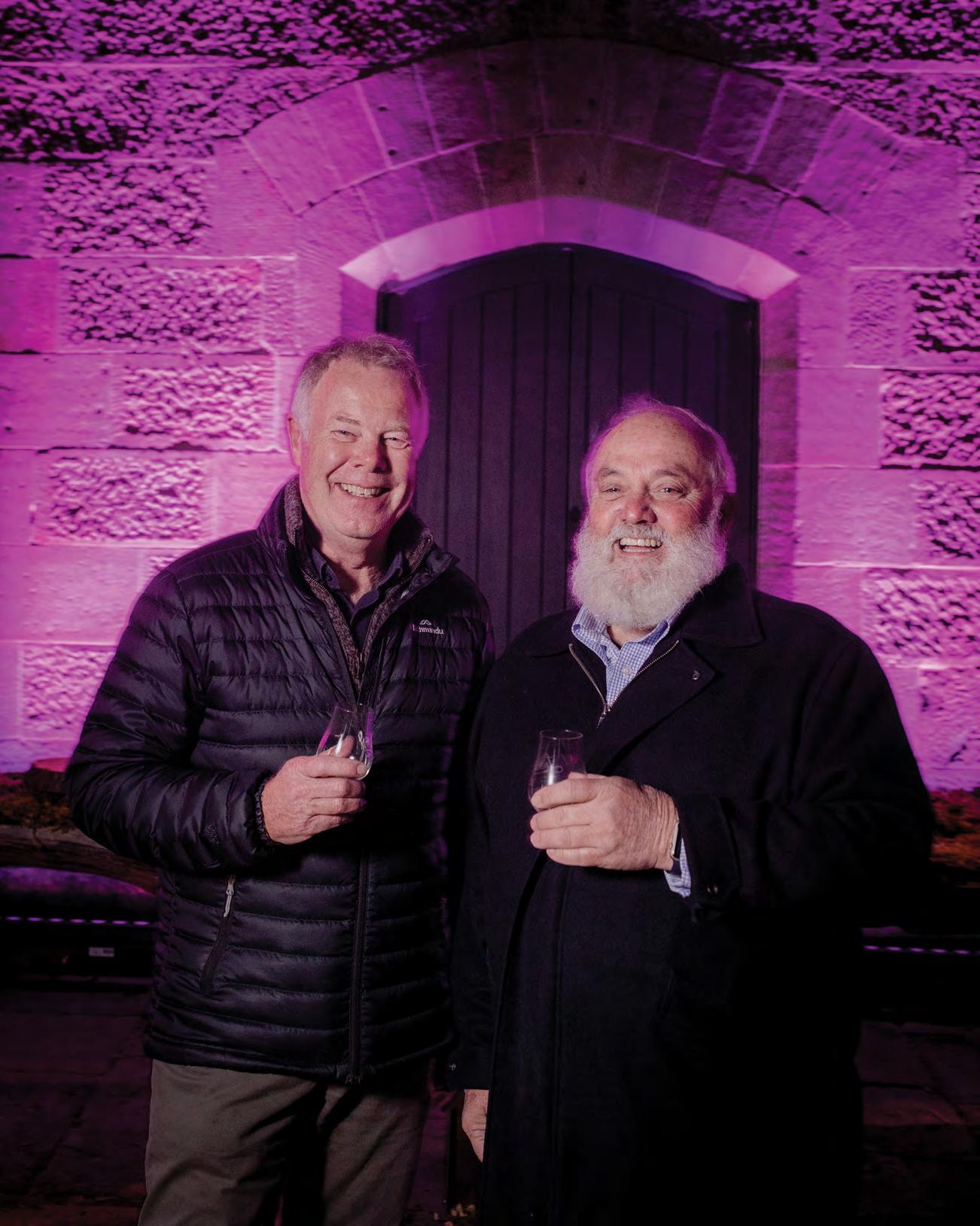
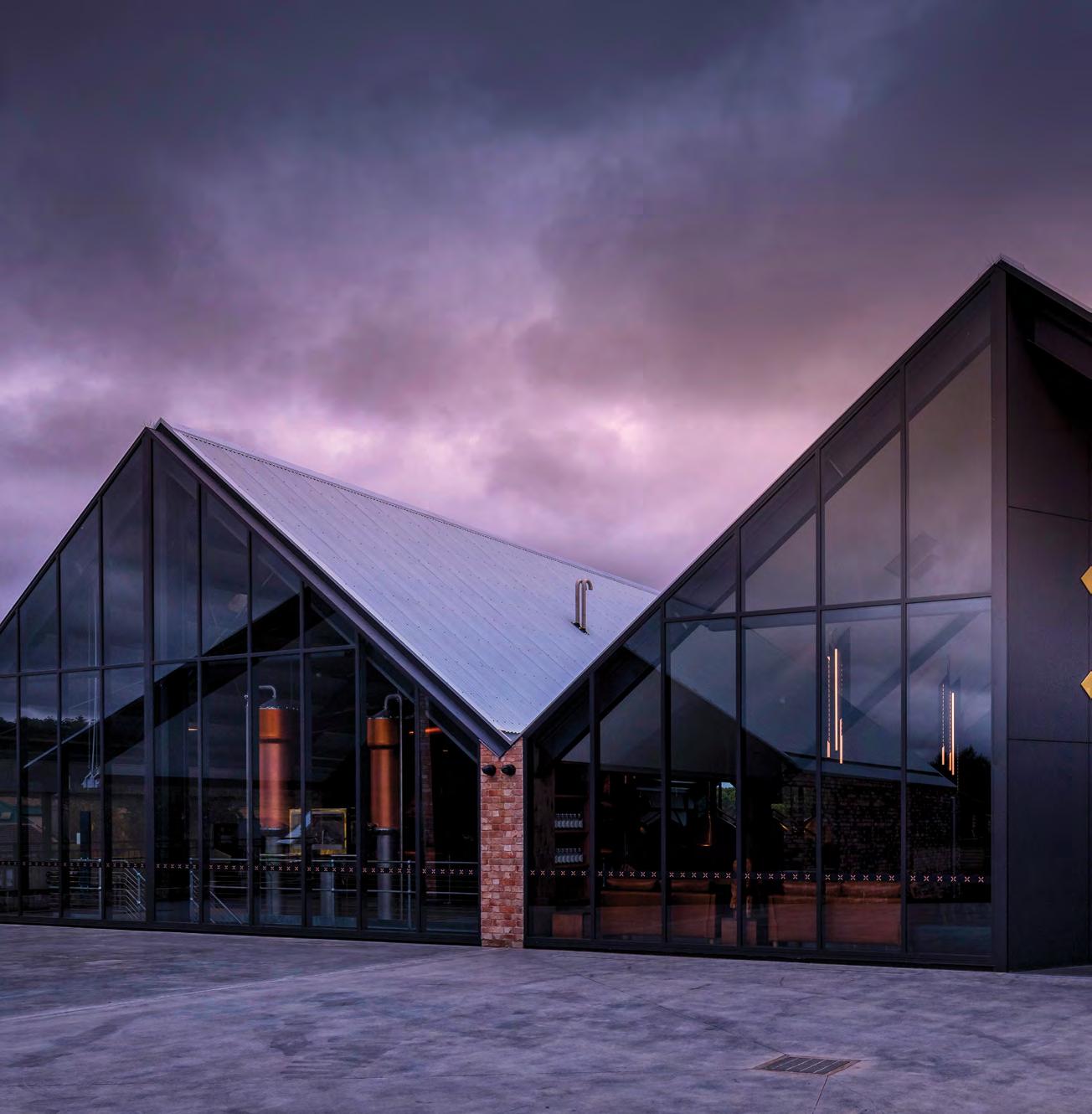
In many ways, Tasmania’s Oatlands is a town that got lost in time at least a few decades ago. With its rolling green slopes, heritage houses, and the comfortable pace of a village where everybody knows each other by name, Oatlands carries the energy of a town that never became overly touristy despite being exactly what tourists tend to look for. This might be about to change, however, with the addition of its newest (and, in our opinion, greatest) asset: the Callington Mill Distillery. In less than two years of operation, the distillery has fast become a quintessential Oatlands icon for one simple reason: the whisky it produces has managed to capture not only the flavour but the very feeling of its sleepy country town. This isn’t a distillery that could have been established just anywhere. This is a distillery that is as tied to its location as the historic windmill they are now endeavouring to preserve.
The story of the Callington Mill Distillery starts with the heritage of the venue itself: the Callington Mill. First operating as a distillery (albeit illegally) way back in the 1800s when entrepreneur John Vincent decided to expand beyond flour, the site’s history immediately stole the heart of Callington Mill Distillery founder John Ibrahim whilst looking for a suitable location to start his whisky dream. Nowadays, visitors are treated with a venue that blurs the modern with the old, juxtaposing one of Australia’s most technologically driven distillation programs against the backdrop of its third oldest windmill. It is currently the only operating mill of its type in the southern hemisphere, making a visit to the distillery a truly multifaceted touristic experience.
The second key component to the success of the Callington Mill Distillery is its team’s expertise: whilst the distillery itself might be a new venture, the hands behind the stills are not. Founder John Ibrahim started learning the whisky ropes at Old Kempton Distillery under the mentorship of the Godfather of Australian whisky himself, Bill Lark. After that, John, along with fellow Callington Mill partners Salim and Danny Nicolas, invested in Shene Distillery, working with and learning from Damian Mackey. Nowadays,

the Callington Mill Distilling team is comprised of Benny Ellery, Blair Whitehead, Lauren Hodgeman, Joshua Ferrier, Samantha Jackman and Jack Sellers, all of whom know their way around a still. Thirdly, equipment: Callington Mill is Tasmania’s first fully automated and integrated turnkey distillery: even Bill Lark admits it’s one of the best equipped, not just in Australia but in the entire world. The barrel room is organised, the stills pristine. Whilst small in scale, the business model is clear: to make the highest quality and most authentic to-location whiskies they possibly can.
Callington Mill Distillery released its first whiskies, the Leap of Faith Series, in 2022. The eight drams are a mix of double and triple-distilled single malts made in collaboration with various Tasmanian icons, including Bill Lark and Damian Mackey. Through its range of casks and styles, the series celebrates the diversity for which Tasmania has made itself known, utilising the ageing solera technique. Callington Mill Distillery uses local water and barley throughout its lineup, and it is clear when visiting the venue just how integral provenance is to the team’s ethos.
The first three whiskies produced entirely in their distillery—the Invicta, El Sol, and Fusion—to be released in 2023. Invicta makes use of ex-port casks from Porto, Portugal, El Sol uses sherry casks sourced from Jerez, Spain, and Fusion is a blend of the two. If you see a bottle (or all three), definitely don’t hesitate to reach for your wallet: these are three small-batch whiskies you do not want to miss.

The cellar door restaurant, headed by chef Jason Partridge, further strives to embody the Callington Mill philosophy of celebrating all things Tasmania and Oatlands, serving dishes based around local seafood, meat, and produce. Several vegetarian options are also available, along with Charcuterie and cheese platters.
Self-guided tours of the distillery offer maximum flexibility and the carefully crafted information panels throughout provide insights that will be useful whether you’re visiting your first distillery or your tenth. For those with heads full of questions, guided tours take place every day at 12pm. This tour is a must for all serious whisky connoisseurs; expect not only a deep dive into the Callington Mill
Distillery but also into the arts and science of whisky itself, covering everything from barley to bottle to tasting.


The real crown jewel of the Callington Mill cellar door, however, is definitely the Serendipity Experience, where visitors get to trial five premium cask strength raw whiskies and, with the help of a crafting and tasting guide, blend them into a unique single malt to bottle and take home as a souvenir, custom label and all. An experience as educational as it is fun.
Despite its youthfulness, Callington Mill has already established itself as a quintessentially Tasmanian company, and, above that, as a company indelibly linked to the slower pace of life of its hometown in Oatlands. Artfully blending new and the old, technology and heritage, it is safe to assume that Callington Mill will continue to grow as a whisky force to be reckoned with both on the local and international stage. It is also safe to assume that Callington Mill will forever remain grounded by the place it calls home.
 Far Left: Callington Mill cellar door
Far Left: Callington Mill cellar door

Aged in small tawny and apera casks and then further evolved in a combination of tokay, muscat and muscadelle. One the nose exhibits notes of rhubarb crumble, marmalade and maple syrup. A complex and perfectly structured whisky.

Liquid Gold Winner by Jim Murray 2023
Matured in ex-port fortified wine barrels from Porto, Portugal.
Rich in both colour and flavour this full-bodied whisky delivers flavours of blackberry, dried figs, cinnamon, nuts and chocolate with a silkysmooth finish.
Awarded Silver New York World Spirits Competition 2022.
Matured in ex-sherry fortified wine barrels from Jerez, Spain.


A well rounded, rich, smooth and complex whisky. El Sol has aroma and flavours of dried fruits with créme brulée before evolving into coffee, cacao and dark chocolate with a lingering finish.
Awarded 91 pts from Jim Murray’s Whisky Bible 2023 and Awarded Gold New York World Spirits Competition 2022.
Matured in ex-fortified wine barrels from Spain and Portugal.
Dark in colour, a velvety rich single malt showcasing a dramatic flourish of flavours. Cacao and dried fruits on the palate finishing with a hint of spice and vanilla.
Awarded Silver New York World Spirits Competition 2022.

The Morris family, who have been making wines in the Rutherglen region since 1859, are most especially famous for their legendary fortified wines. They are one of Australia’s most awarded wineries, and, over the years, they have accumulated more than 4,000 awards here in Australia and internationally. The family is still making wines, with David Morris, a fifth-generation member of the family, at the helm. Even as recently as 2020, Morris of Rutherglen was named the International Fortified Wine Producer of the Year by the IWSC.
In 2016, a collaboration between Morris, Casella and Copper & Grain Distilling Co. was born and began single malt whisky production in the same year.
To ensure they knew exactly what they were doing, they engaged with the world’s best John McDougall and Dr Jim Swan.
John McDougall is one of the most experienced whisky distillers on the planet. With more than 64 years in the industry, he holds the titles of both master distiller and master blender, as well as being one of the most highly respected judges of Scotch whisky. Over the years, he has worked in all five of Scotland’s major whisky districts at some of the most famous distilleries. These include Springbank Distillery at Campbelltown, Laphroaig on the island of Islay, Balvenie in the Highlands, Tormore in Speyside and Ladyburn in the Lowlands. It says a great deal about the Morris project that he agreed to be involved.
The team were fortunate to have the benefit of Jim’s insight before he sadly passed away in 2017. He also had an illustrious career, called ‘the Einstein of Whisky’. His research spanned the entire world of whisky, and he contributed to many famous names,
including Bowmore and Kavalan. Jim worked with Morris Whisky as their Barrel Program consultant. He must have been delighted to do so as they have a unique source of amazing barrels, not only from their red wines, but also the extraordinary fortifieds, some of which spent nearly a century in barrel.
Everything – distillation, ageing and blending – takes place at Rutherglen. The team use only 100 per cent locally sourced Australian ingredients. Locally grown barley forms the mash bill, which is produced at the family brewery. The water is sourced from the Snowy Mountains, and double distillation takes place in an original but reconditioned 1930s hybrid copper-pot column still named Aurora (for those wondering why the still is called ‘Aurora’. It’s named after the princess in Sleeping Beauty as she too, awoke after nearly a century of slumber), which has been on site since 1941. Maturation, at this stage, is in exshiraz and ex-cabernet barrels, sourced from family wineries based in the Coonawarra and the Barossa (French and American oak). Finishing then takes place only in award-winning Morris fortified casks.
Darren Peck is the head distiller who has enjoyed a 25-year international career in the alcohol industry. After training at the International Centre for Brewing & Distilling in Edinburgh, he has what is possibly a unique credential. Darren has produced on every single inhabited continent. He spent many years at Diageo and developed a passion for crafting fine single malt whisky and still works very closely with John McDougall.
The still, Aurora, produces 400 to 500 litres of high-strength, new make spirit at an ABV of 78 per cent. This ABV provides the balance they seek. In comparison, the traditional Scottish method takes it off at 63.5 per cent. For those with an eye on the future, the good news is that the team are laying down stocks daily “with a very long-term view on production and expression finishes”.




Barrel size is barrique and hogsheads. A great advantage for the team is that they have a their very own private cooperage to repurpose barrels
exclusively for MORRIS Whisky and have developed a “customised shaving and toasting method for optimal maturation” as developed by Dr Jim Swan.
The hot summer days and cool nights of the Rutherglen region create the perfect high diurnal fluctuation in temperatures which assist in creating intense flavours and extra levels of complexity in a far shorter time than might occur in certain other northern hemisphere whisky-producing nations.

Their Signature Single Malt has already racked up a treasure trove of awards. The description includes “orchard fruit profiles, macerated black cherry and biscuit notes balancing the zest of marmalade jam, lingering cocoa and dark-berry flavours”.
Finally, their Muscat Barrel Single Malt Whisky has been even more successful on the show circuit. This whisky is finished in their amazing award-winning muscat-producing barrels. “Creamy mouthfeel packed full of rich dark fruits and sweet malt notes… sweet vanilla and cocoa interspersed with cinnamon spice… dates, figs and the sweetness of dark molasses”.
Their Sherry Barrel Single Malt Whisky is matured in a combination of French and American oak, exAustralian red wine casks and then finished in barrels which held the Morris 10-year Amber Apera (apera now being what we called sherry). It is bottled at 46 per cent. The team describe its characteristics as including “spun toffee, baked fruit flan with peach compote and fresh sherry cask notes… a unique Rutherglen character of being produced from all Australian ingredients and finished in Morris of Rutherglen award-winning Apera casks… a wellstructured whisky with subtle spice, toasted nut and clean oak characters… candied lemon with gentle sage and marjoram”.
Finally, the multi award-winning Morris Tokay Barrel is made from all local Australian ingredients and aged in a combination of American and French oak ex-red wine casks at our regional distillery in Rutherglen, Victoria. It is a truly exquisite and unique representation of Australian Single Malt of the highest pedigree, drawing its incredible flavour from the family’s own prized fortified barrels. Finished in barrels that have held our award-winning 15-year-old Morris Cellar Reserve Grand Topaque (Tokay), the result is a decadent and mature whisky that displays the luscious elegance of creamy malt, fresh fruits, hints of butterscotch and vibrant raisin flavours. Golden amber in colour, there are concentrated aromas of sweet toffee, malt, butterscotch and a distinct nuttiness. On the palate, delicate muscadelle, a warm, elegant sweetness with rich, intense mocha, soft caramel and a touch of oak, before finishing luxurious and elegant, as creamy malt intertwines with luscious fruits, bringing home a long and velvety finish.
Morris whiskies may be a newcomer to the Australian spirits scene, but they have already made a mark both locally and international shores, and are fast becoming a national favourite.

40%ABV


Aromas of orchard fruit profiles, macerated black cherry and biscuit notes. An extremely well-rounded palate with a pleasant mouth feel. Zesty marmalade jam, lingering cocoa and dark-berry flavours. Prizewinning ex-fortified barrels impart an unrivalled finish of dried fruit intensity, delivering a seamless, rich depth of character that lingers long on the palate.

46%ABV
Aromas of dates, figs and sweetness of dark molasses. The palate is well balanced and complex. Dried fig, sweet malt, vanilla and spices with creamy mouth feel. Lovely finish with satisfying aftertaste that lingers. Primary maturation in combination French and American oak ex wine casks. This process is followed by extended maturation in barrels which have held Morris multi-award-winning Muscat fortified wine, providing an elevated whisky by comparison to the Signature expression.
46%ABV
Aromas of spun toffee, baked fruit flan with peach compote and fresh sherry cask. On the palate, we experience a well-structured whisky with subtle spice, toasted nut and clean oak characters. The finish shows hints of candied lemon with a gentle sage and marjoram herbal profile.

48%ABV
After receiving multiple international accolades, Morris Tokay Barrel can only be described as a truly exquisite and unique representation of Australian Single Malt of the highest pedigree. Finished in barrels that have held award-winning 15-year-old Morris Cellar Reserve Grand Topaque (Tokay), the result is a decadent and mature whisky that displays the luscious elegance of creamy malt, fresh fruits, hints of butterscotch and vibrant raisin flavours.
Archie Rose Distilling Co. is a true distillery’s distillery; or, in other words, it is exactly what every spirit company aspires to be. In less than 10 years, the Sydney-based endeavour has firmly established itself as a complete celebration of the art and science of distillation, pioneering not just new styles but entirely new approaches and ways of thinking. As a result, Archie Rose Distilling Co. unquestionably stands as one of the most exciting names in Australian whisky and global spirits today, having won more than 400 awards around the world.
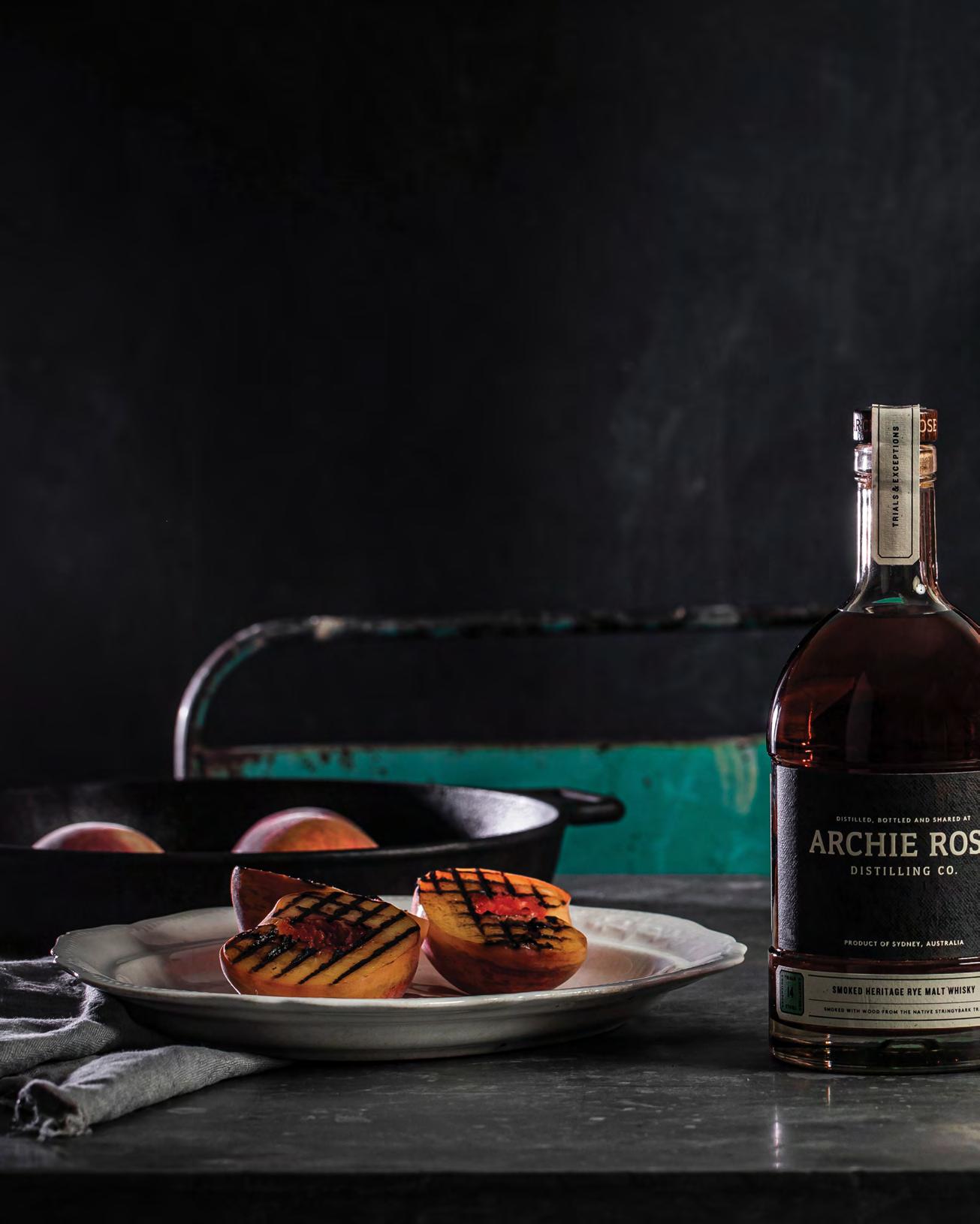

Its secret? Firstly, balance. Archie Rose not only manages to champion whiskies, gins, vodkas and rums without compromise but does so in such a way that the lessons learnt from each can be showcased in the other. The second secret is in the plural: whiskies, vodkas, gins and rums. Founder, Will Edwards always intended for Archie Rose to become exactly what it is today: a masterbrand across a range of spirits that is an ode to diversity, flexibility, and creativity; and—above all—a distillery that puts quality first.
Connection to place is one way Archie Rose has achieved this goal. By using locally sourced water— filtered and treated to remove impurities—and through close collaboration with local NSW grain growers and malting houses, Archie Rose’s whiskies present a uniquely Australian flavour that embodies the landscapes from which they come.
This also forms part of its ethos to support local wherever possible. Beyond environmental motives, Archie Rose recognises this as an opportunity to champion and experiment with malt strains different to Europe’s typical distiller’s malts, taking inspiration
straight from the brewing world. This decision—despite lacking the marketability of rare casks and post-teen maturity—is at the very core of the company’s success. Whereas distiller’s malts typically produce 400 litres of alcohol per tonne, chocolate malt—one of the six specialty malts used by Archie Rose—only allows for 3040 litres. In other words, using specialty malts is a much more inefficient process, but the resultant flavour of the base spirit is incomparable. The complex chocolatey, coffee, and burnt caramel base profile for which Archie Rose is fast becoming known is something that cannot be achieved by taking shortcuts.
Partly due to showcasing its more complex base spirit, Archie Rose has a notably different approach to the cask forward focus common in old- and new-world distilleries alike. This approach is defined by balance; that is, allowing each element of the whisky to shine in equal proportions. This means perfect equilibrium and harmony between malt and oak, with neither dominating the other.
This harmony is present throughout the entire range, albeit through different compositions and flavours. One of its most popular options is the Archie Rose Rye Malt Whisky, a rich and spicy dram made from a blend of malted rye and barley. The malt-forward style is alive with aromatic layers of caramel, toffee, and cinnamon, supported by smooth hints of vanilla and oak.
Also in the line-up is the Archie Rose Single Malt Whisky. This whisky is made using malted barley sourced from three different regions in Australia, including the Riverina, the Murray Mallee, and the New South Wales South Coast. The result is a complex whisky brimming with personality, displaying notes of honey, fruit, and oak. Its bouquet of malt, caramel, and vanilla is equally as captivating.
Quintessential to Archie Rose are its Limited Releases. Differing from many of its competitors, these Limited Releases can be divided into two overlapping categories: whiskies devoted to provenance; and whiskies devoted to creativity.
In the first category are whiskies such as the Smoked Heritage Rye Malt, the Stringybark Smoked Single Malt, and the Single Paddock Whisky Harvest 2018. The two current smoked options use Australian stringybark
in place of Scottish peat to roast and smoke the local malts, pioneering a style that is uniquely Australian and yet still familiar territory for lovers of Islay Scotch. The Single Paddock Whisky Harvest 2018, on the other hand, is nothing short of a story in a glass: the story of, as the name suggests, a single paddock of heritage rye that was dry-grown during drought conditions in 2018. This whisky is a perfect example of the overlap between the categories: the rye—after being semi-fermented and malted three ways—sees a final fermentation using a Saison yeast strain. Other whiskies that embody Archie Rose’s creative spirit include the Archie Rose X St. Ali Blasphemy Coffee Whisky and the White Rye.
In addition to whisky, Archie Rose’s repertoire also includes gin, vodka, rum, and RTDs. Its commitment to quality and innovation has been steadily demanding worldwide attention, evidenced by its title as the International Wine & Spirit Competition’s Best International Craft Distiller in 2019 and 2020.

It was also one of the first distilleries to open up shop in the City of Sydney since 1850. With its distillery headquarters based in Botany and the original distillery home, now the Archie Rose Bar & Cellar Door, located in Rosebery just a few clicks south of the CBD, Archie Rose offers distillery tours and has its own bar right next door. The hour-long distillery tour is a must-do when in Sydney and is a truly phenomenal experience, so much so that it has earnt Archie Rose first place in Barleycorn Awards World’s Best Distillery Experience and a place in Global Distillery Masters Top Three Distilleries in the World for Consumer Experience. Also unmissable is its adjacent bar, which has been designed to cater not only to whisky and gin aficionados but to the friends they drag along. Beyond the complete Archie Rose collection, expect local craft beers, biodynamic wines, and food by local producers.
In just a few short years, Archie Rose has successfully managed to achieve what most new-age distilleries will only ever dream of: to blend tradition with technology, to champion next-gen mentalities with a dedication to perfecting a science that history has made into an art, and to handle contrasting projects in such a way that each enhances the other. But above all else, Archie Rose’s commitment to unique flavour profiles, quality and innovation have allowed it to stand out and shine in Australia’s whisky market.

Matured predominantly in Australian Apera (Sherry) casks, complemented by a selection of ex-bourbon and air dried ex-rye casks, each cooperated with a specific balance of both char and toast. The natural sweetness of these casks complements the savoury charisma of the spirit, revealing fresh herbs, shortbread biscuits, raisins, toffee and dark chocolate on the nose. Meanwhile, the palate is luscious with well-integrated flavours of sticky date pudding and amaretto with a final note of espresso.


Archie Rose’s preference for malted rye over the far more commonly used unmalted rye affords this whisky a point of distinction evident upon the very first sip. This layered, aromatic spirit offers notes of spiced custard, ginger, stone fruit and baked apple pie with a fresh herbal finish that lingers on the palate.

Blasphemy showcases both the unique Archie Rose six malt mash bill and the roasted notes from independent Melbourne roaster, ST. ALi’s blends. Orthodox coffee meets the nuance of Wide Awake’s cold drip method with this double coffee mashup macerated and used to convert cask strength whisky to bottling strength. Blasphemy opens with notes of stewed apples, plum jam and fresh berries then follows through into creme caramel, roasted hazelnuts, amaretto and dark chocolate.
Using both uniquely Australian grains and native timber for smoking, this whisky also steps outside the bounds of convention as one of the few smoked rye whiskies ever produced, combining the deeply evocative flavour of Australian wood smoke to bear on locally grown rye. On the nose, there is notes of juicy mandarin, campfire smoke and marzipan make way for smoked meats, gardenias and scotch finger biscuits, followed by a moreish and complex finish; mandarins and campfire smoke with hints of ginseng and dark caramel.
Rugged coastlines, ancient rainforests, and tranquil rivers, North West Tasmania is home to a diverse and wild landscape blessed with the cleanest air in the world. Home also to pristine produce and locals with an appreciation for craft in their blood, It’s a perfect place to make whisky; a secret that Australia’s oldest operating whisky distillery is now ready to share.
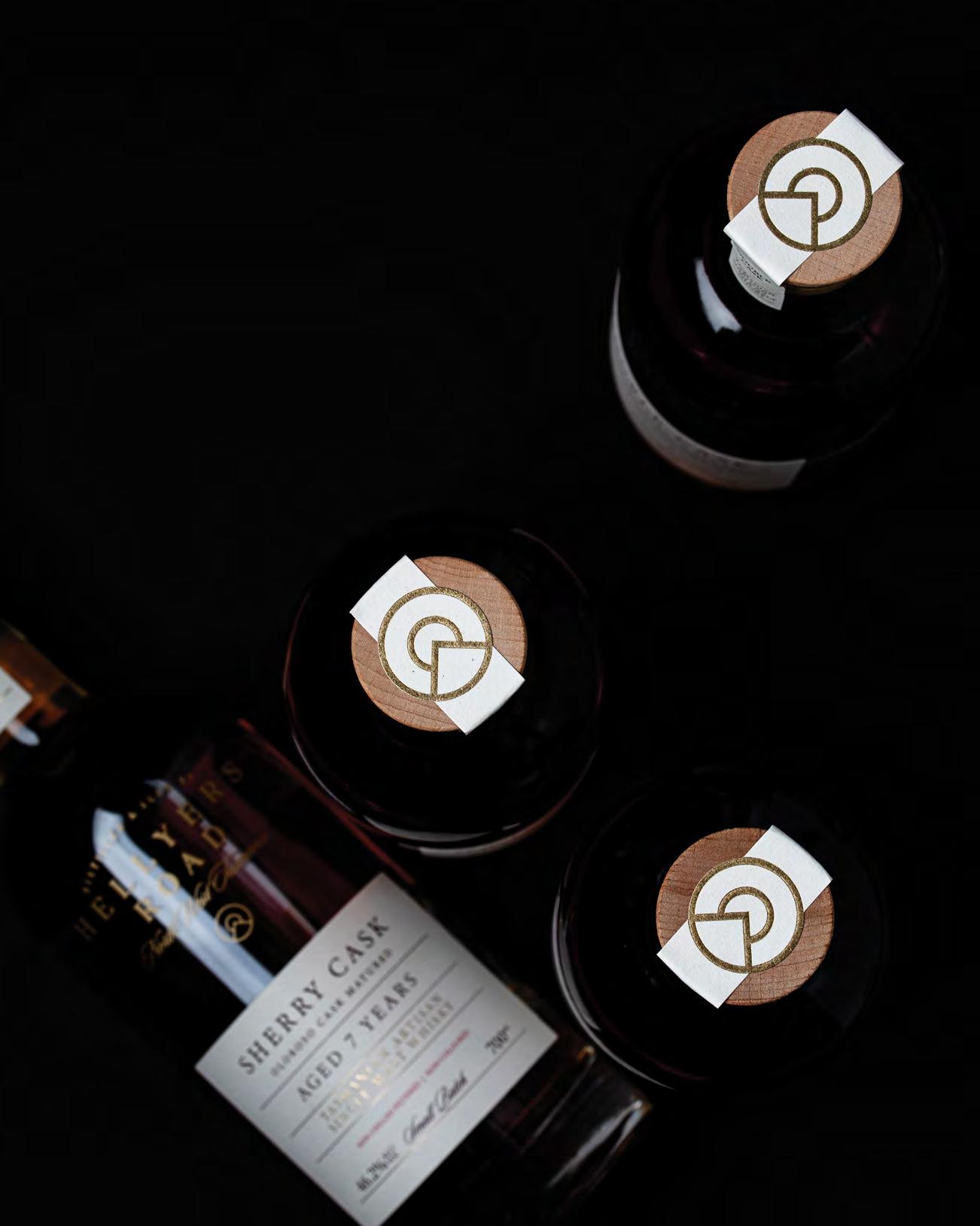
One of the original exploration roads winds its way straight through the Hellyers Road property in North West Tasmania, now home to the Lion’s share of Australia’s oldest single malt whiskies
The story of Hellyers Road began with an unlikely group of would-be distillers who were making a buck in the dairy business close to Burnie in Tasmania’s northwest. Already accustomed to building, growing creating local produce, these innovative farmers knew their environment was perfect for sourcing ingredients of purity and quality. In the late 1990s, they thought it might be an excellent place to build a distillery.
They chose to name the distillery after Henry Hellyer, an explorer and iconic figure in the establishment of Tasmania. Brought over by the Van Diemen’s Land Company in 1827, his job was to survey the region. One of the original exploration roads winds its way straight through the Hellyers Road property in North West Tasmania. Hellyer’s characteristics of courage, curiosity, tenacity and resilience resonated with the newly formed group of brave and imaginative distillers.
It turns out the group’s vision was ahead of the time, and now, thanks to their own tenacity and resilience, the Hellyers Road Distillery is the oldest in Tasmania. Their bond store houses casks with an unbroken line of provenance for every one of their releases dating back to 2001. Like Henry Hellyer, the owners understood what it takes to build a legacy across generations and while they wish they’d put down more, Hellyers Road is one of the few distilleries on the island with genuine aged stock now able to offer 18-year-old (and older) Tasmanian whisky to fans around the world. This can be put down to a policy of riding out the tough times and “not selling the silver to pay for the dinner.”

Their greatest challenge, however, is how to let the world know. This part of Tasmania is also known for its restrained modesty and a quiet pursuit of excellence. This year the brand has undergone a complete packaging refresh, both the bottle and the
label, clearly stating the age statements for some of the range and better communicating the premium quality of the liquid inside, emphasising that Hellyers Road is Australia’s home for rare and aged whiskies. Until recently this has been Australian whisky’s best kept secret.
That is until Hellyers Road was named the Best Australian Single Malt Whisky at the 2021 World Whisky Awards for its Henry’s Legacy Freestone Cove. The cat was out of the bag, and it was no fluke. The following year Hellyers Road won again, this time in the 13-20 year old category with the 15 Year Old Slightly Peated American Oak Whisky. And when you investigate further, the brand has been winning awards right back to 2012, best retold with a visit to their website under a section aptly named “Awards”. There are plenty.

EW: Why did you decide to distil whisky?
I’m a medical scientist by training and practiced for decades as a pathologist. Dad passed away 4 years ago, and he was a whisky-loving Scotsman. We used to homebrew beer together and distilling whisky is a way to continue his legacy, remember him and connect with him in the present. My transition from medical scientist to distiller has been a big one, but the transferrable skills between fields are surprisingly immense.
EW: What distinguishes HRD whisky from the rest? How does your practice influence the taste and profile of the whisky?
Hellyers Road Distillery sits in an interesting space, in that the distillery itself has an industrial feel to it, yet the New Make Spirit and the whisky that the New Make becomes belies its humble beginnings. Much like the unique story of how our distillery came to be, the journey our spirit takes is unique in that a lot of our equipment, from the mash tun to our incredibly tall
wash still, contribute to our signature Hellyers Road distillery character. For example, the height of the wash still and large amount of headspace above the fill level contributes to a light and fruity new make spirit by enhancing the amount of reflux and purification of the spirit before it reaches the large copper lantern and copper condensing apparatus.
EW: What principles guide your distilling practice?
My background in quality control stands me in good stead to focus on the quality aspects of producing the very best whisky that we can, from raw materials through to our maturation framework. There is fantastic scope in the distilling industry to apply the scientific method across several disciplines, from thermodynamics and engineering principals to the biochemistry of yeast metabolism. A creative bent also comes into play here, to think outside of standard practise and encourage innovation within our business and the industry is important to me.
EW: How would you describe the Hellyers Road style?
The whisky that we make honours the North West
Coast of Tasmania and its people. We have a strong sense of place, and our whisky reflects that. Our whisky showcases our raw ingredients, our locally grown malt and pristine water, and our coastal location and its effect on maturation. Much of our whisky is matured in ex-bourbon American white oak and has minimal intervention. Our distillery character is allowed to shine through in our releases and there can be no mistake that it is Hellyers Road.
EW: What is special about making whisky in the Northwest of Tasmania?
Hellyers Road Distillery is in such a special location, we are so fortunate to be in the hinterland of North West Tassie surrounded by some of the most fertile farming land in the world, and yet a stone’s throw away is the ocean…and the weather it brings. Our rugged landscape and changeable weather contribute to profile of the whisky we create, as well as the strong sense of community that the North West coast is known for and is one of the great things about living here. Being part of the tight-knit Hellyers team and making whisky here is honestly a dream come true!
Like all good whisky, brands evolve over time. Hellyers Road is no different; unveiling a new range and packaging. The whisky is all grown up, and now so is the packaging.
“We’re proud of our brand and our heritage, but like any good whisky, we evolve with time,” said Tycho Hugh, marketing manager at Hellyers Road. “It’s important that our visual identity convey the mystery, depth and uniqueness of the inspiring landscape that we at Hellyers Road call home; wilderness like the Tarkine and the Bass Strait, both of which are wild, raw and at times even foreboding.”
“The original Hellyers Road packaging has been updated with a contemporary look and feel, featuring a design that reflects the wild and formidable landscape of North West Tasmania, home to the Hellyers Road Distillery.
Ultimately, we hope our new label design makes it easy to sit down in front of the fire, cradle a glass, and imagine yourself exploring the wild unknown with a brave and adventurous spirit.”
DOUBLE CASK
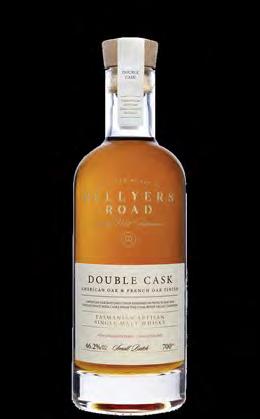
46.2%
American Oak and French Oak Finish.
Candied oranges on the nose, leading to stewed fruits and sultanas with a clove whisper. The palate has subtle cinnamon spice and cereal hints with a soothing finish.

46.2%
12-Year-Old Ex-Bourbon Cask (American Oak) and 5-Year-Old ExPort Casks (French Oak)
The nose offers green leaf, tea, orange marmalade, salted bread and honeycomb. The palate shows pretzel, raison toast, transcending to orange blossom finish of medium length with herbal weave. Elegant.
SHERRY CASK
46.2%
Aged 7 Years
Oloroso Cask Matured
Leather, golden tobacco, noble wood, caramel, and nutmeg on the nose. The palate displays tangy mandarin, oily with restraint leading to a salted bread, slight maltiness and herbs. Subtle sultana sweetness with Jaffa orange and chocolate hints. A textural finish with lovely length. A truly unique expression compared to Australian sherry style casks.
VOYAGER CASK
57%
Aged 19 Years
Single Cask Finish


One of Australia’s oldest single malt aged statements. First matured for 16 years in American Oak, then second maturation for 3 years in French Oak

Nose: tropical, melon, butterscotch, noble wood, and caramelised date.
Palate: orange, caramel and cinnamon spice. Finish: comfortingly mellow.
Bottled at cask strength this whisky has power and poise.
www.hellyersroaddistillery.com.au
The wonderful explosion of craft, micro and small distilleries around the globe have provided lovers of great spirits with so many opportunities for great drinking. This can be a bit tougher for a spirit like whisk(e)y, as one aspect that is critical is time - something smaller operations may not have. For the distillers who have persisted, they are now providing their loyal customers with some scintillating bottles and contributing to an Australian whisk(e)y industry that seemed unthinkable a decade or two ago.
Notwithstanding that explosion and the plethora of distilleries, it has brought us Melbourne’s ‘The Gospel’ - Australia’s only dedicated rye whiskey distillery. The aim of the team, when crafting their Straight Rye Whiskey expression, has always been to make “a traditional American rye whiskey with a flavour nuance that is distinctly Australian”.
The team at ‘The Gospel’ often remind supporters that whisk(e)y is believed to have first been distilled for medicinal use by monks and apothecaries in Scotland and Ireland. Inevitably, distillation evolved and it moved from the monastic to the secular. The reasons
for this are many and varied, not least the migration of humanity over the centuries. A perfect example is seen with the arrival of the early Scotch-Irish settlers in the United States of America. The North American climate proved inhospitable to the early strains of barley and so the settlers used rye to make their whiskey. Australia is not that different, with our dry climate, although we do have a very different history when it comes to the production of spirits.
The team at ‘The Gospel’ took all this on board and “set out to reimagine this original American spirit using 100 per cent Australian rye”. They adopted the “proven techniques of the world’s most famous distilleries, coupled with the attention to detail that only a craftsman can offer, to create rye whiskey with passion, integrity, tradition and belief”. This comes as no surprise, for they believe “Whiskey is Religion, Rye is The Gospel”.
‘The Gospel’ founders, Ben Bowles and Andrew Fitzgerald, both have a long-term love of the craft of distilling. Ben, a South Carolina native, might be a long way from home, but, as he says, he learnt how to distill before he was old enough to drive.

The distillery is located in the backstreets of Melbourne’s
Inner North. Ben and Andrew designed it – it probably helped that they both have backgrounds in engineering. They wanted a distillery “big enough to match their dreams, but small enough to remain hands-on where it matters”. The pair were keen to construct it themselves and enlisted help from their families and friends. The distillery was built over 18 months and features a sixmetre-high continuous column still, again designed and built in-house, as well as a bespoke Copper Pot still. The pair have since been joined by an eclectic group of loyal staff from both the wine and brewing industries. The one thing which unites them is their “fierce love for deliciously unpretentious rye whiskey”.
Crucial to the team is their master distiller, Ian Thorn, who was itching for a chance to create a “uniquely Australian whiskey”. At just 15, an ill-fated attempt to learn the bagpipes led Ian to his first taste of whisky. With a father keen on winemaking, his fate was sealed. After studying pharmacy, he initially focused on brewing. A 200-litre system in the backyard meant a lot of new friends. Further study in the fields of microbiology and biochemistry then led Ian to the UK –far more breweries there from which to learn – although discovering he was working on Fosters came as a surprise. Meanwhile, an interest in whisk(e)y grew.
On his return to Australia, Ian joined the new and ground-breaking ‘Starward Distillery’. Brewer became distiller. One thing that came from that experience was their foresight and preference for local Australian wine barrels over importing more expensive (and often less effective) samples from the States.
As fate would have it, Ian met with Andrew and Ben, and he was brought on board to join them at their new distillery. At first, he only dipped a toe in the water, helping to set up the distillery as a consultant, but soon decided he had a lot to learn in distilling the punishable rye grain and wanted in full time. He has been with them ever since.
Rye and the methods were largely new to Ian, but the challenge was there. One thing that he continues to find fascinating is the large variation in Melbourne temperatures, which force the alcohol in the cask into the oak and then back out again – extracting flavour at a much more rapid rate than areas of low climate fluctuation, such as Scotland. Ian and the team have even incorporated the Spanish sherry concept of soleras into their production, creating a unique and innovative maturation style.
When it comes to cask selections to blend their gold award-winning Straight Rye Whiskey, they often happen upon interesting and different expressions within the bond store. These go on to be released as limited special projects: “even The Gospel’s focus on making 100 per cent rye whiskey has been put aside when it seemed interesting to do so”. And the experimentation is ongoing - just one of the reasons why Ian is so delighted to have found his home here with Ben and Andrew.
The rye used at ‘The Gospel’ is 100 per cent Australian unmalted rye, cultivated by a single farmer in the Murray Mallee region of South Australia. The Mallee is a harsh country and the rye is “small and dense –renowned for its distinct, extraordinary flavour and is unmatched by rye from other areas”. The team
describe their unmalted rye grain as imparting “deep, spicy flavours of vanilla, cinnamon and dried fruit, with developing notes of pepper, grass and grain”.
Their Straight Rye Whiskey is aged in charred, new American oak barrels and is described as tasting of “sweet allspice, clove and pepper, followed by dried red fruit and creme caramel”.

The Solera Rye is crafted in their bespoke five-tiered solera system of new American oak, second-fill American oak and Australian red wine barrels, with the taste described as “a perfect balance of sweet and savoury… Baking spices, rich caramel sweetness, stewed plum with port wine… Sweet oak, orchard fruits, dark toffee, brown sugar and bright spices”.
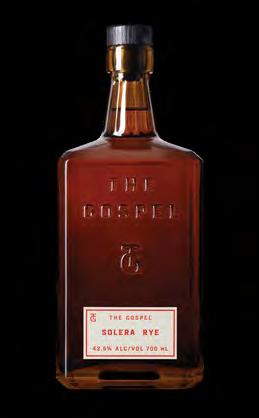

The nose exhibits buttery dark rye bread notes, with hints of spice and light toffee. On the palate are caramel vanilla, sweet allspice, clove, pepper and green apple. To finish is dried red fruit and crème caramel, with woody spices.
On the nose are baking spices, rich caramel sweetness, and stewed plum with port wine. The palate is sweet oak, orchard fruits, dark toffee, brown sugar and bright spices. Rich and long finish, carrying dried fruits and fresh spice.
How can whisky clubs offer Australians better opportunities to discover whisky and what makes The Whisky List different other options out there? Who better to ask than dedicated whisky man, and co-founder, Oliver Maruda.

First, what is the Whisky List?
Oliver Maruda (OM): “The Whisky List is Australia’s online home for whisky, with the largest number of different whisky expressions available to buy. It is a whisky information resource sharing the latest industry news, thought pieces, over 37,000 member ratings, and up-to-date pricing information. There are virtual and in-person tastings, whisky events and exclusive bottlings. We are passionate about helping Australians discover, enjoy, buy and share great whisky.”
How do you engage with your customers/ members?
OM: We offer a range of customer touch points to make buying whisky online easy and rewarding –from our member reviews, our database of price information for over 7,500 bottles from both major and independent retailers, our passionate community in our “Whisky Lovers Australia” Facebook group, and artificial intelligence tech that can create personalised recommendations (think Netflix for whisky).
How has this developed over the last two years in particular with the effect of lockdowns and the wider pandemic?
OM: Both Chris and I (TWL co-founders) have a strong background in tech and data, so our start-up business was created to be agile allowing us to adapt to an ever evolving consumer landscape. When the pandemic first started, we were one of the first to offer online whisky tastings in Australia. We’ve worked to make them as interactive and innovative as possible, creating them to be curated and exclusive at-home experiences rather than pivoting a traditional in-person tasting to a video format. Since the first lockdown, we’ve hosted over 200 virtual tastings. In the last 24 months we’ve individually filled, labelled and shipped out over 86,000 bottles in tasting kits. Virtual tastings have continued to grow beyond the lockdowns, we now host or facilitate around 10 tastings each week across public, corporate and private groups, as well as assisting other major and indie liquor brands who wish to outsource the technological and/or distribution aspects of online tastings
And what about in-person events now?
OM: We partnered with The Whisky Show in 2020 to launch the world’s first virtual whisky festival whilst in strict lockdown and have since run multiple virtual and in-person events and festivals.

So the virtual events have continued to grow?
OM: Supporting independent bottlers and distillers has been a key focus for our business from day dot, so many of our tastings and exclusive bottlings have been for these indie businesses for whom the loss of foot traffic has had hugely detrimental effects on their business, especially regionally based Australian distilleries. We did a special pandemic-themed series of bottlings with the Tasmanian whisky bottler Remnant, named “The Virus”, “The Vaccine”, “The Lockdown” and “Sun’s Out, Guns Out”, the naming for which was crowd-sourced by and exclusively made for our Facebook community
Do you have an environmental sustainability plan?
OM: As ecommerce players during a time of huge growth, we’re aware of our responsibility to reduce our environmental footprint. We work with a Melbourne based packaging supplier and printer whose focus is on Australian made, waste-preventive packaging. We use packaging that is 95% recyclable, biodegradable or reusable. As importers and distributors, we work closely with our portfolio brands and distilleries to encourage and promote shipping bottles without additional boxes to avoid additional waste
How are suppliers working with you to bring the best experience to your customers?
OM: Our network of suppliers work with us to create custom products and unique experiences for our members. Our members get access to exclusive events and bottlings, we connect our community with new and interesting supply partners, and personally for all TWL employees we get to do what we love, help people find great whisky! When we launched our distribution business, a core promise to our retailer partners is they get first pick on every shipment of rare and exclusive whiskies we bring in. This allows our retailer partners to remain competitive in the market against major chains. Our focus is to supply the best quality range and personal service.


To make great whisky, a number of factors must come together. The one most often forgotten, yet most crucial, is the team blending the whisky. Mt Fuji are incredibly fortunate to have Japan’s only working inductee into the prestigious Whisky Magazine ‘Hall of Fame’, Jota Tanaka, as their master blender. Tanaka is just the fourth person from Japan to receive the award. He is also only the second person from Japan to have been awarded the official title of Master Blender. After gaining extensive experience in Kentucky as ‘Director of Quality’ at Four Roses distillery, he returned to Japan and has been in charge of the Mt Fuji Distillery since 2017, though he has worked there since 2009.
Jota Tanaka has possibly the most thrilling office view of any distiller on the planet, looking out at the iconic Mt Fuji. Fuji Gotemba Distillery established in 1973 as a joint venture between a number of famous whisky producers from around the world, but today is fully owned by the Kirin Brewery Company.
The location provides more than a great view. The snow that falls on Mt Fuji spends the next fifty years filtering down to an aquifer 100 meters below the distillery, for its sole use. With the distillery celebrating its 50th anniversary this year, the snow which fell on the mountain slopes during its first year of operations are only now being used to create their whiskies.
As well as having access to a prized, priceless source of water for their whiskies, Mt Fuji has local high humidity (around 85%) and cool average temperatures (around 13°C), which make this an ideal location for making superb whiskies.
They have also taken a unique approach to creating their whiskies which places them apart from most distilleries. Here, forget malts. Grains are king. That does not mean that they do not make malt whisky, but it is with their blended grain whiskies that we see the true Fuji Gotemba DNA. Mt Fuji Distillery is the only distillery in Japan which produces whiskies both from grain and malt, and one of the very few on the planet to do so.
The history of this distillery, with owners from around the globe, allows them to produce a range of whiskies in different styles – the malt whisky so adored from Scotland, as well as three versions of their grain whisky – one which resembles the American style of Bourbon, another reminiscent of
Canadian whiskies, and finally, the blended grain style from Scotland. The stated aim is to produce whisky which is “clean and estery”, while floral and fruity notes regularly emerge across the range. There is depth and complexity and an appealing mellowness across the range.
With their grain whiskies, they use multi-column stills to provide for continuous distillation, which results in a whisky that is lighter in style, quite delicate. Their batch distillation is by kettle and column stills, the combination providing a more medium, luscious style of whisky, which emulates that from Canada. The beer column and Doubler stills also provide continuous distillation, but result in the heavier Bourbon-style whiskies. Barrels are usually American white oak and have often been previously used by their sibling distillery, Four Roses, the very distillery where Tanaka spent years honing his craft. The selection of oak has been expanded in recent years to include a range of sherry barrels and also oak. The whiskies are bottled at relatively high alcohol levels.
Tanaka is a great believer in an appropriate ageing period. He does not believe in the ‘older always being the better’ approach taken by so many producers today. Different barrels will have different sweet spots and he is keen that the components do not become too tired (he refers to it as “degree of maturation”). Hence, we see his whiskies released as NAS – no age statement .
Japanese whisky has gone from a curiosity, to flavour of the month, to serious shortages, but today, it is recognised as one of the great spirits on the planet. Japanese whisky has seen a 30.7 percent growth in value over the last quarter. It is hard to see this interest diminishing any time soon, and this is why welcoming

the Mt Fuji whiskies to Australia is so exciting.

As Tanaka says, “We have seen the demand for Japanese whisky skyrocket over the last decade, which has driven scarcity and created a rush for people to try it before it was gone. We are so fortunate that we have been building a library of world-class whiskies for decades and are excited to now be sharing this with Australia.”

There could be no greater introduction to this wonderful distillery than their newly released and ‘category pioneer’ of the Single Blended Whisky 2022 Masterpiece ($1,650). This extraordinary whisky has components that are up to thirty years of age in the blend. Old red wine and beer barrels
were used in its production. Australia was fortunate to receive 300 bottles – most generous of them, given that only 1,000 bottles were made – of what is indeed, a masterpiece. The various components were all distilled and matured at the distillery and not, as is common elsewhere, sourced from other distilleries. The whisky is extremely complex, with notes of chocolate, hazelnuts, spices, dried apricots and honey, as well as the teak note sometimes seen in old fortifieds. With time, we see more black fruits, cassis, incense and deeper chocolate emerge in waves. A touch of raspberry, but it is the darker fruits that dominate. Surely one for the bucket list.
Of course, other Mt Fuji whiskies are available to whisky lovers here.
Their Single Grain Whiskey ($150) is delightfully fresh, almost ethereal, with notes of hazelnuts, florals, spices, gentle orange rind, stonefruit, a touch of light chocolate and a hint of caramel. Pears and even the merest hint of cranberries. A touch of honey seeps in on the finish. Layered and with deceptive complexity. Good length and fine balance. The oak used was 100% American white barrels. Don’t be fooled by the spelling of this spirit as ‘whiskey’. Even though it is traditional in Japan to use the Scottish version, namely ‘whisky’, for this product, the American version has been adopted as a nod to the strong connection that they have with American distilling.
Finally, their Single Blended Whisky ($130, released exclusively through the Whisky Club this April just gone) is a blend of, not just various grain components, but both grain and malt – it has become the hallmark of the distillery. We have the impression of a sweet and sour dish, a combination of the richer and slightly heavier notes, combined with the lighter, fresher and more delicate contribution from the grains. A layered and complex whisky with more oats and deeper stonefruit notes, with a rich white chocolate touch evident. Red fruits and a hint of a character like a pear custard. A little more honey is evident here with lovely florals; this is finely balanced and silky.
Tanaka is firmly focused on ensuring whisky lovers enjoy his whiskies to the full extent possible. Stemware is crucial – to the point where he has actually worked to produce custom glassware, which he believes brings out the best in Fuji’s liquid –a nod to his time as a winemaker in the Napa Valley, early in his career. Tanaka believes a dollop of water will assist in releasing the whisky’s aromas and esters. He also believes in matching his whiskies with the appropriate food.
The Mt Fuji whiskies are a welcome and exciting addition to the range of premium spirits on offer in Australia.

Aromas of poached pear, rustic fruit tart, Cognac and marron glacé. Water brings out red berries. On the palate is a smooth mouthfeel with multi-layered flavours of poached pear, orange marmalade, raspberry jam, spiciness of rye, and bitter chocolate. Mellow finish with gentle sweetness and pleasant spiciness. Smooth and moderately long aftertaste with a hint of exotic incense.


On this nose is gorgeous and delicately fruity aroma, reminiscent of peach, apricot and orange liqueur, with a hint of honey, oatmeal cookies. The palate is smooth and mellow, silky texture, delicate yet vivid fruits, Williams pear, apple, apricot, white table grapes, fruits tart, and elegantly sweet with white flower honey. Richness with moderate viscosity. A long silky finish that is elegantly sweet, fruity, and rich aftertaste.
(aged average 15 years up to 30 years)
On the nose exhibits vanilla beans, crème brûlée, and galette, followed by dried fig, apricot, and a hint of anise. The palate is mellow and smooth mouthfeel with malty, creamy flavours, and then rye spiciness. This finish is moderately woody, very slight peat makes it crisp, and then a delicate sweetness follows. Complex and moderately long aftertaste with hints of dried fruits.


The year is 1792, and rye farmer Meredith Basil Hayden Senior has just relocated from Maryland to Kentucky to chase his dream of distilling bourbon with a high rye mash bill. Precisely 200 years later, in 1992, and Jim Beam’s master distiller Booker Noe has just released a small batch bourbon in Hayden’s honour, preserving in American whiskey’s history books not just his vision for rye in bourbon but his name and story as well. Thirty-one years on from that, Basil Hayden bourbon continues to stand as a quintessential component of Jim Beam’s Small Batch collection, championing the more subtle and delicate side of bourbon envisioned by its namesake all those years ago.
So why rye? In bourbon, rye imbibes subtle spice notes that complement and support the dominant (by law) corn mash bill, generally resulting in more delicate bourbon whiskeys. Featuring 63 per cent corn, 27 per cent rye, and 10 per cent malted barley, Basil Hayden has a broad flavour profile that harmoniously entwines spice, brown sugar, vanilla, charred oak, and dried fruit. The most impressive aspect, however, is its aura of finesse and subtlety, a trait rarely seen in the bourbon world. As a result, Basil Hayden is one truly versatile dram. Whilst beginners will enjoy its smoothness and approachability, aficionados will get their thrills from the numerous layers of complexity offered by every glass.
It is also important to understand Basil Hayden in the context of Jim Beam’s Small Batch collection. Being the lightest in body and alcohol, it serves as both the natural entry point to the range along with the best choice for drinkers who prefer more refined drams. The Small Batch collection was first made official in 1992 when Baker’s, Knob Creek, and Basil Hayden first accompanied Booker’s on retail shelves. In fact, the term ‘small batch’ itself was only coined five years prior when Master Distiller and Jim Beam’s grandson
Booker Noe launched his namesake Booker’s bourbon. Cask-strength and unfiltered, Booker’s is at the complete opposite end of the spectrum to Basil Hayden, and hence the addition of the latter in 1992 not only diversified the range but turned it into a display of just how varied the category can be.
It cannot be overstressed just how important Jim Beam’s Small Batch collection has been to bourbon as a whole. Prior to Noe’s use of the phrase ‘small batch,’ the bourbon world had been split between single barrel and everything else, with the former (unsurprisingly) being relatively untrodden territory. Small Batch opened up a whole new category of limited-production bourbon whiskey whilst still permitting batch sizes sufficiently large enough to be commercially viable. Many have even gone so far as to argue that the new category revitalised bourbon in a similar fashion to how the commercialisation of ‘single malt’ did for Scotch. Whilst ‘small batch’ doesn’t have an exact definition, it is generally considered to be any bourbon produced from 20 barrels (approx. 3800 litres) or less. Booker Noe retired in 1992 after 40 years as Master Distiller, leaving a much healthier bourbon industry in his wake.
Since then, Basil Hayden’s bourbon has been steadily gathering a swathe of accolades, including Gold at the 2022 International Spirits Challenge and Double Gold at the 2020 San Francisco World Spirits Competition.
Basil Hayden’s historical roots will forever form the baseline of its ethos, the role it has played in shaping the diversity of modern craft bourbon is equally as important to its identity. What’s more is that Basil Hayden is continuing to grow, shaping out a path of delicate bourbons that are oozing in finesse. When put against the plethora of uncut and unfiltered options available, Basil Hayden undeniably stands as the true gentleman of the pack, dressed smart and ready for any occasion.



Aromas of charred oak and sweet notes of vanilla and caramel with hints of dried fruit. The palate exudes charred oak flavour that is complemented with sweet brown sugar, a touch of black pepper, and dried fruit to round it out. The finish is pleasant, lingering charred oak with a touch of dried fruit.

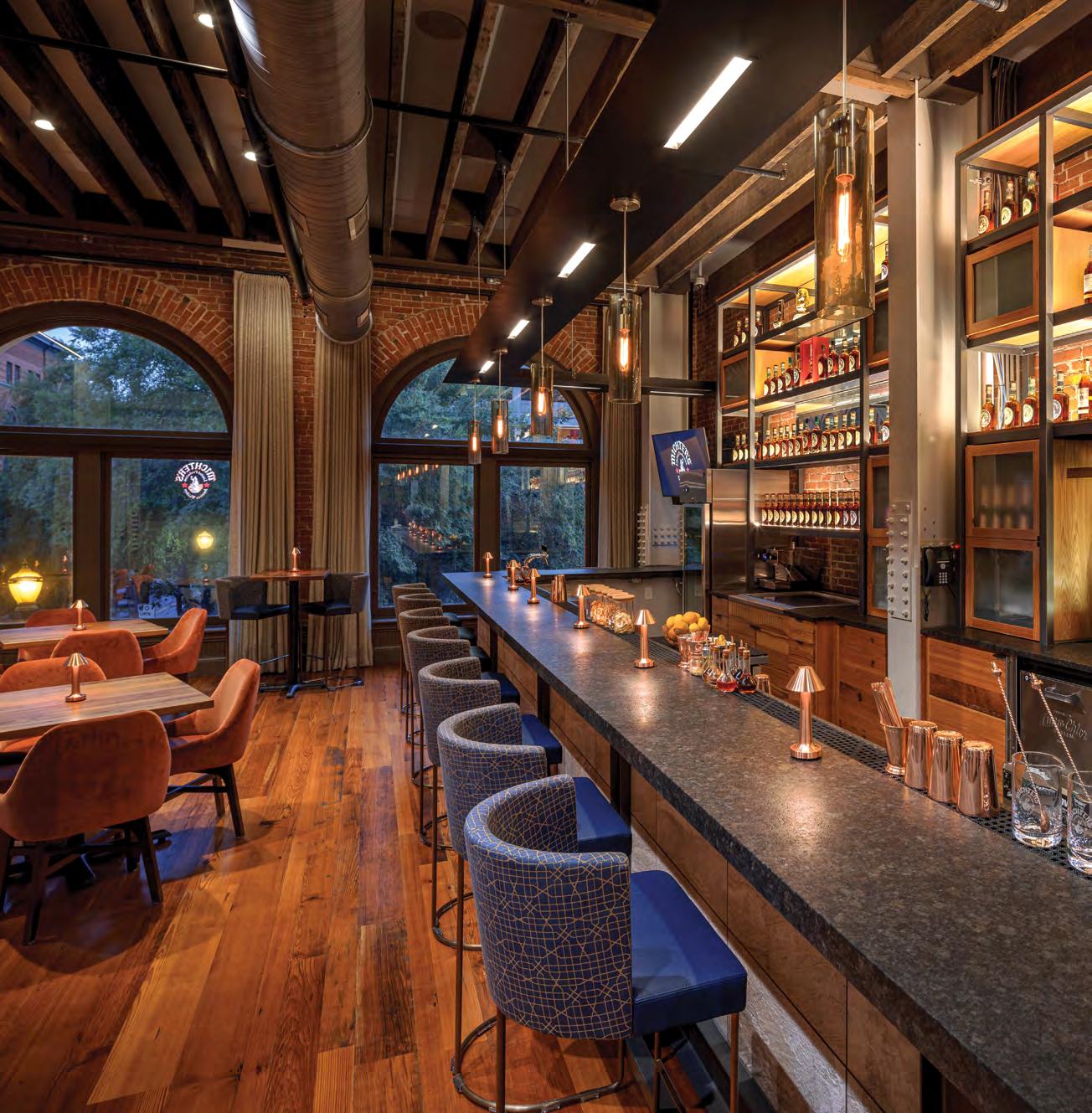
Has any American whiskey distillery, indeed any spirits producer on the planet, had such a meteoric rise over the last decade or two as Michter’s? With a legion of fans around the world, prices for their very limited aged Bourbons, Ryes and other offerings that can eclipse even those of the near-mythical Pappy van Winkle, and demand far exceeding supply, this is a whiskey producer on an everupward rise.
Like most overnight success stories, this one began many years ago. It started with a distillery called Shenk’s in Pennsylvania in 1753. The distillery was eventually sold and continued to operate for another century, but prohibition saw the doors shut. Later, it was home to a procession of owners before Lou Forman stepped in in the 1950s. He wanted a new start for the distillery and a new name to go with this new era. So he combined the names of his sons, Michael and Peter, and came up with Michter’s. Sadly, the operation did not survive, but in the 90s, an entrepreneur Joseph J. Magliocco with the help of his mentor, Richard Newman, was keen to establish a whiskey operation that would make “the greatest American whiskey, cost be damned!” The pair were very much aware of Michter’s, its fame, and subsequent demise.
Magliocco bartended and worked selling Michter’s and other spirits during his college years at Yale before going to Harvard Law School. Newman had served with the US Marine Corps (earning a Purple Heart) and subsequently built a career in the whiskey industry, eventually running Old Grand-Dad, Old Crow, and Old Taylor for National Distillers before becoming president and CEO of Austin Nichols, the distiller of Wild Turkey.
As for Pennsylvania Michter’s, the company declared bankruptcy in 1989, and Michter’s became an abandoned trademark. In the 1990s, Magliocco and his two brothers acquired the Michter’s name for $245. And so began the latest and most successful incarnation of Michter’s. After years of planning and preparation, the first new Michter’s whiskies hit the market in 2000. The early days saw material sourced from various distillers, but now they have opened not one but two operations: Michter’s Shively Distillery and Michter’s Fort Nelson Distillery (currently distilling with the legendary pot still system from Michter’s Pennsylvania) – three if one includes the 205 acres of farmland in Springfield.
Since 2016, they have been one of the few distilleries that has operated with a female master distiller, Pamela Heilmann, who was appointed in 2016. Heilmann handed the role to her assistant, Dan McKee. Dan works closely with Michter’s master of maturation, Andrea Wilson, a Kentucky Bourbon Hall of Fame member.
Michter’s has become especially famous for its small batch and single barrel products, rye and bourbon. Although ‘small batch’ has no official legal designation in the United States, Michters restricts their program to whiskies with a maximum production of twenty barrels. Others will sometimes release many thousands of cases of so-called small batch products. Michters’ strategy has proved immensely successful. In January 2023, Michter’s was named the Number 1’ Top Trending American Whiskey brand’ in the Annual Brands Report issued by Drinks International. A few months earlier, they were named the ‘Most Admired American Whiskey’ in a survey conducted across 25 countries.
As is well understood in distilling circles, heat causes whiskey to expand and contract, soaking in and out of the barrel (a cycle), allowing the liquid to absorb sugars in the wood. Very few distilleries practice heat cycling, the process of raising the barrel warehouses’ temperature to induce extra cycles over the year. This is an expensive practice, not solely the cost of the heating, but because it significantly increases the amount of whiskey lost to “Angel’s Share” evaporation. Michter’s is prepared to suffer this cost as they believe the practice significantly increases quality.
Michter’s also ensures that all their whiskies undergo chill filtering rather than the less effective carbon filtration. Different chill filtering protocols are used for each product as they do not believe in a ‘one size fits all’ approach.
Michter’s specifies that the wood used in constructing their barrels has been thoroughly air dried before use, sometimes for as long as 18 to 60 months. Toasting and charring are carefully supervised. The distillate is placed in the barrels at 51.5% ABV, considerably below the industry average of around 62.5% ABV. The Michter’s team believes this allows the concentrated sugars in the barrels to dissolve more easily. It means they will produce fewer bottles per barrel but believe that the “richer flavours” make it worthwhile.

One of Michter’s most beloved whiskies is their Single Barrel 10-Year Bourbon. This year is the first release of that wonderful bourbon since 2021. Master distiller Dan McKee and master of maturation Andrea Wilson believed although it was wonderful last year, it would become extraordinary with more aging. Magliocco observed, “At Michter’s the goal we strive for is to produce the greatest American whiskey. We’re grateful for all the understanding and patience that our loyal Michter’s fans have shown in waiting an additional year for the release of our 10 Year Bourbon.” Meanwhile, Andrea Wilson has spoken at length about the importance of patience, which this whiskey personifies.
They have also just released their 2022 Edition of the Celebration Sour Mash, the fourth ever Michter’s Celebration release and the first one since 2019. Only 328 bottles of the 2022 Edition of Michter’s Celebration will be released worldwide. Bottled at 56.4% ABV, the 2022 Edition is a blend of seven barrels, personally selected by McKee, who noted that “the seven whiskeys in this special blend range in age from twelve to over thirty years old.” Andrea Wilson added, “This whiskey is an exploratory journey of aged bourbons and ryes blended to perfection that leaves your palate captivated with its bold elegance. I am thrilled with this release and very proud of the Michter’s team and our efforts to produce the best American Whiskey.”

Michter’s also released their second US*1 Toasted Barrel Sour Mash Whiskey. The first was released in 2019. Andrea Wilson notes, “The 2022 Toasted Sour Mash release takes the Sour Mash expression and enhances it by adding notes of smoked honey and gingersnap cookies accentuated by toasted oak, all while honoring the sweet and spicy balance of our US*1 Sour Mash. Working on the Toasted series really brings forward the influence of the barrel and represents the dedication of the Michter’s team to continuously provide exceptional whiskey.”
Finally, for the bucket list of every American whiskey lover, Michter’s very occasionally offers a 20 Year Bourbon and special production items such as their 25 Year Rye and 25 Year Bourbon.
Michter’s, its current incarnation, may have a relatively short history, but it is already an illustrious one. Lovers of great American whiskey can’t wait to see how the next chapters of their story unfold.

WILD TURKEY 81
MICHTER’S US*1
KENTUCKY STRAIGHT BOURBON WHISKEY
Rich caramel with balanced vanilla, stone fruit notes, smoky depth, with an oak finish.
MICHTER’S US*1

KENTUCKY STRAIGHT RYE WHISKEY
Spice with peppery notes, citrus, butterscotch, oak.
MICHTER’S US*1 SOUR MASH WHISKEY

Warm toasted burnt sugar notes with spice, sweet, smoky fruit, candied cherries, and honeyed vanilla, remarkably elegant. Starts out like a bourbon, finishes like a rye.

Deep butterscotch and vanilla notes, hints of caramel and dried fruit with a ripened fruit finish.

Few, if any, Kentucky producers have been as important to the premium bourbon category as Wild Turkey. Despite this, it has maintained a somewhat humble presence, going about its business in an understated and pragmatic way. Not one to build its name through ultrapremium ultra-rare high-octane offerings, Wild Turkey’s name is engrained into premium bourbon mostly due to the quality of its regular releases. It’s no secret either: ask any bourbon afficionado worldwide what they would recommend as a gateway to the premium bourbon category and there is a very good chance Wild Turkey will be the first name off their tongue.
Wild Turkey’s success has a lot to do with its ethos: to premiumise bourbon and to educate consumers on the difference between other varieties of whiskey. This goal has differentiated it as a distillery in a number of ways, the first being transparency. With a website positively brimming with detailed information, it is refreshing to note the no-nonsense way it articulates the differences between its offerings. Processes are directly linked to physical characteristics, and the information is organised, so studying up doesn’t feel like a chore. It is clear that Wild Turkey takes their role as an educator seriously: it’s no easy feat to craft a resource equally suitable for beginners and experts alike!
Split into three collections—Core, Small Batch, and Limited Edition Master’s Keep—Wild Turkey also serves as the perfect gateway into the world of premium bourbon due to the fact it can be experienced as an organic ladder progression upwards. The Wild Turkey Bourbon is the usual entry point due to its tremendous value: not
many bottles of bourbon can be guiltlessly used in mixed drinks one night and then served neat to industry professionals the next. Despite its unassuming price tag, Wild Turkey Bourbon offers entrants to the category a true taste of what authentic premium Bourbon should be.
Next in the Core collection is the timehonoured Wild Turkey 101. Arguably the best representation of Wild Turkey’s ethos, the 101 is tremendously complex and multidimensional whilst remaining wallet-friendly. With a detailed spice vein from its high rye content, complex vanilla and caramel flavours from its six to eight years in oak, and a powerful flavour concentration from its higher proof, the 101 doesn’t just turn things up to 100 but to just beyond. It is a perfect embodiment of Wild Turkey’s down to earth approach to making premium bourbon accessible: this dram isn’t lacking in anything.
Whilst the 101 might best reflect the core values of Wild Turkey, it is by no means its pinnacle offering. Continuing the bourbon ladder is the barrel-proof small batch Rare Breed, the singlebarrel Kentucky Spirit, and the various Master’s Keep options. Also integral to Wild Turkey are its rye whiskeys, which include the Wild Turkey Rye, 101 Rye, Rare Breed Rye, and the Master’s Keep Cornerstone. Having its rye whiskeys in parallel to its bourbons allows for a similar educational experience and deep dive into the USA’s second most important category.
Another key factor that has made Wild Turkey so synonymous to bourbon is its dedication to tradition. One example of this is barrel char. Legally, bourbon must be aged in charred new


oak, a process that changes the nature of the wood and results in flavours such as brown sugar, caramel, and toffee. With more extensive charring comes vanilla, spice, and smoke. Wild Turkey exclusively uses American White Oak barrels with the deepest Number 4 ‘alligator’ char to create its signature profile of citrus, toffee, vanilla, and subtle smoke. To concentrate the flavour across its range, Wild Turkey also chooses to barrel its bourbon at a lower proof, meaning less dilution at the time of bottling. Whilst non-age statement bourbons are only required to spend two years in oak, every drop of Wild Turkey released to the market has seen at least six. It is this dedication to its principles that is at the very core of Wild Turkey’s vision.
Another of Wild Turkey’s core principles is its avoidance of genetically modified grains, making it one of very few distilleries to have remained
entirely GMO-free. This directly ties into Wild Turkey’s connection to its surroundings of Wild Turkey Hill. Sitting atop a limestone shelf on the Kentucky River, all water used at the distillery comes straight from the source. The limestone naturally purifies the water, freeing it of any iron or mineral influence that might impact flavour. Wild Turkey then uses the ‘sour mash’ process, whereby yeast from a previous mash is used for the fresh fermentation. After fermentation, the liquid mash is pumped into a forty foot high continuous still, and then into a “doubler” for a second fermentation to ensure the bourbon is as smooth as possible.
Despite being founded by the Ripy family in 1869, the name Wild Turkey didn’t come about until 1940. Ironically, it didn’t stem from its location at Wild Turkey Hill but from when a distillery executive brought along some
Left: American white oak barrels create Wild Turkey’s signature amber colour and bold flavour
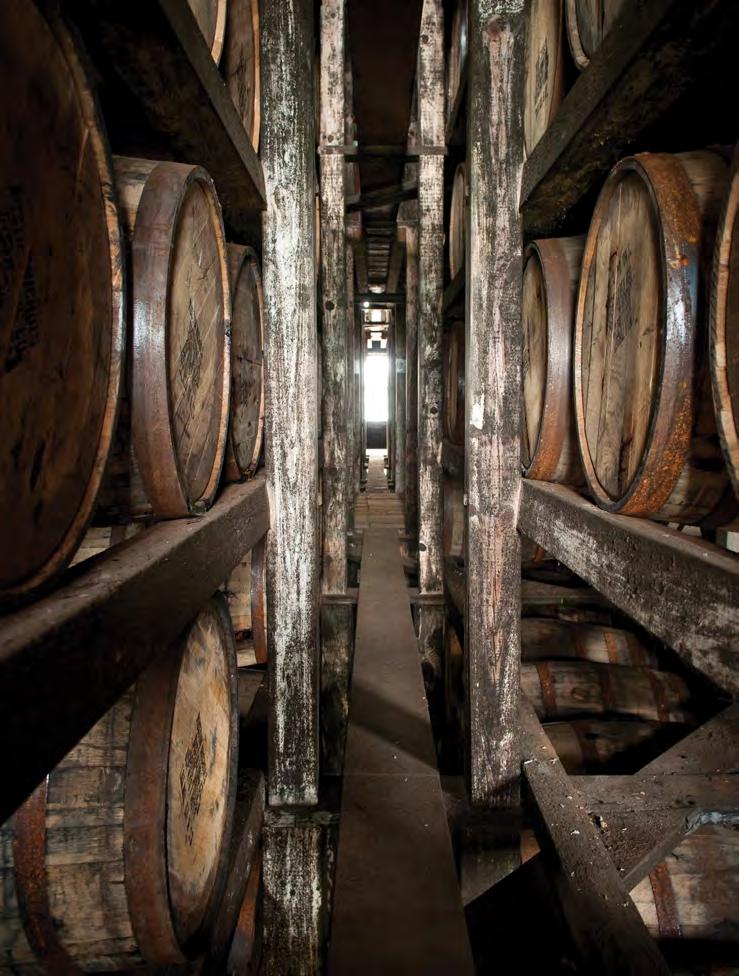
Below: The famous master distiller, Jimmy Russell, with his son, Eddie Russell
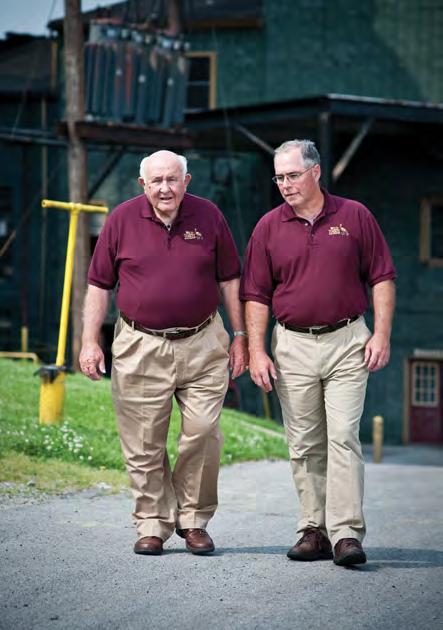
‘warehouse samples’ to an annual wild turkey hunting trip. They seemed to be a hit as, the following year, his friends insisted that he bring along “some of that wild turkey whiskey”. From that, the name was born.
In 1954, Jimmy Russell joined the company where he works to this day as master distiller and brand ambassador. The third master distiller for the brand, Russell learnt his craft from Bill Hughes and Ernest W. Ripy, the son of the original distiller. Since then, Jimmy’s son Eddie has also joined the ranks, along with Eddie’s son Bruce. It’s easy to forget that, despite its size, Wild Turkey is truly a family affair.
Whilst Wild Turkey might not be the flashiest premium bourbon on offer, its appeal should be exactly that. It is a distillery focused on producing consistently great whiskey at consistently great value, humble right down to its core. This is premium bourbon made for premium bourbon’s sake, intended to be trialed and enjoyed by all.
A taste explosion of vanilla and caramel, with hints of honey and orange. Deep vanilla with caramel and oak on the nose with a lingering finish with soft oak and notes of dried fruit.
A taste explosion of vanilla and caramel, with hints of honey and orange. Deep vanilla with caramel and oak on the nose with a lingering finish with soft oak and notes of dried fruit.

Warm, smoky flavours of grain and spice. Full of spring flowers, a touch of black pepper and almonds, mixed with layers of honey and dates. Long and lingering spice to finish.


Full, round body, layered with rich flavours of vanilla, almond, and honey. Aromas of rich oak and vanilla with notes of caramel and leather. The finish is long and smooth.


An exciting new whisky has landed on Australian shores. Bearface Whisky’s Elementally Aged Triple Oak Canadian Whisky brings a unique craft offering to Australian adventure-loving whisky drinkers.
Aged in real Canadian bear country of unexplored forests, lakes, and rivers, Bearface is elementally aged in the northern wilderness to deliver a dram of unique expression.
It’s a new adventurous whisky that works with nature and the power of the elements to deliver a liquid as wild, untamed and inspirational as the land itself.
There is every chance a grisly has curiously faced off the maturing dram while it sits in repurposed shipping containers deep in the Canadian woods.
It’s a blessing to whisky lovers the world over. The bears don’t know how good it is.
Along with the Canadian elements, Bearface is carefully crafted by a team of seekers, makers, coopers, blenders, mixologists, oak scientists and a master blender who inspire each other to challenge the norms of traditional whisky.
The right team and the perfect location create a whisky with smoothness, balance, long complexity of flavour and gentle spice.
The liquid reflects the nuances of nature and exploring these subtleties is part of the adventure. With each fluctuation it bends to innovation, embraces the unpredictable, and challenges how we think about whisky.
Imagine a whisky created at the behest of the elements. Elemental Ageing™ is the Bearface process that works with nature’s powers to deliver an expression unlike any other.
Bearface quietly ages in the untamed Canadian North country in hand-selected oak casks under a steel roof.

The steel is sensitive to temperature changes and its exposure to Canada’s vast temperature fluctuations of -35°C cold to a searing heat of over 40°C amplifies the interaction between wood and whisky as the casks expand and contract.
The extreme Canadian climate transforms the liquid inside and delivers a dram of unique terroir expression of time and place.
Essentially it is a whisky aged by the elements, an expression of nature itself.
The marriage of the elemental flavours from Bearface’s unique ageing process is taken to new heights through Bearface’s three types of oak casks.
Triple oak means this single grain whisky is first matured in ex-bourbon American oak barrels before ageing in French oak red wine casks and finished in air-dried for three years Hungarian oak.
The ex-bourbon American oak imparts flavours and characters of honey, butter and vanilla, delivering nuances of crème brûlée and marzipan.
The three vintage heavy red, tight grain French oak casks contribute fruity flavours of pear and cranberry with subtle hints of saffron, balsamic and apricot to the liquid. The French oak red wine casks also contribute a rich colour to the final whisky.
After being air-dried for three years, the tightgrained virgin Hungarian oak casks are toasted three ways for Bearface to experience its final stage of ageing in oak. The result is a spicy rye-like character, a hint of BBQ and gentle smoke and nuances of orange peel, black cardamom, burnt sugar and mandarin.
The complex combination of nature and oak delivers a great depth and expression with a breadth of flavour and character, pushing the boundaries of craft whisky making.
Master blender Andres Faustinelli, a veteran in crafted spirits and creator of award-winning whiskies, rums and mezcals, is the exceptional talent behind Bearface. He is renowned for transcending the boundaries of taste through innovative and intuitive whisky-making.

Faustinelli takes these three expressions, each with its flavours, complexities and colours, to create a Canadian whisky that stands alone. He carefully combines the rhythm of the seasons with barrelageing expertise to produce the bold flavour that is the Bearface signature offering.
“I wanted to approach whisky as a chef would when thinking about a dish, by layering flavours. This led me to our Oak trilogy. They each impart a different flavour to the whisky. The American oak delivers the ‘whisky canvas’, with subtle honey and fruity notes allowing an easy mellow entry, while the French oak is there to build the mid-palate with lots of dry fruit, lovely cranberry acidity and lots of ruby colours. The Hungarian oak finishes it all off and was my touch; it’s the backbone of the Bearface tannins, texture, and spice,”
Bearface Elementally Aged Triple Oak Canadian Whisky has won a slew of awards, including the prestigious Double Gold at the San Francisco World Spirits Competition 2022 and 2021, BC Distillery of the Year 2022, Best Canadian Whisky at the International Whisky Competition 2019 and Gold at the IWSC 2022 Awards.
Bearface has also been recognized for its unique packaging, using eco-friendly packaging materials and gained a following for its commitment to sustainability. The wood used in the finishing process is harvested sustainably, and renewable energy sources power the distillery.
Discover Bearface Elementally Aged Triple Oak Canadian Whisky for yourself and be transported to the wilds of Canadian bear country.

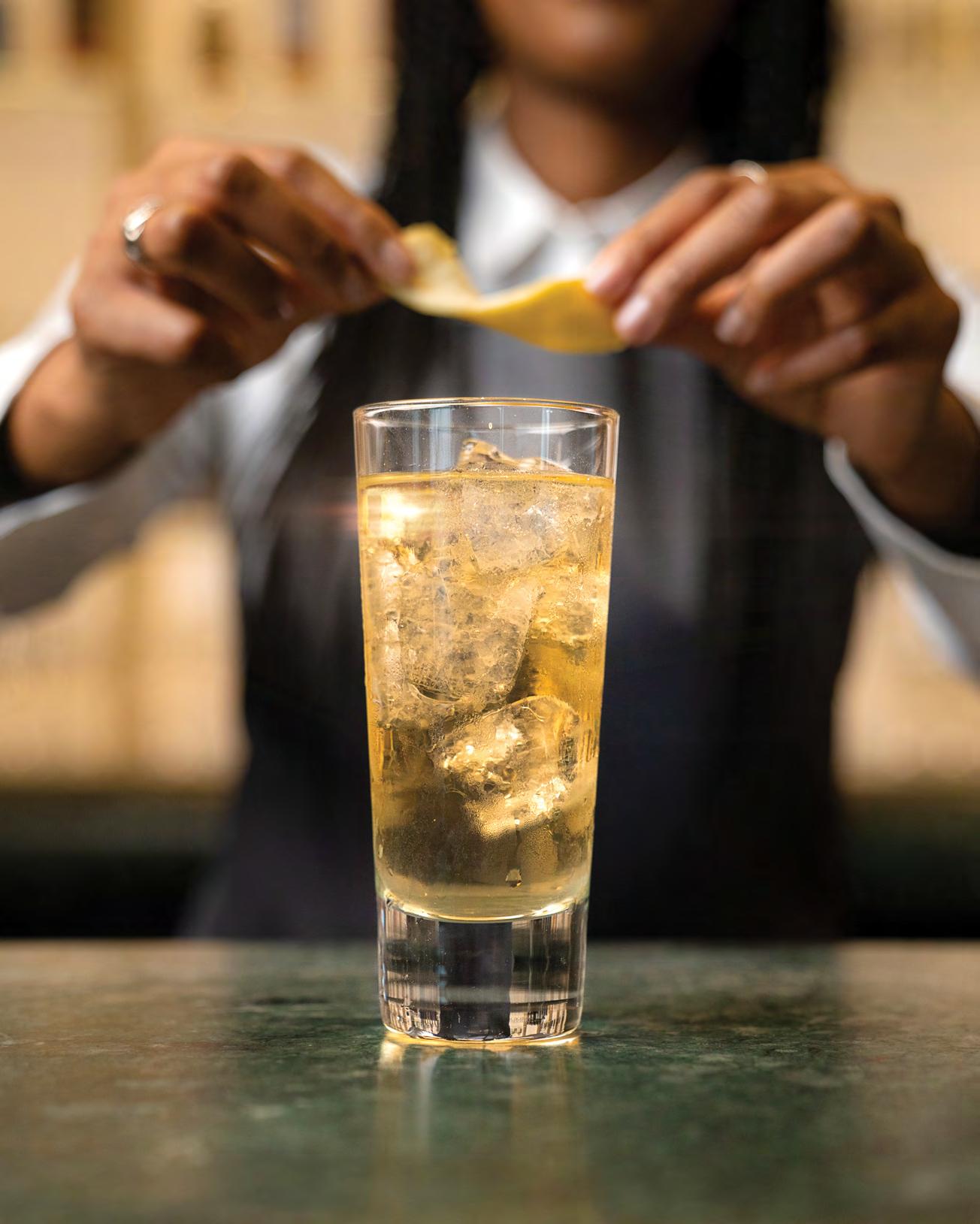
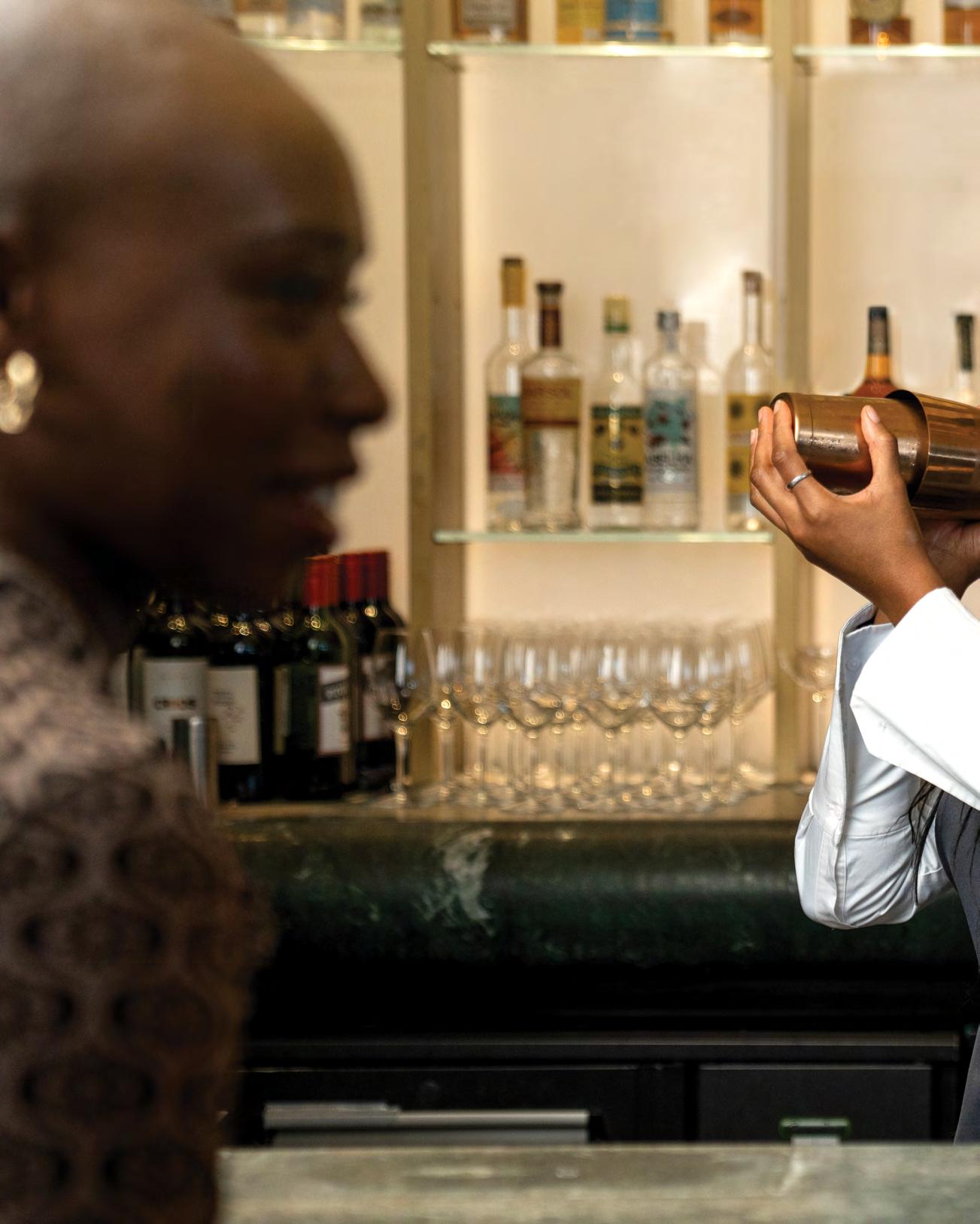
As the mercury drops, our palate shifts gears, searching for richer, deeper, and darker flavours that soothes the soul. Whiskies are the order of day as time spent maturing in oak barrels imbues the spirit with smooth, complex, and spicy characters which lay a concrete foundation for a good winter cocktail or mixed drink.
Spices, seasonal fruit, sweet syrups, and sherries are whiskies’ best friends in cocktails and can add layers of delicious richness and soothing aromas. These drink creations are simple and easy to recreate at home, or if ever in doubt, you can always go right with a good dram over ice or with your favourite Fever-Tree mixer.

GLASS: Old Fashioned glass
INGREDIENTS:
45ml 16-Year-Old Scotch Whisky
15ml Cherry liqueur
30ml Lapsang souchong tea
1 x Dash Aromatic bitters
1 x Sugar cube
METHOD: Place sugar cube and bitters in the bottom of a mixing glass and muddle with a spoon. Add remaining ingredients and stir with ice. Strain into an Old Fashioned glass with a large ice sphere or ice cubes

GARNISH: Maraschino cherries

GLASS: Nick & Nora
INGREDIENTS:
60ml Michter’s US*1 Bourbon
30ml Fresh lemon juice
20ml Orange curaçao
3-4 x Dash of bitters
METHOD: Shake all ingredients in a cocktail shaker with ice until chilled. Take a chilled Nick & Nora glass, use lemon juice for wetting the glass rim and afterwards dip into sugar. Double strain into the rimmed glass, straight up. Garnish with a long lemon peel.
GARNISH: Sugar rim and lemon peel


GLASS: Ceramic cup
INGREDIENTS:
45ml Single Malt Whisky
15ml Lemon Ginger & Honey syrup
10ml Fresh lemon juice
90ml Hot water
METHOD: Add ingredients to a ceramic cup and stir
GARNISH: Slice of ginger root and ginger snap biscuit
Inspired by the bear, this is their Canadian twist on a classic
GLASS: Rocks
INGREDIENTS:
60ml BEARFACE whisky
2 x Dashes of charred cedar bitters
5ml Maple syrup
METHOD: Stir all three ingredients in a mixing glass with ice
Strain into a rocks glass over large ice cubes
GARNISH: Orange peel twist
GLASS: Cocktail glass
INGREDIENTS:
40ml Basil Hayden® Kentucky Straight Bourbon Whiskey
30ml Lillet Blanc
30ml Aperol Aperitif

METHOD: Combine all ingredients over ice in a mixing glass. Stir and strain into chilled cocktail glass over large cube of ice and garnish
GARNISH: Grapefruit peel
GLASS: Coupe
INGREDIENTS
50ml The Gospel Straight Rye Whiskey
20ml Pinot Noir Vermouth
2 x Drops Whiskey Bitters
METHOD: Build all ingredients in a mixing glass, stir down with ice to the desired dilution and strain into a chilled coupe glass
GARNISH: Garnish with a Maraschino cherry or orange peel

GLASS: Tall
INGREDIENTS:
30ml Bourbon
Top with Fever-Tree Distillers Cola
METHOD: Add bourbon to a tall glass full of ice
Top with Fever-Tree Distillers Cola
GARNISH: Lime wedge

GLASS: Mug
INGREDIENTS:
30ml Archie Rose x ST. ALi Blasphemy Coffee Whisky
100ml Milklab Coconut Milk
20g Drinking Chocolate
30ml Water
1 x Dash Angostura Bitters
METHOD: Add all ingredients except Blasphemy Coffee Whisky to a mug. Microwave for 30 seconds, then stir until consistent. Add whisky and stir in. Garnish with whipped cream and toasted marshmallows
GARNISH: Whipped cream and toasted marshmallows

The drink being served is a classic whisky highball, which can be enjoyed on any occasion. It shows the versatility of a Whisky and how it can be enjoyed as a refreshing serve at any time of the year.

GLASS: Highball / Tall
INGREDIENTS:
45ml MORRIS Signature whisky
15ml Morris of Rutherglen Classic Muscat fortified Sparkling water
METHOD: Build inside a highball glass, add ice, stir to chill and top it up with sparkling water
GARNISH: Lemon wedge
It takes something special to make mixers sound sexy. It takes something even more special to normalise the entire premium mixer category. And it takes something magical to amplify that category from white to dark spirits. This is the Fever-Tree story, a company that hasn’t only changed the game for premium mixers but for premium spirits, a fact just about any craft gin fan will defend. Now, with its recently released Distillers Cola, Fever-Tree is turning its attention to premium whiskies and rums. More than just a high-quality alternative, Distillers Cola presents a dark-spirit specific option to a category that has not once had access to a cola made with mixing in mind. This isn’t just news for Fever-Tree and the premium mixer category but for dark spirits as a whole.
Despite being new for the category, this particular narrative isn’t new for Fever-Tree. Ever since pioneering the very premium mixer category itself in 2005, Fever-Tree has consistently been the leading voice in dictating what premium mixers can and should be, often leaving its competition to play catch up. Its importance to the category is unrivalled, a fact reflected by its 91 per cent control of Australia’s premium mixer market. This dominance is not unique to Australia: since its conception, FeverTree has consistently been considered the world’s number one premium mixer by both volume and value. In fact, bartenders worldwide have voted it as Drinks International’s top trending and best-selling mixer for the last nine years in a row.
Above all else, Fever-Tree’s success should be attributed to its quality: the difference between Fever-Tree and budget mixers is palpable. Its marketing campaign ‘if three-quarters of your drink is the mixer, mix with the best’ has struck a chord with the ever-growing swathe of educated drinkers who

are more sensitive to flavour and balance. As a result, the category has gone from not only height to height but from spirit to spirit.
Much like the rest of the Fever-Tree range, the Distillers Cola has been designed explicitly with mixing in mind. This means carefully balancing the flavour, texture, and sweetness of the cola such that it helps its accompanying spirit to sing. Balance is the key: less sweet and more delicate, Fever-Tree Distillers Cola is a product that will help shine a fresh perspective on your time-proven favourite whisky or rum… a stark contrast to mainstream soft drinks that are primarily used to mask a spirit’s flavour.
Beyond balance, the quality of ingredients is also integral to the mixer, something that has been at the very core of Fever-Tree and the subsequent premium mixer category since its conception. Featuring a combination of 11 naturally sourced ingredients, including Caribbean kola nuts, Mexican Tahitian limes, Sicilian lemons, and various distilled botanicals such as Jamaican pimiento berries and Madagascan vanilla, the Distillers Cola is as tied to traditional cola heritage as it is to its purpose as a mixer. Imagine an elegant profile of lime and spices leading to a subtle vanilla finish. Now imagine those flavours as a supporting act to your favourite dram of Scotch.
It’s important to note here that Fever-Tree is not attempting to create demand through its expansion into dark spirits. Instead, it is filling a demand that has always existed, and that is continuing to grow. BevTrack and IWSR data shows that mixing with Scotch and Irish whisk(e)y is increasing at a rate of 47 per cent, whilst mixing with US whiskey is growing at 58 per cent. Currently, whisky cola blends represent 28 per cent of all mixed drinks consumed. 28 per cent that up until now have yet to have access to a premium option.
The transparency infused into Fever-Tree’s ethos is also refreshing to see. The Distillers Cola, for example, is entirely free from artificial sweeteners and colours and only uses non-GMO-certified ingredients. The transparency of both provenance and recipe illuminates the very essence of FeverTree: a company proud of the quality of its products that wants its customers to understand why it makes the decisions it makes.
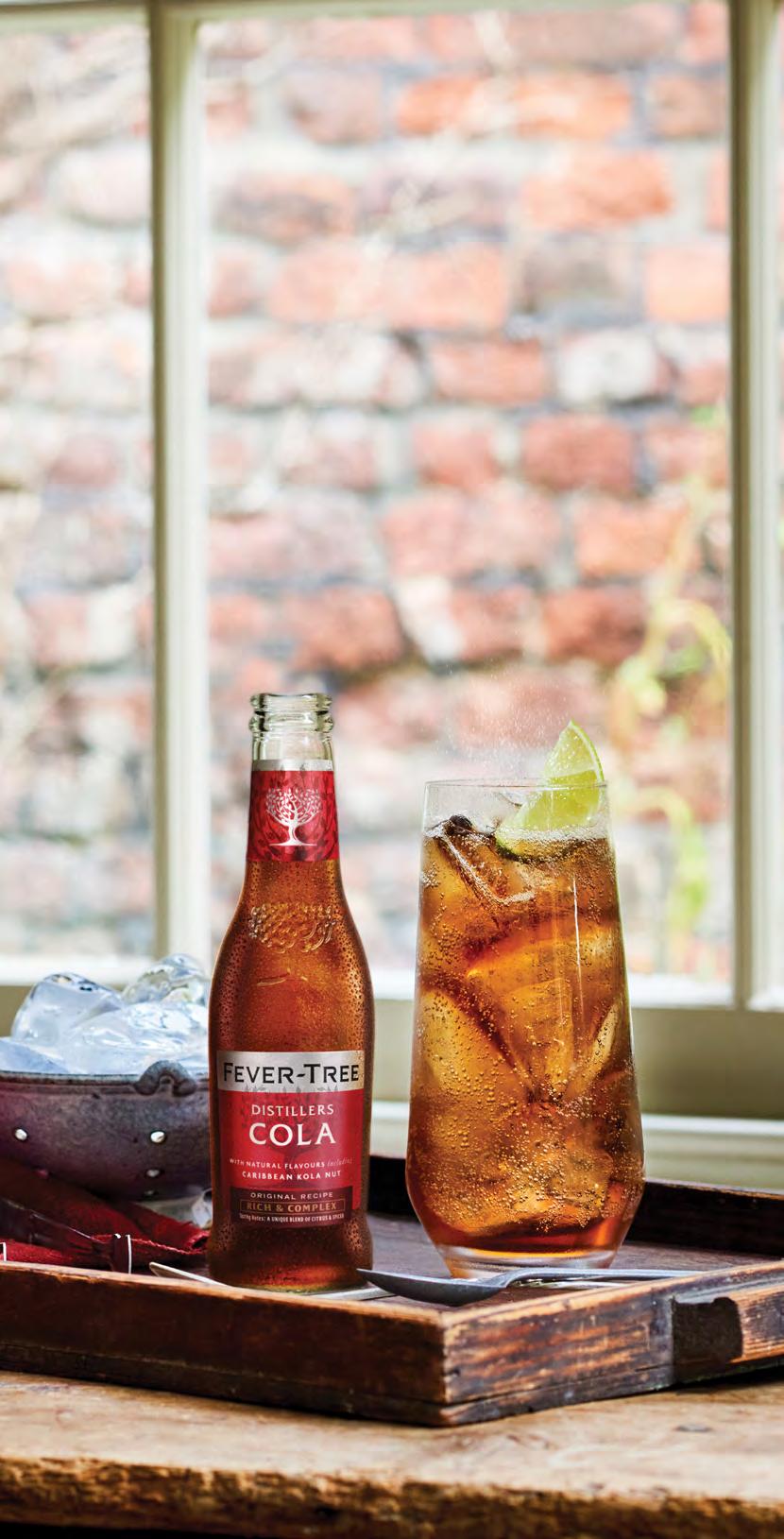
It also reflects Fever-Tree’s positioning as a premium brand. Fever-Tree is not striving to replace mainstream colas as a mixer for the majority but to provide an alternative for the ever-growing minority of flavour-conscious consumers: which probably includes you if you’re reading this. On top of that, the Distillers Cola also provides an alternative drinking option for whisk(e)y fans who wouldn’t dare reach for a commercial soft drink bottle. Despite the fact that Fever-Tree has done nothing but produce and release a premium cola, the implications could be that experienced whisky drinkers might begin incorporating it into their regular whisky experience, similar to adding the occasional ice cube or dash of water. Short of that, Distillers Cola is already well on its way to becoming a staple for social occasions where neat whisky isn’t an option.
Also forming part of the Fever-Tree dark spirit portfolio are the Premium Ginger Beer and Dry Ginger Ale. In typical Fever-Tree fashion, these ‘gingers’ go beyond what one might expect, with ingredients and provenance playing a crucial role. Most important of all are the varieties of ginger used.

Fresh green ginger from the Ivory Coast imparts a lemongrass-like freshness, Nigerian ginger builds up aromatic intensity, and Cochin ginger from India is uniquely warm and spicy. Each mixer has been crafted with different spirits and cocktails in mind, with the range itself being carefully considered. Instead of confusing customers with a plethora of options, the two-strong suite can be easily understood, applied, and enjoyed by all.
Rounding out Fever-Tree’s range are four sodas and, of course, its seven tonic waters. Cofounders Charles Rolls and Tim Warrillow had not only the vision for a premium mixer category but the drive as well. This drive has inspired them to travel the globe in search of the ideal ingredients to use in each of their mixers, all part of the no-compromise approach that has
defined Fever-Tree since launching in 2005. Since then, the Fever-Tree fever has spread to almost 80 countries, in all of which the same objective has remained: to provide a mixer option worthy of highquality spirits.
While various companies have attempted to claim a portion of its market share, Fever-Tree’s position as the premium mixer has remained unchallenged for the simple reason that it has always done its best. Despite this, Fever-Tree is continuing to progress forwards, carrying with it not just the success of the company but of the entire premium mixer category as well. And, in the wake of its every step, are ripples of change that are steadily affecting the industry as a whole.


Rich, rounded and balanced with citrus upfront and complex spice to finish.

A distinctive ginger flavour created by blending the world’s finest gingers. Added complexity comes from supportive citrus notes, resulting in an overwhelmingly clean finish – making this the perfect mixer for dark spirits.

A distinct, fresh ginger taste predominates. It is refreshing and clean-tasting without being overly sweet. As the liquid passes through the palate, the ginger will fill the whole mouth, leaving a warmth at the back of the throat.

A silky smooth texture created using the finest spring water (which has a low mineral content) and a high level of carbonation. There is no aroma, so it can effectively bring to life the flavours of the premium spirit it’s being mixed with.
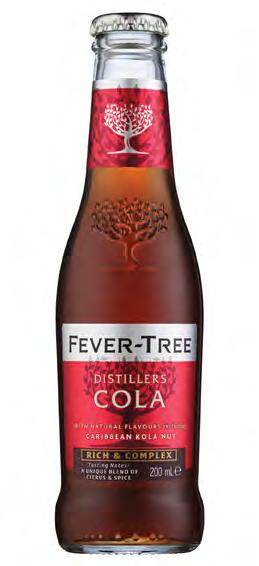
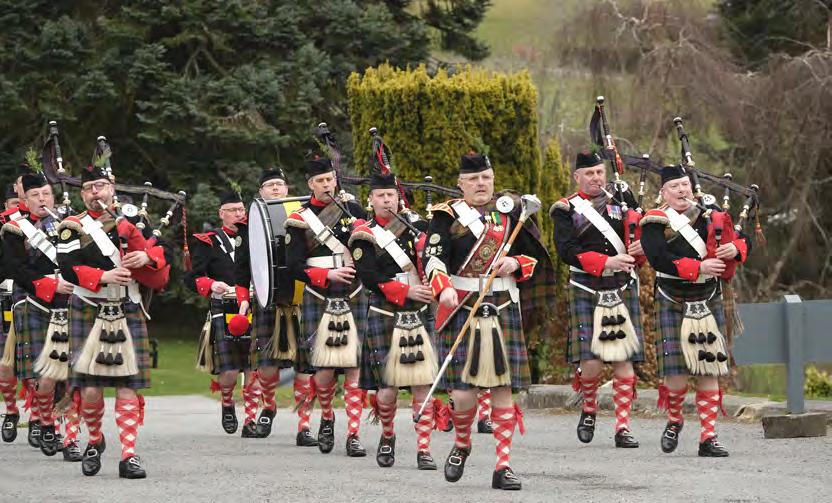
The Keepers of The Quaich is an international society that recognises: “those who make great whisky, and those who make whisky great”. The Keepers number just 2956 worldwide (at last count after the spring banquet this year), with around 80 new members being admitted each year – across two banquets, spring and autumn, held at Blair Castle, in the Scottish Highlands. The Society takes its name from a traditional Scottish vessel associated with friendship and the enjoyment of Scotch Whisky. The Quaich was traditionally used as a cup of welcome with a dram of whisky for a guest. It symbolises hospitality, which is at the heart of Scottish culture.
While the membership is not widely publicised, we know of four Australians that have been “Keepered” since the last pre-COVID edition of explore WHISKY in 2019, joining a venerable list that includes retailers, bar owners, importers and a, Australian prime minister.
At the northern hemisphere spring banquet in 2019, Spirits Platform CEO Ian Atherton was inducted into Keepers of the Quaich. Atherton has more than 30 years industry experience, starting back in the early 80’s where he worked for Gilbeys selling both Scotch and Australian whisky, before he moved to have a long career at Suntory selling Japanese whisky.


Today Atherton distributes a great range of premium
spirits and whiskies, including The Macallan, Highland Park, Bruichladdich, Naked Grouse and Glenrothes to name a few.
At the autumn 2022 banquet, William Grant & Sons Regional Managing Director Southeast Asia and Australasia, Satya (Sash) Sharma, was recognised for his work developing Scotch Whisky in Asia and launching projects such as The Distillers Library in Singapore, China, Vietnam and Bangkok. Sash has since returned home and taken up the role at CEO of Lark Distilling in Tasmania.
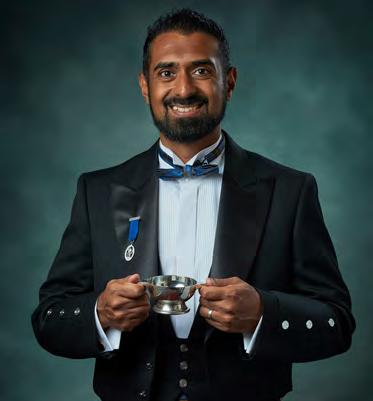
Richard Angove from Angoves Family Winemakers was inducted at the spring banquet this year and expressed his “deep honour and pride in joining a prestigious group dedicated to preserving and promoting its legacy”.
Angove Family Wine Group and Vintage House Wine and Spirits has enjoyed a long relationship with the Grant family and the Glenfarclas Single Malt Whisky brand, based on “shared business philosophies of longterm brand building and sales growth.”
The editor of this fine publication, Ashley Pini has been writing about whisky (among other drinks) since
1997, launching explore WHISKY in 2014. Ashley was recognised for his dedication to the promotion of Scotch whisky in magazines across Hong Kong, Singapore, Dubai and here in Australia and inducted as a Keeper at the spring 2022 banquet alongside legends of the industry such as Dave Broom and Brian Kinsman of Glenfiddich.

